
- Camping-Solaranlagen
- Solarmodule
Berger Smart Travel Faltbares Solarmodul 120 W inkl. Solar-Laderegler

Verfügbarkeit in deiner Nähe
Informationen & downloads, unser service.
Fachberatung
Mo. - Fr.: 9:00 - 16:00 Uhr
Frage zum Produkt
Sende uns dein Anliegen
Sichere Zahlung mit SSL Verschlüsselung
Kostenlose Rücksendung
Bis zu 5% Bonus mit der Berger Vorteilskarte
Produktdetails
Produktbeschreibung.
Berger Smart Travel Solar Dieses leichte und kompakte Faltmodul hat auch eine beachtliche Ausgangsleistung von 120 Watt (Wp). Die Zellen sind in stabilem Segeltuch-Gewebe (100 % Polyester mit Polychloridbeschichtung) fest vernäht. Am 5 m langen Verbindungskabel wird der Solarregler eingesteckt. Batterietyp einstellbar (Gel, AGM, Flüssig-Säure). Der mobile Solarregler hat ein Verbindungskabel mit angebrachten Krokodilklemmen, damit direkt ins Bordnetz eingespeist werden kann. CO2-freie Stromerzeugung.
- Leichtes und kompaktes Faltmodul
- Zellen aus 100 % Polyester mit Polychloridbeschichtung
- 5 m langes Verbindungskabel mit eingestecktem Solarregler
- Einstellbarer Batterietyp (Gel, AGM, Flüssig-Säure)
- Mobiles Solarregler mit Verbindungskabel und Krokodilklemmen
- CO2-freie Stromerzeugung
Technische Daten:
- Nennstrom 5,97 A
- Leistung: 120 W
- Tagesleistung: 480 Wh
- Leerlaufspannung UOC 24,64 V
- Max. Systemspannungsleistung 45 VDC
- Anzahl der Zellen 4 x 9
- Zellengröße 125 x 125 mm
- Maße offen (BxHxT): 1510 x 560 x 10mm
- Maße gefaltet (BxHxT): 430 x 560 x 35 mm
Lieferumfang:
- Faltmodul mit monokristalliner Zelltechnologie
- 5 Meter Anschlusskabel
- Krokodilklemmen
- eingearbeiteten Ösen
- ein Solarregler (PWM)
Eigenschaften
Bewertungen (52).
"Also, ich bin zufrieden, schnelle Lieferung top Ware. MfG Kelemen. "
"einfache Handhabung preißgünstig überall einsetzbar"
"Sehr schnelle Lieferung! Das 120 Watt Solarmodul macht einen stabilen Eindruck! Konnte es leider noch nicht einsetzen und ausprobieren!"
"Ich kann noch Nix sagen, weil ich es noch nicht ausprobiert habe. Ich werde sie an Ostern ausprobieren."
"schnelle lieferung und einfache handhabung, konnte es allerdings nur kurz auspropieren"
Zur Prüfung der Echtheit
ähnliche artikel.
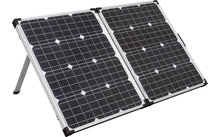
Kunden kauften auch

Mehr von dieser Marke
Berger Newsletter
5,- € Willkommensgutschein sichern
Soziale Medien

- Electronics
- Camping Solar Systems
- Solar Modules
Berger Smart Travel Solar Panel 120 W
Availability near you
Information & downloads, our service.

Order hotline
Mon. - Sat.: 8:00 - 20:00 hrs
Specialist advice
Mon. - Fri.: 9:00 - 16:00 o'clock
Secure payment with SSL encryption
Free return
Up to 5% bonus with the Berger advantage card
Product details
Product description, reviews (52).
"So, I am satisfied, fast delivery top product. MfG Kelemen." "Also, ich bin zufrieden, schnelle Lieferung top Ware. MfG Kelemen. "
"easy handling reasonably priced can be used everywhere" "einfache Handhabung preißgünstig überall einsetzbar"
"Very fast delivery! The 120 watt solar module makes a stable impression! Unfortunately I have not yet been able to use it and try it out!" "Sehr schnelle Lieferung! Das 120 Watt Solarmodul macht einen stabilen Eindruck! Konnte es leider noch nicht einsetzen und ausprobieren!"
"I can't say anything yet because I haven't tried it. I will try it out at Easter." "Ich kann noch Nix sagen, weil ich es noch nicht ausprobiert habe. Ich werde sie an Ostern ausprobieren."
"fast delivery and easy handling, but could only try it out briefly" "schnelle lieferung und einfache handhabung, konnte es allerdings nur kurz auspropieren"
To verify the authenticity
Similar items.

More from this brand

Berger Newsletter
Secure 5,- € welcome voucher
Social media

- Patio, Lawn & Garden
- Generators & Portable Power
- Solar & Wind Power
- Solar Panels

Image Unavailable

- To view this video download Flash Player
PAXCESS RM120 120 W 18 V Portable Solar Panel with USB Output for Camping
About this item.
- Perfect for outdoor camping and off-the-grid phone charging, the portable solar panel lets you gain electricity anywhere
- Cleanly produces 120 watts of power at 18 volts, converting 23 percent of sunlight to safe energy ready for you to use
- Equipped with USB QC 3.0 and Type C outputs for fast charging; Folds to a compact size for easy travelling
- Adjust the integrated kickstand to reach the optimal angle for light collection, ensuring you get up to 25 percent more sunlight than flat laying
- Recharges PAXCESS ROCKMAN 200-Watt and 300-Watt solar generators and other off-grid inverters
Similar items that may ship from close to you

Compare with similar items
From the brand.
How we got our start
What makes our product unique, why we love what we do, what's in the box.
- USB,Kickstand
Product guides and documents
Videos for this product.

Click to play video

Solor panal
Miguel Rivera
Paxcess Portable Solar Panel for RV & Outdoor Camping

Customer Review: Awesome portable solar panel system!
Customer Review: Value buy.
Product Description

The Paxcess Portable Solar Panels Provide Utility for a Multitude of Activities
Paxcess 120W portable solar panel is a fantastic way to provide power anywhere you need it. A portable solar panel kit connects your RV, trailer, or campsite to a free and renewable energy source. Solar power is safer and quieter than a generator and doesn’t require fuel to operate. It’s a fantastic solution for your off-grid power needs, and a great investment in your long-term safety and comfort when traveling.
What kind of solar generator can be charged by PAXCESS 120W Solar Panel?
A: Our Paxcess 120W portable solar panel can compatible with most solar generator on the market
DC5.5*2.5mm to DC5.5*2.1mm cable: for ROCKPALS 250W/500W, PAXCESS ROCKMAN 300W /500W portable power station;
DC aviation cable: for ROCKPALS 300W portable power station;
8mm DC connector: for Jackery Explorer 160/240/500, PAXCESS 330W portable power station
DC 3.5*1.35mm connector: compatible with Suaoki portable generator
Warmly Notice: Solar charge times vary and are dependent on many factors such as elevation, temperature, time of year, angle and position to the sun.
Specification:
Peak Power: 120W
Cell Efficiency: 23%
Power Voltage: 18V
Power Current: 6.6A Max
Output Port: USB Quick Charge 3.0 (24W Max) / Typc C (18W Max)
Product information
Looking for specific info, customer reviews.
Customer Reviews, including Product Star Ratings help customers to learn more about the product and decide whether it is the right product for them.
To calculate the overall star rating and percentage breakdown by star, we don’t use a simple average. Instead, our system considers things like how recent a review is and if the reviewer bought the item on Amazon. It also analyzed reviews to verify trustworthiness.
Customers say
Customers like the quality, connectivity, charging, and portability of the solar panel. For example, they mention it's well constructed, easy to carry, and lightweight. Some are satisfied with compactness, and value. That said, opinions are mixed on accessories.
AI-generated from the text of customer reviews
Customers like the quality of the solar panel. They say it's well constructed, sturdy, and built to withstand weather. Customers also mention that the panel and cloth material are good.
"...It has stood up well , and I am interested in purchasing another if it gets back to what I paid for it...." Read more
"...USPS or UPS gets a little frisky in the handling, though the product is very sturdy so it can probably take some abuse...." Read more
"...Build is robust and seem more durable than another folding solar panel that I tried...." Read more
"...That being said the panels seem to be constructed well and the legs are more sturdy than others I have seen...." Read more
Customers generally like the connectivity of the solar panel. They say it works well to charge their power bank easily on a cloudy day, and has good output. Some customers mention that the connection works but would be difficult to connect in parallel.
"...Overall, I'm not impressed with this, does the job OK , but the other brand seems lighter, more efficient and comes with a lot more plugs and..." Read more
"...This panel works well and there is nothing wrong with it as long as you are not really expecting a 120 watt solar panel. It's not for sure...." Read more
"...It did work well for my application , and I used it nearly every day for 3 weeks straight and again for another 2 weeks...." Read more
"...It worked our great. It was able to maintain the operation and charge the battery that powers the refrigerator at the same time...." Read more
Customers like the charging of the solar panel. They say it has good charging efficiency, charges everything surprisingly well, and quickly recharges. Some customers also mention that it has a great power output, even on a cloudy day.
"...The usb ports work great by themselves and charge my phone in about twenty minutes ...." Read more
"...It does have a usb slot in addition to the cords you need to plug into what you are charging...." Read more
"...Overall, the Paxcess 120W solar panel is expected to charge decently well , but I am unfortunately not able to fully push them to the limit because..." Read more
"... Has USB C charging (18W max)- 19V output, most others are 13 V or soCons:-..." Read more
Customers find the solar panel easy to carry around. They also say it's lightweight, compact, and solid.
"It's light weight to carry but when fully open and trying to move it around it's awkward and the leg are not as sturdy as I would like them to be...." Read more
"...Their 60W panel is much lighter , compact and efficient...." Read more
"...Others generate about same output w/ 100W rating, lighter , more connectors, but more expensive." Read more
"... Light weight & in Small Package vs the aluminum glass panels = the way to go for portability." Read more
Customers like the compactness of the solar panel. They mention that it's small enough to put in their camping bin, takes up no space in the car, and is pretty portable. Some appreciate the lightweight design and convenient built-in case.
"...Their 60W panel is much lighter, compact and efficient...." Read more
"...Anyways, they are foldable and take up no space in the car . I'm looking forward to setting them up during primitive camping and having power." Read more
"...Foldable design makes the panel portable, easy to stow , and protected from dust-..." Read more
"The portability of the panel is excellent . Easy to set up and use this panel...." Read more
Customers like the value of the solar panel. They say it's a decent buy and works better than expected.
"I have tested this unit extensively and found that its capable of a great deal . On a cloudy day it had great power output...." Read more
"...design, features, and additional accessories, the Paxcess 120W is a decent buy ." Read more
"This product is better than most and the price is 👍 ..." Read more
"...matched the output of a couple of bigger name brands at a very reasonable price ...." Read more
Customers are mixed about the accessories. Some mention that it comes with most connectors and adapters for various devices. However, some customers say that it does not come with connectors for Andersen adaptors and that it only has pre-attached proprietary connectors.
"...OK, but the other brand seems lighter, more efficient and comes with a lot more plugs and adapters so I can connect it to other devices...." Read more
"...With a thoughtful design, features, and additional accessories , the Paxcess 120W is a decent buy." Read more
"...Unfortunately it does not come with connectors for Andersen adaptors but I found work around by purchasing a 3rd party adaptor." Read more
"...Pros:- Like the fact that it has most of the common connectors but not as much as others.- Has USB C charging (18W max)-..." Read more
Customers are dissatisfied with the performance of the solar panel. For example, they mention that it barely works, there's no indicator light to say that it's charging, and that the output of both panels drops to zero.
"...When you connect it to another panel the output of both panels drops to zero . That should be stated up front...." Read more
"This solar panel doesn't work there's no indicator light to say that it's charging so when I assumed it was charged and plugged it into something it..." Read more
"... Panel barely works anymore for if the cable is even slightly moved or touched it stops charging, so if I'm away during charging hours, entire days..." Read more
"...The biggest disappointment however, is that the unit did not work right out of the box , there was plenty of sun and aside from all the previous..." Read more
Reviews with images

- Sort reviews by Top reviews Most recent Top reviews
Top reviews from the United States
There was a problem filtering reviews right now. please try again later..
- Amazon Newsletter
- About Amazon
- Accessibility
- Sustainability
- Press Center
- Investor Relations
- Amazon Devices
- Amazon Science
- Sell on Amazon
- Sell apps on Amazon
- Supply to Amazon
- Protect & Build Your Brand
- Become an Affiliate
- Become a Delivery Driver
- Start a Package Delivery Business
- Advertise Your Products
- Self-Publish with Us
- Become an Amazon Hub Partner
- › See More Ways to Make Money
- Amazon Visa
- Amazon Store Card
- Amazon Secured Card
- Amazon Business Card
- Shop with Points
- Credit Card Marketplace
- Reload Your Balance
- Amazon Currency Converter
- Your Account
- Your Orders
- Shipping Rates & Policies
- Amazon Prime
- Returns & Replacements
- Manage Your Content and Devices
- Recalls and Product Safety Alerts
- Conditions of Use
- Privacy Notice
- Consumer Health Data Privacy Disclosure
- Your Ads Privacy Choices
7globetrotters.de
Expedition Großfamilie: Outdoor. Offroad. Reisen. LKW.
- Ausbau & Strom / Werbung
Faltbares Solarpanel im Test: Autarke 120-W-Stromversorgung
von Tom · Veröffentlicht Samstag, 01. Oktober 2022 · Aktualisiert Sonntag, 02. April 2023
Der Test unseres faltbaren Solarpanels und der Akkubox als autarke Solaranlage zeigt zuverlässigen Solarertrag bis 120 W.

Faltbares Solarpanel Test Wohnmobil
Faltbares Solarpanel als Photovoltaik-Test
Bisher habe ich mich um eine feste Photovoltaik-Anlage auf dem Wohnmobil ja gedrückt. Wir brauchen durch die Gasanlage einfach kaum Strom. Und wenn, dann eher mal hier und mal dort. Ich habe zwar natürlich die dicken Anschlusskabel für die Solaranlage schon auf dem Dach liegen. Aber mich trotzdem für eine mobile Lösung aus tragbarer Akkubox für die Stromversorgung mit 5, 12 und 230 Volt und passendem, faltbaren Solarpanel mit 120 W Ladeleistung entschieden.
Hab sowieso noch nie verstanden, warum es der allgemeine Standard ist, die Solaranlage flach und fest auf dem Wohnmobildach zu installieren. Klar, am Äquator ist das super. Aber in unseren nördlichen Breiten steht die Sonne in drei Jahreszeiten flach am Himmel. Oder wollen alle nur im Sommer autark sein?
Niemand würde hingegen auf die Idee kommen, ein faltbares, mobiles Solarpanel flach hinzulegen. Dennoch interessiert mich, wie viel Solarertrag eine fest installierte Solaranlage auf dem Dach des Wohnmobils bringen würde. Vor allem dann, wenn wir für unsere Autarkie auch mehr Strom bräuchten: In der dunklen Jahreszeit.
„Aufbau“ des faltbaren Solarpanels
Für den Test der tatsächlich erzielbaren Leistung meines 120-W-Solarmoduls simuliere ich also erstmal die klassische Aufdach-Lösung. Nutze sogar den Vorteil des schrägen Aufstelldachs mit einem besseren Anstellwinkel zur Sonne. Eigentlich super Voraussetzungen für einen besseren Solarertrag als mit einem flach liegenden Modul.
Faltbares Solarpanel im Test: Aufbau
Der Aufbau des faltbaren Solarpanels ist denkbar einfach. Die verpolungssicheren Stecker zusammenclipsen. Und schon kann der gelb markierte Ladestecker hinten in die Akkubox gesteckt werden. Der Laderegler ist in meiner mobilen 230-Volt-Stromversorgung schon integriert. Das System ist also völlig autark und nicht an ein Fahrzeug gebunden.
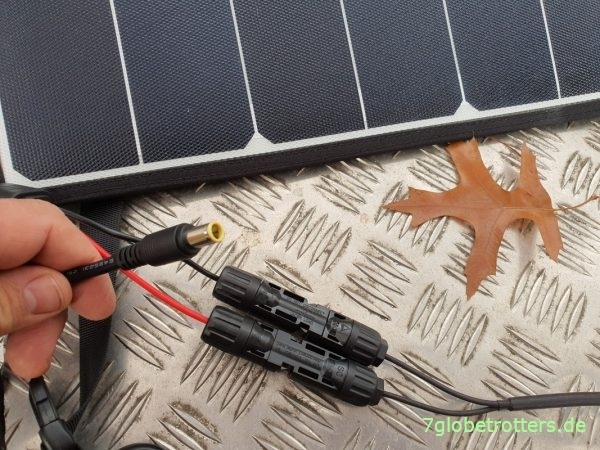
Faltbares Solarpanel im Test: Aufbau / Anschluss
Test des faltbaren Solarpanels auf dem Wohnmobil-Dach
09:00 Uhr beginnt der Test des Solarpanels auf dem Aufstelldach bei einem Ladezustand der Akkubox von 60 %. Wir haben Ende Oktober. Der Himmel ist locker bedeckt. Manno, nur 2 W Leistung. Aber die Solaranlage funktioniert.
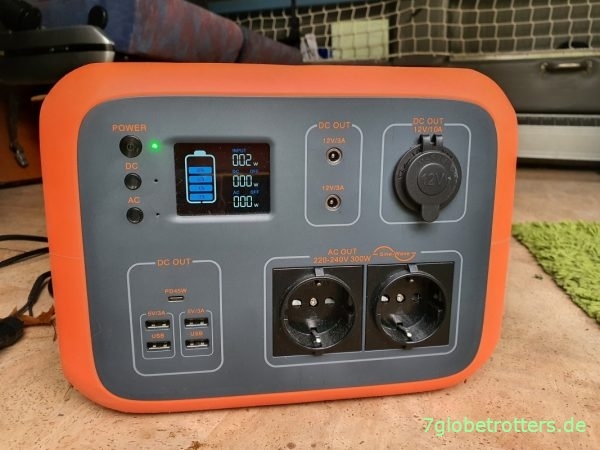
Solarpanel Test: 2 W Solarertrag
Der Himmel zieht zu. Das wird heute keine Werbeveranstaltung für eine Solaranlage . Egal, jetzt habe ich den Test des Faltmoduls angefangen. Dann ziehe ich das auch durch. Stelle mir extra den Stundengong, um Wetter und Solarertrag pünktlich zu erfassen. Soll ja so eine Art Stichprobe werden.
- 10:00 Voll bedeckt, leichter Nieselregen, 1 W
- 11:00 Leichter Regen, bedeckt, 1 W
- 12:00 Leicht bewölkt, 3 W
- 13:00 Sonne scheint aus 30° quer auf 3/4 des Solarmoduls, Regentropfen und Blätter auf dem Modul, 6 W
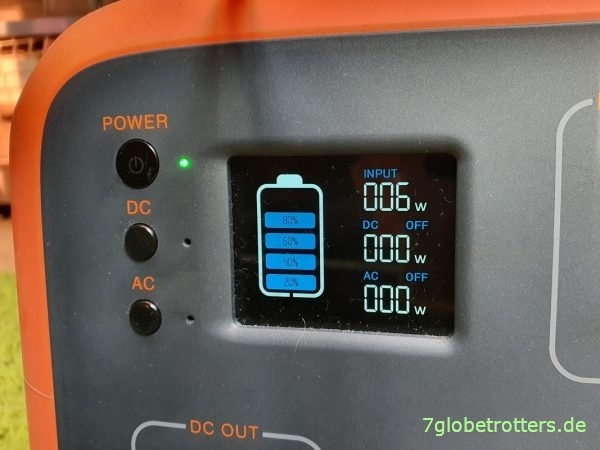
Faltbares Solarpanel Test: 6W Solarertrag bei bisschen Seitensonne
Solarertrag bei Solaranlage auf dem Dach
Am Nachmittag wird das Wetter zwar besser. Aber jetzt rächt sich die für ein festes Solarpanel ungünstige Position des Wohnmobils. Klar könnte ich das faltbare Solarpanel einfach in die Sonne legen. Aber heute will ich ja rauskriegen, ob sich ein fest verbautes Solarpanel auf dem Wohnmobildach lohnen würde. Oder ob das faltbare Solarmodul besser ist.
Mit einem fest montierten Solarpanel auf dem Dach müsste ich jetzt also den Bus umparken. Weg von den Bäumen. Mit dem Bug nach Süden. Aber ich stehe nun mal so schön. Und ich werde sicherlich nicht einen Liter Diesel für die Standheizung zum Vorwärmen des Motors verbrennen, um ein bisschen mehr Solarertrag zu haben. Und Kaltstart für zehn Meter geht schon gar nicht.
Dennoch werde ich das Solarmodul weder irgendwo anders hin tragen . Noch den Bus umparken. Sondern wie ein echter Wissenschaftler weiter stur meinen Test des faltbaren Solarpanels durchziehen und meine Aufzeichnungen führen:
- 14:00 Sonne scheint, heiter, Solarmodul liegt voll im Schatten, 6 Blätter und Regentropfen auf dem Modul, 4 W
- 15:00 Bewölkt, trüb, Schatten, Regentropfen und 7 Blätter auf dem faltbaren Solarpanel, 1 W
- 16:00 Heiter, Modul im Schatten, 1 W
- 17:00 Dämmerung, 0 W Ladung, Versuchsabbau
Beste Position der Solaranlage
80 % leistung im herbst mit dem faltbaren solarpanel.
Da sieht man mal, dass eine feste Solaranlage bei Regenwetter überhaupt nix bringt. Anders ist das, wenn ich das mobile, faltbare Solarpanel für einen Test in die Sonne stellen kann. Dank 4 integrierter Stützen steht das Solarpanel alleine auf der Wiese.
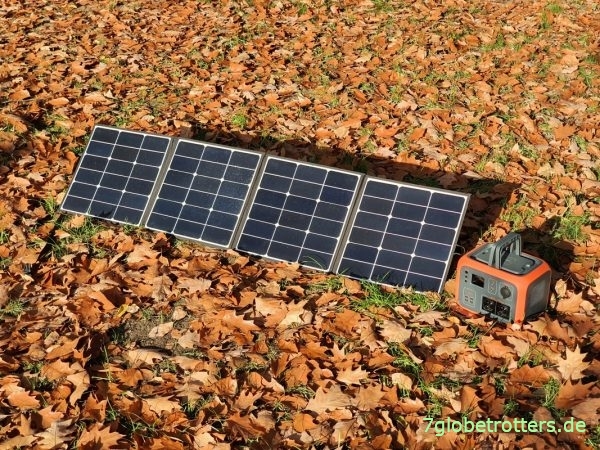
Test des faltbaren Solarpanels 120 W
Jetzt sieht der Solarertrag mit dem faltbaren Solarpanel mit einer Nennleistung von 120 Watt schon anders aus. Trotz der tiefstehenden Spätherbstsonne im November liegen 96 Watt Ladestrom an. Super. Das sind 10 Watt mehr als an der Steckdose. Nur eben völlig autark. Bei so einem Solarertrag lädt die Solartasche die Akkubox in ca. 5 Stunden von 10 auf 100%.
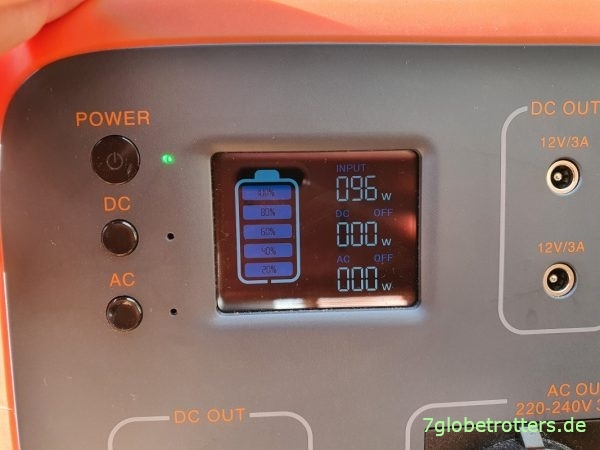
Solarertrag des faltbaren Solarpanels im Herbst
Möglicher Jahresertrag mit dem mobilen Solarpanel
Also wenn Anfang November schon 96 Watt Ladestrom an der Akkubox anliegen, werde ich wohl im Sommer auch mal die 120 Watt Nennleistung knacken. Wenn ich mich allerdings zum Fotografieren vor das Modul stelle und mein Schatten auf eine der 4 faltbaren Platten fällt, sinkt der Solarertrag sofort auf 10 Watt.
Der Test das faltbaren Solarpanels zeigt aber, wie wichtig die optimale Ausrichtung der Module nach der Sonne ist. Muss gleich mal mit ein paar Rohdaten des Deutschen Wetterdienstes herumspielen und die mittlere Sonnenscheindauer für die einzelnen Monate in den letzten 10 Jahren ausrechnen.
Wenn ich demnach mein faltbares Solarpanel immer optimal ausrichten würde, könnte ich in unseren Breiten übers Jahr verteilt 1.846 Sonnenstunden nutzen. Theoretisch sind also mit einem gut positionierten 120-Watt-Solarpanel 200 Kilowattstunden Ladestrom pro Jahr drin (1.846 h x 120 W/h = 221 kWh).
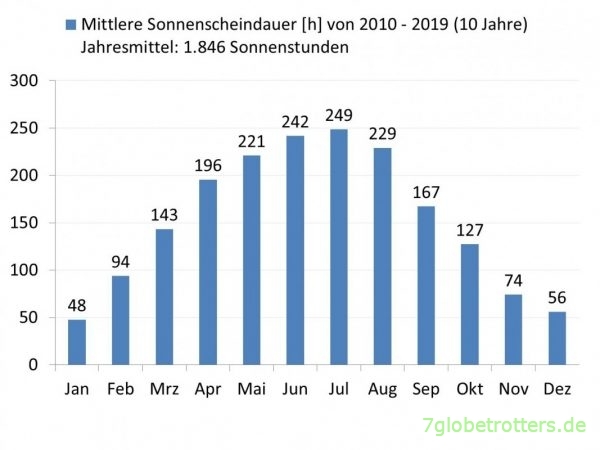
Mittlere Sonnenscheindauer 2010-2019, Dresden
Winter-Test des Solarpanels und der Akkubox
An einem klaren, knackig frostigen Wintertag habe ich das Laden der Powerbox mit dem Solarpanel getestet . Durch den flachen Sonnenstand musste ich die Solarmodule fast senkrecht aufstellen.

Faltbares Solarpanel 120 W: Test am Wohnmobil
Bester Platz fürs Solarmodul am Wohnmobil
Den besten Solarertrag erzielt man eben mit einem mobilen, faltbaren Solarmodul für die Stromerzeugung . Das laufende Ausrichten nach der Sonne macht zwar ein bisschen Arbeit, bringt aber das optimale Ergebnis bei vertretbarem Aufwand.
Der beste Platz für das faltbare Solarmodul ist aber hinter der Windschutzscheibe. Da heizt sich der Bus vor allem im Sommer nicht so auf und es gibt einen vollkommen ausreichenden Stromertrag. Das war auch der Grund, warum ich genau dieses Solarpanel habe. Die aufgeklappte Solartasche passt mit einer Größe von 196 x 42 cm nämlich genau hinter die Frontscheibe im Vario. Viel größer geht nicht.
Das Solarmodul hinter der Windschutzscheibe kann ich zudem auch stehen lassen und mit der Familie wandern gehen. Zusammengeklappt in der Solartasche sind die Module nur 42 x 42 cm groß und passen hinter den Fahrersitz.

Faltbares Solarpanel hinter der Frontscheibe
Kosten, Vor- und Nachteile des faltbaren Solarpanels
Was kostet solarstrom aus der tasche.
Klar, die mobile Solaranlage ist nicht billig . Faltbares Solarpanel und Akkubox kosten mehr als eine fest verbaute Photovoltaik-Anlage mit Laderegler. Die Zusatzbatterien sind im Wohnmobil ja meist sowieso vorhanden. Aber so eine mobile Lösung wie mit der Solartasche ist dafür flexibler einsetzbar und auch eine Sicherheit bei Stromausfall.
Und wenn ich für bestimmte Geräte auch zu Hause nur noch Solarstrom nutze, habe ich die Kosten der Solaranlage irgendwann wieder rein. Mittlerweile lade ich mit dem Solarpanel die Akkubox das ganze Jahr über. Da lohnt sich das Set zur eigenen Stromerzeugung auch. Ab 4.000 selbst erzeugten Kilowattstunden ist der Preis für die vollkommen autarke Anlage aus faltbarem Solarpanel und tragbarer Akkubox jedenfalls wieder drin (900 € für die Anlage / 0,23 eingesparte Euro pro kWh aus der Steckdose = 3.913 h).
Unbezahlbar ist allerdings die Unabhängigkeit. Denn Strom von der Sonne ist umsonst . Und die Li-Ion-Akkubox hat eine Lebensdauer von sicherlich 2000 Zyklen. Das wären bei meiner Nutzung etwa 10 Jahre kostenloser Strom von der Sonne. Wenn die Akkubox jedesmal 450 Wh abgibt, macht das über die Lebensdauer der Akkubox eine Stromproduktion von mindestens 900 Kilowattstunden (2.000 Zyklen x 450 Wh = 900 kWh). Aber vielleicht hält die Box ja auch länger als 2000 Ladezyklen. Keine Ahnung. Das wird die Zeit zeigen.
Vor allem aber gewinne ich neben dem kostenlosen Solarstrom zu Hause viel Unabhängigkeit im Urlaub. Denn da will ich mit dem Wohnmobil vollkommen autark sein.
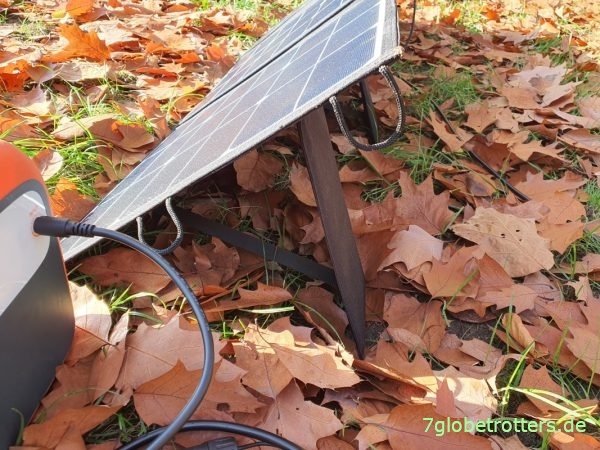
Aufbau des faltbaren Solarpanels 120 W
Kohlendioxideinsparung mit dem Solarpanel
Bei der Herstellung eines Lithium-Ionen-Akkus mit 0,5 Kilowattstunden entstehen ungefähr 50 kg Kohlendioxid (vgl. Wikipedia, CO2-Bilanz von Li-Ion-Akkus, WIKI ). Verteilt auf die gesamte Speicherkapazität der Akkubox von 1.000 kWh entstehen somit für jede Kilowattstunde etwa 50 g CO 2 . Demgegenüber verursacht unser Steckdosenstrom nach Auskunft des Energieversorgers 284 g Kohlendioxid pro Kilowattstunde.
Auch diese CO2 Einsparung ist ein wesentlicher Vorteil der Kombination aus dem faltbaren Solarpanel und der Akkubox .
Vorteile des faltbaren Solarmoduls
- Der Strom aus dem Solarpanel ist klimafreundlicher als der Strommix aus der Steckdose .
- Das Solarpanel in Verbindung mit der Akkubox bietet den Komfort einer autarken, mobilen Stromerzeugung .
- Die Akkubox gibt mir bei Stromausfall auch zu Hause die Sicherheit eines Backups für die wichtigsten Haushaltsgeräte (Heizung, Eisschrank).
- Im Auto oder Wohnmobil ist die Stromerzeugung hinter der Windschutzscheibe am elegantesten. Das geht nur mit dem faltbaren Modul.
- Gegenüber einer fest verbauten Photovoltaikanlage auf dem Wohnmobil ist das faltbare Solarpanel im Vorteil , wenn die Sonne niedrig steht.
- Beim Fahrzeugwechsel lässt sich eine mobile Lösung mehrfach nutzen .
- Die Module sind hochwertig verarbeitet, flexibel und sicherlich bruchfest .
- Eine aufgesetzte Tasche schluckt die ganzen Solaranschlusskabel .
- Sicherlich kann man die Anlage auch mit einem Solarregler direkt an eine 12 V Batterie anschließen. Da sehe ich für mich aber derzeit keine Notwendigkeit.
Nachteile meines faltbaren Solarmoduls
- Die 4 Stützen auf der Rückseite sind zu unflexibel für nordische Breiten mit flachem Sonnenstand.
- Bei Verschattung eines faltbaren Teilmoduls sinkt der Ladestrom deutlich.
Faltbares Solarpanel 120 W: Technische Daten
Dauererfahrungen und Infos zu Akkubox und faltbarem Solarpanel
Die Insellösung zur Stromerzeugung und Stromspeicherung ist bei uns jetzt seit über einem Jahr im Dauereinsatz. Das faltbare Solarpanel ist in Verbindung mit der Akkubox die ideale, unabhängige Stromversorgung. Und zwar nicht nur beim Camping, sondern auch beim Blackout. Wir hatten hier zuletzt mehrere Stunden Stromausfall, in der ich die wichtigsten Hausgeräte über die Akkubox betreiben und parallel die Box mit Solarstrom laden konnte.
Hab die Akkubox bis jetzt ausschließlich über das Solarpanel geladen und nutze die vorrangig fürs Aufladen von Laptops, Akkugeräten, Powerbanks und Handys. Als besonders nützlich hat sich das induktive Laden meines Handys auf der Akkubox erwiesen. Das erhöht die Lebensdauer des USB-C-Anschlusses am Handy ungemein. Insgesamt ist das nicht nur eine schöne Anlage für Unabhängigkeit im Urlaub, sondern bietet auch Sicherheit und Einsparpotenzial für zu Hause. Wenn es weiter so geht, hat sich die Anlage in 2-3 Jahren amortisiert.
Insgesamt hat sich das System so bewährt, dass wir jetzt noch ein zweites Solar-Komplettset mit Speicher haben und vergleichen können.
- Akkubox PowerOak AC 50 mit 500 Wattstunden und Ladeanschlüssen für 5, 12 und 230 V sowie induktives Handyladen: Klick
- Passendes, faltbares 120-W-Solarpanel für die autarke Stromversorgung (PowerOak SP120): Klick
- Y-Splitter für den Anschluss von 2 Solarpanels mit 8-mm-Rundsteckern an eine Akkubox: Klick
- Die beiden Geräte passen Plug-and-Play zusammen, sind anständig verarbeitet und tun seit über zwei Jahren, was sie tun sollen.
Schlagwörter: 12V Akku Batterien Camper Elektrik Hailo PowerOak Solar Stromversorgung Test Testbericht Vergleich Winter Wohnmobil Wynen Gastank
- Nächster Beitrag Frontscheibe wechseln Mercedes T2N
- Vorheriger Beitrag Slowakei / Tschechien: Nicht ganz gebührenfreie Heimreise
Das könnte dich auch interessieren …
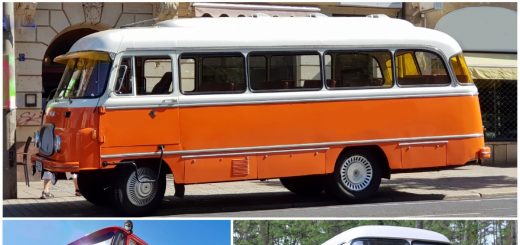
IFA Robur LO / LD: Luftgekühltes Allrad-Phänomen
Sonntag, 22. März 2020
von Tom · Published Sonntag, 22. März 2020 · Last modified Samstag, 25. März 2023
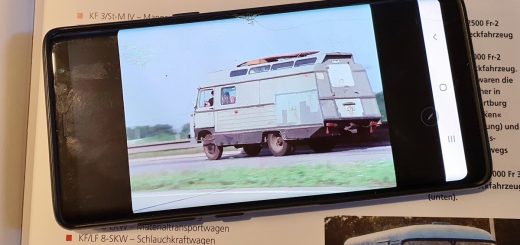
Robur Bus Wohnmobil: Traum(a) von Feeling B, Start von Rammstein
Sonntag, 12. April 2020
von Tom · Published Sonntag, 12. April 2020 · Last modified Samstag, 25. März 2023
24V-LED-Leuchtstreifen: Test als LKW-Innenbeleuchtung
Freitag, 12. April 2024
von Tom · Published Freitag, 12. April 2024
53 Antworten
- Kommentare 53
- Pingbacks 0
Hallo Tom, bei allem Respekt für dein guten Beiträge, speziell der Fahrzeugtechnik: So einige deiner Thesen zu PV finde ich schon etwas steil. „Teuer, flach liegende Module sind ineffektiv“ usw. Um was geht es denn? Möchtest du in deinem Bus autark sein oder sucht du eine Lösung, mit der du auch den Rasentrimmer in der Pampa betreiben möchest?
Wenn erstes im Vordergrund steht, führt an einer PV-Anlage, fest montiert mit Batteriespeicher kein Weg vorbei. Teuer? Mitnichten! Ein schlankes 110Wp mikrokristallines Modul kostet zB. knapp 60 Euro bei dem Internet Versteigerungshaus (Versand inkl.). Für den Preis des Faltmoduls bekommst du so schon mal fast 660 Wp an fest installierter Solarleistung. Da relativiert sich schon mal der Minderertrag bei schräg stehender Sonne. Ok, auf dem Dach deines T2 ist kein Platz für sechs Module. Aber sicherlich für drei (eins auf dem Hubdach, zwei davor). Es fehlt noch ein wenig Kabel, eine Dachdurchführung und Aluwinkel zur Befestigung. Macht zusammen rund 200 €.
Kein mitschleppen, aufstellen und ausrichten von Solartaschen mehr. Keine Angst vor Diebstahl und kein regelmäßiger Austausch der MCx-Stecker, denn die sind nur bei stationären Betrieb sinnvoll. Die Frontscheibe kann bei starker Sonnen nun abgedeckt werden. Und: die Anlage funktioniert immer, auch während der Fahrt und im Winter, wenn das Mobil geparkt ist (Batt. regelm. nachladen!). Deinen „Mobilen Energiespeicher“, den ich mit seinen 40 Ah bei 12 Volt für völlig überteuert halte, kannst du auch noch laden.
Fehlt zum funktionieren einer kompletten PV-Anlage nur noch ein Solarregler, aber der ist bei der Tasche ja auch nicht bei. Für einen PWM-Regler rechne ca. 50 € und deine Aufbaubatterien können direkt angeschlossen werden.
Unbenommen bleibt, dass liegende Module deutlich weniger Energie liefern (ca. 85% im besten Fall). Selbst bei blauen Himmel und strahlender Wintersonne in den Monaten Nov. Dez. und Jan. ist es nur ein Bruchteil der theor. Leistung. Ob du damit trotzdem ein gewisse Autarkie erreichst ist abhängig vom Verbrauch und der installierten PV-Leistung. Natürlich ein wenig auch von der Batteriekapazität. Mal angenommen, das Modul bringt nur noch 20% der Leistung um die Mittagszeit. Das sind bei drei 110 W Modulen noch immer 1,8 Ampere, bei drei Modulen 5,5A oder 66 Watt. bei 4 oder 5 Modulen entspr. mehr…. Zum Verbrauch: Ich habe gelernt, dass du im T2 einen Absorberkühlschrank hast. Also scheint der Stromverbrauch eher gering zu sein (TV, Licht, Pumpe, Heizung…). Das o.a. Beispiel dürfte durchaus für einen Autarkie reichen. Dein Aufstelldach könnte übrigens geeignet sein das Winterproblem ein wenig zu relativieren… Und wenn es dann immer noch zuwenig Ertrag ist, dann hast du ja noch dein Faltmodul. ;o)
Zusammengefasst: Gegen geringe Erträge wegen liegender Module hilft klotzen und nicht kleckern. Die gefallenen Preise für PV-Technik machen das klotzen leicht.
Ja, mein Setting für die Stromerzeugung mit Faltpanels und Akkubox ist etwas speziell, denn im Wohnmobil brauchen wir prinzipiell keinen 24-V-Zusatzstrom. Der Bus ist auch im Winter mindestens eine Woche vollkommen autark. Länger habe ich es noch nicht an einem Stellplatz ausgehalten.
Mit Kindern habe ich aber auch weder Zeit für Laptop noch für Fernsehen. Strom brauchen eigentlich nur das Licht, der Lüfter für die Toilette und die verschiedenen Handys, Taschenlampen und Kameras.
Deswegen war mir eine mobile Gesamtlösung wichtig, weil wir die auch im Jeep, im Wolf und zu Hause nutzen können. Und eben dann, wenn ich im Bus 230 Volt brauche.
Insofern zeigt der Beitrag vor allem mein Erstaunen darüber, dass man mit einer liegenden Photovoltaik-Anlage die achtfache Fläche auf dem Dach bräuchte, um im Herbst und Winter denselben Stromertrag zu haben. Ich verstehe wirklich nicht, warum niemand die Module auf dem Dach zum Aufstellen baut.
Aber du hast recht, Rudolf. Der Text zu Kosten des faltbaren Solarmoduls in Kombination mit der Akkubox könnte so verstanden werden, dass eine Solaranlage auf dem Wohnmobil zu teuer ist und sich nicht lohnt. Ich hab’s noch mal bisschen anders formuliert. Also nochmal deutlich: Wichtig ist mir ein vollständig mobiles, fahrzeugunabhängiges System aus Faltmodul und Akkubox für 5/12/230 V. Für die gleiche Leistung im Winter bräuchte ich eine achtmal größere Fläche auf dem Dach, einen Solarladeregler, Sicherungen, Kabel, Zusatzbatterie sowie Wandler für 5 V und 230 V. Müsste man mal gegenrechnen, was günstiger kommt.
Hier hat sich auch schon mal Jemand Gedanken um die Berechnung und Auslegung einer Solaranlage fürs Wohnmobil gemacht. http://reisemobilist.de/Downloads.html
Ja, die Solarmodule müssen ja nicht faltbar sein. Aber warum habe ich noch nie ein aufgestelltes Solarmodul auf dem Dach gesehen? Oder an der Seite? Oder am Heck? Immer nur flachliegend. Wenn der Anstellwinkel sich im Winter mit dem Faktor 8 bemerkbar macht, muss ich das bei der Planung einer Solaranlage fürs Wohnmobil doch berücksichtigen.
Klar, der Preis ist ein Argument. Aber im Winter reicht die Fläche doch nicht aus, um ernsthaft Strom zu erzeugen.
Wenn das System Fahrzeugunabhängig sein soll, können wir das Schreiben hier einstellen. „Ich verstehe wirklich nicht, warum niemand die Module auf dem Dach zum Aufstellen baut.“ Doch, das gibt es. Geht mit sog. „Power Joints“ sogar zum selberbauen: https://www.youtube.com/watch?v=HX0hZCFr4_I Falls der Link nicht funktioniert suche nach „Relleumdesign“. Es gibt auch andere Lösungen… Auf dem letzten Mobil hatte ich 10 Module á 50 Watt. Alle aufstellen und das ca. alle drei Stunden?! Nicht bei jedem Fahrzeug kommt man aufs Dach und wenn man schon mal oben ist: die Wahrscheinlichkeit, aus 3,2 Metern abzustürzen ist nicht zu vernachlässigen… Solche Lösung haben sich nicht durchgesetzt, weil mit zuviel Aufwand verbunden.
„(…) mein Erstaunen darüber, dass man mit einer liegenden Photovoltaik- Anlage die achtfache Fläche auf dem Dach bräuchte“
Als ich vor 14 Jahren meine Hausdachanlage in Betrieb genommen habe (die beste Investition meines Lebens!) fragte mich der ein- oder andere, wie viel Quadratmeter denn meine Solaranlage hätte. Oder wie viel Module? Obwohl ich mich intensiv mit dem Thema beschäftigt hatte: ich wusste es nicht! Entscheidend war die Leitung in kwp. Für was ist die Dachfläche beim Fzg. da? Dachluken, Klimaanlage und evtl. noch die Sat-Schüssel. Der Rest wird mit Solarpanels belegt, weil billig!
Ich habe noch nicht rausgefunden, ob in deinem T2 eine Aufbaubatt. drin ist, oder ob der Strombedarf durch die Starterbatterie gedeckt wird. Wenn es eine Aufbaubatt. – egal ob 12Volt oder 24 Volt – gibt, ist ja eine rudimentäre Elektroinstallation mit Sicherungen usw. vorhanden. Ein günstiger Wechselrichter wäre dann noch drin im Budget. Immerhin hat deine Lösung mit einer sehr überschaubaren Leistung fast 1000€ gekostet. Über 5Volt USB-Ladegeräte für den Zigarettenanzünder brauchen wir nicht reden…. Und wenn ihr, wie du schreibst, nicht viel Strom braucht, nähert sich die Investition einem zweistelligen Eurobetrag …
Wenn es dir allerdings um eine fahrzeugunabhängige Lösung geht, die zwar sehr viel kostet und mit nicht unerheblichen Aufwand verbunden ist,
… dann reden/schreiben wir hier über Äpfel und Birnen …. Sorry, zu früh gedrückt.
Ja, mein Aufstelldach könnte ich gut mit Solarmodulen bekleben. Bräuchte dann nur paar stärkere Gasfedern. Aber wie gesagt, wir fahren komplett auf Gas und brauchen im Urlaub keinen zusätzlichen Solarstrom. Beim nächsten Wohnmobil vielleicht. Dann aber richtig mit elektrischer Küche.
Bis dahin brauche ich Strom nur dann, wenn ich mit dem Laptop unterwegs bin. Dann aber mit verschiedenen Fahrzeugen. Deswegen die mobile Lösung.
Trotzdem würde ich mir für den Fall etwas ausdenken, um die Solarmodule ideal zur Sonne auszurichten. Die müssten ja nicht nur aufstellbar, sondern idealerweise auch schwenkbar sein. Und natürlich automatisch nachgeführt werden. Glaube nicht, dass man da mit der Leiter jedesmal aufs Dach steigt. Mir reicht schon die Arbeit beim Umstellen des faltbaren Solarpanels am Boden.
Gibt es vielleicht jemand hier, der Erfahrung mit aufstellbaren Solarpanels auf dem Dach hat? Denn auch wenn ich genug Strom im Bus habe, das Thema interessiert mich schon.
Ich hatte das nur dem Aufstellen der Module mal entworfen und für mich grob gezeichnet. Bin davon erstmal ab, weil mir der Aufwand erstmal zu hoch erschien und ich erstmal Erfahrung sammeln wollte. Bisher komm ich mit 600Wp flach vorn, die ersten 1.6m gut klar. Gibt aber schon was: * fertig mit allem von greenakku.de * Aufstellmechanik: siehe hier * selber an einem schönen Rundhauber hatte ich das mal gesehen, finde das Bild gerade nicht, der hatte die Module seitlich so montiert, dass er das Dach frei hatte und im stand die Dinger hochklappen konnte * ein anderer hatte die an Schwerlastzügen montiert und du konntest die ausziehen und hattest das Dach drunter frei für Terrasse und drunter liegende Staufläche
Flach montiert ist halt an einfachsten und bei den aktuellen sinkenden Watt/qm Preisen sollte das auch im Norden reichen
Für mich wäre reine Fläche der Solarmodule keine Lösung. Bei einem Fünftel Sonnenscheindauer im Winter und einem Achtel Leistung bei flach liegenden Modulen dürfte eine flach montierte Solaranlage auf dem Wohnmobildach im Winter höchstens 2 bis 5% der Nennleistung liefern.
Konsequenterweise müsste man also entweder die Solarpanels wie mit dem faltbaren Teil immer auf die Sonne ausrichten oder die Kapazität der Photovoltaik-Anlage auf dem Wohnmobil auf diese geringe Leistung auslegen.
Nur was macht man dann im Sommer mit dem ganzen Stromüberschuss? Batterien weich kochen? Das Duschwasser elektrisch auf 100 Grad bringen? Interessant wäre eine Klimaanlage. Aber dafür wird der Strom wieder nicht reichen.
fürs erste laufen bei mir die Dachluken-Ventilatoren im Sommer und Sonne auf Volllast – zusammen mit dem „Tropendach“ aka Solarpaneele vorn und Holzdeck hinten funktioniert das soweit ganz gut. Wenn man genug investieren möchte, könnte man sicher eine schöne Staukastenklima und/oder ne Elgena an ein paar Li-Ion und nen Wechselrichter klemmen. mit etwas Geschick und ein paar Ventilen oder so kann man den Luftstrom sicher durch dieselben Rohre schicken wie die Warmluft der Truma…
Aber bis dahin muss ich noch bisschen was verdienen und/oder die Speichertechnik günstiger werden.
Genau, das teure am Solarstrom sind die Akkus. Besser wäre, den Strom aus den Solarmodulen direkt auf die Klimaanlage oder die Dachlüfter zu geben. Werde da wohl selbst mal was bauen müssen.
Nunja, der Solarregler übernimmt das ja. Wenn du den auf Batterien legst und gleichzeitig Strom entnommen wird, läuft der ja nicht durch die Batterie zum Verbraucher, sondern direkt. Wenn du verhindern willst, dass die Klima von der Batterie zieht, reicht ein Relais, das durch den Regler gesteuert wird – ob das die Klima aber mag, wenn der Strom einfach weg ist, wenn Wolken kommen ist das andere…
Jedenfalls habe ich im Moment nicht das Problem von zu viel Strom. Und ich brauche auch keine extra Regler und Relais für das faltbare Solarpanel und die Akkubox. Aber die Faustregel, dass im Wnter nur 5% der Nennleistung an den Batterien ankommen, merke ich mir für die Dimensionierung einer fest auf dem Wohnmobil installierten Solaranlage. Wenn ich denn mal denke, sie zu brauchen.
„Nur was macht man dann im Sommer mit dem ganzen Stromüberschuss? “ Vorschlag: Kompressorkühlschrank, Induktionskochfelder. Ja, auch das Warmwasser zu erwärmen ist mit PV-Energie möglich. Die Sonne schein nicht umsonst, aber kostenlos. Da kann man im Kleinen sich und seinen Kindern vor Augen führen, wie leicht es auch ohne fossile Brennstoffe (Propangas) geht …
Klar, im Sommer ist eine solarbetriebene, elektrische Küche im Wohnmobil kein Problem. Aber wie koche ich dann im Winter? Jedenfalls mit Elektroherd hierzulande nicht. Unser Wohnmobil habe ich für eine Woche Autarkie im heimischen Winter ausgelegt. Also ohne zu fahren und ohne fremde Versorgung. Das wird schwierig mit liegenden Solarmodulen und nur 50 Sonnenscheinstunden im Januar.
Ich schreibe hier aus eigener Erfahrung. Eine autarke Lösung der Stromversorgung im Winter wird mit einer PV-Anlage nur unter sehr glücklichen Umständen funktionieren, ganz egal ob man die PV-Module aufs Dach legt oder nach dem Sonnenstand ausrichtet. Natürlich wird eine nach dem Sonnenstand ausgerichtete Anlage bei gleicher Nennleistung einen größeren Ertrag bringen als eine waagerecht ausgerichtete Anlage. Dies ist ja hier schon ausführlich dargestellt worden. Das große Problem ist aber, dass die Sonne in den Wintermonaten eben nur „durchschnittlich“ z.B. 50 Stunden scheint. Es ist jedoch gar nicht so selten, dass sie während der Zeit, in der du mit deinem Womo unterwegs bist, überhaupt nicht scheint. Also brauchst du sowieso eine entsprechend große Stützbatterie, die deinen Strombedarf über die gesamte Zeit abdecken kann, bzw. eine zusätzliche Stromquelle – z.B. „Moppel“ oder Fremdstrom. Es ist also müßig darüber zu diskutieren, welche PV-Anlage im Winter besser wäre. Das Risiko, dass die Sonne gar nicht (oder zu wenig) scheint, ist viel zu groß, um sich auf eine autarke Lösung nur über PV verlassen zu können. In den sonnenreicheren Monaten sieht die Sache schon anders aus. Ich bin bisher mit meiner Anlage (280 Wp, Module waagerecht, Stützbatterien AGM 12V 340 Ah) immer autark geblieben. Der Hauptverbraucher ist ein kleiner Kompressorkühlschrank sowie einige Kleinverbraucher ( Lüfter, Radio, Licht etc.).
Dein Einwand zur Stromversorgung im Winter über Solarmodule ist super und bringt mich auf die Idee, mal die mittlere sonnenlose Dauer in den Wintermonaten auszurechnen. Das wäre eine wichtige Kennzahl, um die Batterien richtig zu dimensionieren. Denn die 50 Stunden Sonnenschein im Januar sind doch meist sehr ungleich verteilt.
Ich werde eine 560 Ah LiFePo4 Batterie einbauen und mal sehen, wie ich damit zurecht komme. Laden möchte ich über Landstrom, 30A Ladebooster während der Fahrt oder eben Solar (fehlt noch). Hauptverbraucher wird ein Induktionskochfeld sein, ich werde aber auch einen kleinen Kartuschenkocher als Backup mitnehmen. Brauche ich die 560 Ah? Keine Ahnung. Der Aufpreis zu der 280 Ah Lösung ist aber nicht die Welt. Ich rechne mit Kosten von 1200 Euro für diese DIY-Batterie aus China. Zellen und BMS sind bestellt, das wird aber bestimmt noch 6 – 8 Wochen dauern bis die Sachen da sind. Als Puffer sind 560 Ah sicher gut. Interessant wird aber wie ich das Ding wieder voll bekomme, falls es mal wirklich leer ist. Bei 30A Ladestrom muss ich 18 Stunden fahren, um 540 Ah nachzuladen….
Du kannst der 560 Ah-LiPoFe-Batterie etwa 500 Ah entnehmen. Ganz entladen ist auch für diese Art von Batterie nicht gut. Mit 500 Ah bei – ich nehme an 14,4 V- stehen dir etwa 7 kWh zur Verfügung. Das ist soviel, wie ein normaler 2-Personenhaushalt durchschnittlich pro Tag verbraucht. Da hast du mal eine Vorstellung, was du mit einer vollen Batterie anfangen kannst. Wie lange die 7 kWh reichen, hängt davon ab, was du alles mit Strom betreiben willst. Ein Induktionskochfeld frisst schon ganz schön Strom, besonders wenn du damit auch dein Warmwasser bereitest. Falls du noch einen Kompressorkühlschrank, TV/Computer, ein paar Lüfter und Leuchten betreiben willst, kommen schnell 3 bis 4 kWh am Tag zusammen. Ohne Nachzuladen wirst du etwa 2 bis 3 Tage hinkommen. Wenn du nicht immer fahren willst, um die Batterie wieder voll zu bekommen, gibt es nicht viel anderes als Fremdstrom, „Moppel“ oder PV-Anlage. Wenn du nicht gerade in den sonnenarmen Monaten unterwegs sein willst, empfehle ich dir eine PV-Anlage mit einer Nennleistung von etwa 700Wp. Ob du das allerdings platzmässig unterbringst, kann ich aus der Ferne nicht beurteilen. Eventuell solltest du dir überlegen, statt des Induktionskochfeldes einen mit Flüssiggas betriebenen Kocher zu verwenden. Dann kannst du die „Elektrik“ um einiges kleiner auslegen.
Das ist auch meine Strategie: Stromverbrauch möglichst vermeiden. Gas zum Kochen, für die Heizung und für den Kühlschrank ist für mich der ideale Energieträger. Zumindest in Nord- und Mitteleuropa. Wer aber immer der Sonne hinterherreist, fährt natürlich mit Solar wesentlich besser.
Solaranlage wird definitiv kommen. Ich möchte ja in 1,5 Jahren das H-Kennzeichen bekommen, da hat mein Prüfer erst einmal die Stirn gerunzelt als ich ihm von der geplanten Solaranlage erzählt habe. So etwas gab es 1992 angeblich noch nicht… Wenn ich die Module aber mit Flügelschrauben festmache, gehen sie als Ladung durch. Ich plane mit drei 195W Modulen. Danke für deine Abschätzung des Verbrauchs, ich denke wir werden mit der Kapazität ganz gut hinkommen. Gas wollte ich mit diesem Setup vermeiden,. Ich habe ja noch einen Kartuschenkocher als Backup.
Hier hast du noch einen Vergleich, mit dem du dir veranschaulichen kannst, was in deiner vollgeladenen Batterie drin steckt: 500 Ah bei 14,4 V entsprechen etwa 7 kWh 7 kWh entsprechen etwa 500 Gramm Propan Die Energie, die in einer kleinen (5 kg) Flasche Propan steckt, ist vergleichbar mit der von 10 (zehn) Batterieladungen! (Die Umwandlungsverluste – Wirkungsgrad bleiben der Übersichlichkeit wegen unberücksichtigt.)
Klar, Gas ist besser als Strom aus der Batterie. Nur Gas kann ich mir halt selber nicht erzeugen. Strom mit dem geeigneten Solarmodul aber schon.
Mit 480 Ah Kapazität bin ich sicher gut aufgestellt.
Der Knackpunkt wird immer der hohe Energieverbrauch beim Kochen sein.
Lasse ich ein Induktionskochfeld mit 3 kW beide Platten eine Stunde auf Max laufen, zieht es grob 250A in einer Stunde. Bei einem maximalen Entladestrom von 280A und einem entsprechend großen Inverter geht das theoretisch. Das ist aber sicher nicht die Regel. Wenn ich Probleme bekomme die Batterien über Solar/ Landstrom/ Ladebooster wieder aufzufüllen, dann koche ich halt mit dem Kartuschenkocher! Dieser Bastelbus ist ein Ausgleich zu meinem Job und ich lerne jeden Tag dazu 😉 Z. B. baue ich mir jetzt selber einen LiFePo4-Akku, weil ich nicht bereit bin tausende von Euros dafür auszugeben. Wenn ich mit 1000 – 1200 Euro hinkomme, dann ist es mir das definitiv wert.
Eine selbstgebaute Solarbatterie ist schon cool. Da heiligen die Mittel den Zweck.
Hallo Martin, bitte unterschätze bei deinem Vorhaben die Dimensionierung des Konverters nicht. Bei einem Induktionskochfeld treten kurzzeitig sehr sehr hohe Stromspitzen beim Ein-/Umschalten auf. Diese muss der Konverter vertragen. Die Angaben bei einem Konverter beziehen sich immer nur auf ohmsche Lasten. Bei induktiven Lasten sind kurzzeitige Stromspitzen vom 20 … 30fachen des Nennstroms nicht ungewöhnlich! Man muss den Konverter für diese Spitzenströme auslegen, sonst geht er beim Einschalten auf Störung. Es ist wichtig, dass du dich vor Kauf des Konverters mit den Herstellern des Induktionskochfeldes und des Konverters abstimmst.
Danke für den Hinweis, Konverter und Solaranlage habe ich noch nicht besorgt, soweit bin ich noch nicht. Zur Zeit puzzle ich die Schublade mit der Trockentrenntoilette in die zukünftige Dusche. Gestern wurden die Zellen in China versandt: 45 – 50 Arbeitstage dauert das. War mir aber vorher schon bewußt.
Gibt es denn keine 24 V Kochfelder?
Wieso? Es kommt doch für das Thema Solarmodule und H-Kennzeichen auf die Einbauten an, die in den ersten zehn Jahren nach Zulassung hätten vorgenommen werden können. Und im Jahr 2000 gab es definitiv schon Solaranlagen.
Du magst Recht haben, man liest halt Wiedersprüchliches. Ich habe einen Anforderungskatalog vom TÜV Süd gefunden: https://www.tuvsud.com/de-de/-/media/de/auto-service/pdf/broschueren-und-flyer/anforderungskatalog-oldtimer.pdf Da steht drin „Änderungen, die nachweislich innerhalb der ersten 10 Jahre nach Erstzulassung oder gegebenen-falls Herstellungsdatum erfolgt sind oder hätten erfolgen können, sowie Änderungen innerhalb derFahrzeugbaureihe, sind zulässig. Nicht zeitgenössische Änderungen, die nachweislich vor mindestens 30 Jahren durgeführt wurden, sind auch zulässig.“ Demnach kann man Solarmodule nachrüsten. Hier wird das kritischer gesehen ( https://www.faszinationcamping.de/solaranlage-auf-dem-oldtimer-wohnmobil/ ): „Sind neuere Bauteile verbaut, müssen diese innerhalb der ersten 10 Jahre nach Erstzulassung bzw. Herstelldatum verbaut worden sein (dies muss man nachweisen).“
Laut Aussage des Prüfers interessiert ihn nicht, was ich auf dem Dach als Ladung transportiere, deshalb die Montage der Module mit Flügelschrauben. Noch habe ich eineinhalb Jahre Zeit. Ich denke, es kommt immer auf den Prüfer an. Meiner steht dem Ganzen prinzipiell positiv gegenüber, daher werden wir uns schon einig werden.
Ob ein Solarpanel nun mit dem H-Kennzeichen vereinbar ist oder nicht, hängt allein von deinem Prüfer ab. Was da irgendwo im Internet steht, ist diesbezüglich nicht relevant. Insofern würde ich natürlich immer tun, was er sich wünscht.
Ob die Größe der Batterie reicht, kannst du nur über den erwarteten Stromverbrauch beurteilen. Eine größere Batterie ist immer gut. Muss aber, wie du ja selbst schreibst, auch wieder geladen werden können.
Es ist schon interessant, die mittlere Dauer ohne Sonnenschein in den Wintermonaten zu kennen. Ob es sinnvoll ist, danach die Größe der Stützbatterie auszulegen, bezweifle ich sehr. Es steht immer nur eine Wahrscheinlichkeit mit einer sehr großen Unsicherheit dahinter. Und das ist auch noch abhängig, in welches Gebiet du reisen willst. Stell dir mal vor, du hast entsprechend deiner Berechnung die Batterie für 5 Tage ausgelegt und hast auf einmal 7 Tage keine Sonne. Dann ist nach 5 Tagen der Strom alle und du siehst alt aus. Im „Sommer“ findest du leichter irgendwo Fremdstrom oder kannst auf Strom verzichten. Im Winter ist das nicht so einfach. Da bekommst du schon ein Problem, deine Heizung ohne Strom zu betreiben. Fazit: Für die Winterzeit sollte die Stützbatterie so groß sein, dass sie die ganze Zeit, in der du autark unterwegs sein willst, abdecken kann (falls du keine anderen Stromquellen mitnehmen willst).
Ja das stimmt. Eigentlich müsste man die maximale Zeit ohne Sonnenschein betrachten. Und selbst wenn Sonne ist, muss man noch lange nicht die Batterie voll kriegen. Hatte heute die Solarmodule wieder draußen stehen, um die Powerbox zu laden. Gefühlt war den ganzen Tag blauer Himmel. Und doch kam nur in 2 Stunden 40 Watt Leistung rum. Die restliche Zeit irgendwas zwischen 10 und 20 Watt.
Ich habe mal noch die Erfahrungen mit dem Solarpanel und der Akkubox im frostigen Januar 2021 ergänzt.
Hallo Tom, ich habe vielleicht was bestimmte Themen, u. a. Design etc., betrifft, eine andere Auffassung als Du, doch das ist m. E. nur egal, denn wir mögen ja auch nicht alle die gleiche Frau …. Sicher ist, daß Dein Blog mir die Augen in Bezug auf Alt-Allrad-LKW geöffnet hat und mich meine Reisewünsche nochmals konkret hinterfragen hat lassen. Was ich aber als Nichtschrauber ganz besonders schätze, sind Deine Erfahrungstests, da Du mir nichts verkaufen willst und aus der persönlichen Erfahrung heraus ehrlich mit Dir und Deinen Lösungen zu Gericht gehst. Probieren geht bekanntlich über studieren. Auch so Beiträge wie der über die Falt-Solarpaneele findet man so sonst nirgends wirklich. Dafür werden einem aber die Installation mehrerer Riesenpaneele zur Flachmontage aufs flache Kabinendach empfohlen. Viel kostet viel und bringt viel Umsatz. Nur nützen tut’s demnach dem der zahlen muß wenig. Aufstelldächer reduzieren die Möglichkeit, Solarpaneele in größerer Anzahl und Fläche ob des Gewichts darauf zu montieren. Faltpaneele dagegen kann man an mannigfaltigen Stellen einfach in die Sonne hängen und umhängen oder aber vorne ins Fenster stellen. Danke für den Beitrag.
Gruß, Klaus
Ja, aber auch die faltbaren Solarmodule sind noch nicht der Weisheit letzter Schluss, weil letztlich vor allem im Winter der Stromertrag zu gering ist. Für die Kleinverbraucher reicht es.
Aber für ernsthaften PC-Betrieb, Kühlschränke und Dieselheizungen brauchst du schon Fläche. Und teuer sind eigentlich vor allem die Wohlfühlkomplettpakete. Die Einzelmodule und Bauteile sind gar nicht so teuer. Zumal die Batterien ja sowieso an Bord sind.
Und wenn du die Gasdruckfedern stärker auslegst, kannst du natürlich auch Solarmodule aufs Aufstelldach kleben.
Ja, leider, die eierlegende Wollmichsau wurde leider noch nicht entdeckt, gefunden …. Was meinst Du konkret mit Wohlfühlkomplettpakete?
Natürlich gibt es Aufbauer, die für VW T5/6 Bus max. 2 flachbauende Solarpaneele auf dem Aufstelldach verkleben. Sieht man andere ExMo, analog Deinem ehm. 1124, dann sind da auf den Kabinen-Dächern solch massive Solarpaneele mit Spezialklemmhalterungen befestigt, die wohl kaum jemand auf einem Aufstelldach überhaupt anbringen würde, für meine Wahrnehmung.
Das hier ist ein komfortables Solar-Wohlfühlpaket. Teuer, aber alles dabei. Und natürlich ans Fahrzeug gebunden. Meine Kombi aus faltbarem Solarmodul und Akkubox ist da aber auch nicht viel besser. Nur eben unabhängig und das ganze Jahr unabhängig vom Wohnmobil nutzbar. Meine ganzen Kleingeräte haben schon lange keine Steckdose mehr gesehen…
hallo, kann ich mit der „Smart Travel Solar 120W“ von Berger auch Lithium Batterien laden. Wenn Ja, welche Einstellung muß ich an dem mitgelieferten Regler einstellen Gel, AGM, Flüssig-Säure ??? danke
Mein faltbares Solarpanel hat zwar auch 120 Watt, scheint aber anders aufgebaut zu sein als das Smart Travel Solar 120W von Berger. Diese Einstellungen gibt es bei mir gar nicht. Aber ich nutze die Solaranlage ja auch nur in Verbindung mit meiner Akkubox . Und das wiederum ist ein Lithium-Ionen-Akku. Und der lädt ohne Probleme.
Du schaffst es nicht den Strom und die Spannung von dein Solarpanel unter die beste Voraussetzung zu vermessen. Also wieviele Watt liefert das Ding MAXIMUM. Den Regler hast auch nicht beschrieben in allen Stücken. Zum Beispiel; dein Akku ist leer, dein Solarpanel liefert 100W, wieviele Watt davon kommen in den Akku rein?
Klar, Stiftung Warentest testet so ein faltbares Solarmodul natürlich wesentlich besser. Mir bleibt ja letztlich nur, das Ding unter verschiedenen Umständen in die Sonne zu halten und dann die Anzeige meiner Akkubox abzulesen. Insofern ist für mich als Anwender vor allem die relative Änderung relevant. Also letztlich die Frage, wie ich das Solarpanel am besten aufstelle, um den meisten Strom in die Akkubox zu kriegen.
Interessant ist da übrigens auch der Temperatureinfluss. Hab es jetzt im Sommer selbst in der prallen Sonne und bei bester Ausrichtung noch nicht geschafft, mehr als 70 W aus dem 120-W-Solarmodul rauszuholen. Entweder es ist die Hitze oder der weniger klare Himmel. Aber egal, dafür scheint die Sonne wesentlich länger als im Winter mit besserem Stromertrag.
Hallo Tom, danke dir für deinen Beitrag und Info. Ich persönlich finde ihn gut und hilfreich. Und ja. Man kann immer alles besser und schöner und klüger. Anyway. Danke. Technischer Gedanke: Bei deinen links auf Amazon verlässt man deine Seite. Ich löse es bei meiner Seite mit: „in einem neuen link öffnen“. Sonst verliert man möglicherweise deine Seite. Beste Wünsche und gesunde Abenteuer. Grüsse. Udo / https://clabaudrio.de/ (wenn du magst und antwortest, verlinke ich deine Seite auch auf meinem Blog)
Ich lese hier ganz viel Meinung mit ganz wenig Ahnung…
Nach zwei Jahren Praxistest mit dem faltbaren Solarpanel wirds langsam…
Danke für Ihren verständlichen Bericht über mobile Solarpanel mit Akkubox. Von Ihnen vorgeschlagene Lösung möchte ich für zu Hause für den Elektorherd mit einer Heizplatte ausprobieren.Als eine Lösung gegen die letzten Strompreiserhöhung. Ich habe südliche schräge Dachneigung,vorher möchte ich mit meinem Vermieter für ein Erlaubnis sprechen.Wenn er zulässt.kann ich Ihre Lösung auf dem Dach in die Praxis umsetzen. oder würde nicht funktionieren.Ihre Meinung interessiert mich sehr. Grüsse U.T
Vergiss den Gedanken, mit einem faltbaren 120 Watt Solarpanel eine Heizplatte betreiben zu wollen. Habe gerade heute die Box geladen. Solar-Input 65 Watt über drei Stunden Sonnenschein. Macht also 195 Wattstunden Solarertrag heute. Damit kriegst du nicht einmal eine Tasse Wasser warm.
20230214 – aufgrund s.o. habe ich allpower120W gekauft – soeben getestet vor 13:30 – volle sonne – aufhängung an Balkontür (fast 90 zur Sonne) – quer auf Tisch senkrecht oder geneigt (90 zur Sonne) – mppt victron100-20 app sagt 22V aber nur 0.7 A max 16Watt. Elektrisch fliegender aufbau. Bin 66 und schon leicht deppig – brauch Hilfe oder Tipp Danke Übrigens: mein dritter Versuch PV -module zu nutzen, bisher nur rücksendungen.
Volle Sonne im Winter auf einem faltbarem 120-Watt-Solarmodul – da müssen wenigstens 60 Watt anliegen. Irgendwas stimmt da mit deinem Modul (oder dem Messgerät) nicht. Oder fällt da doch an einer Ecke Schatten auf das Modul?
danke fuer die antwort – ich hatte min. 30w erwartet und mehr strom – zur?: no, volle sonne – beobachtung: ein feld einklappen 0A! wird bei schatten wohl auch so sein! folge wahrscheinlich retoure – warte auf sonne noch ein versuch !
So ein faltbares Solarpanel ist halt für die mobile Anwendung gedacht. Für den stationären Betrieb gibt es sicherlich Solarmodule mit besserer Ausbeute und anderer Verschaltung. Wenn hier auch nur eine kleine Fläche abgedeckt ist bricht die Stromversorgung zusammen. Aber unterwegs im Wohnmobil sind es halt super Geräte, um den Strombedarf unterwegs zu decken.
Schreibe einen Kommentar Antworten abbrechen
Deine E-Mail-Adresse wird nicht veröffentlicht. Erforderliche Felder sind mit * markiert
Kommentar *
Worum geht es hier?
Aktuelle diskussion.
- AlexanderR sagt: Hallo zusammen. Erstmal großen Respekt für die Arbeit des Aktikels und...
- Tom sagt: Also ich sehe mit der Ersatzteilnummer A9061590101 bei Google viele Flammstartkerzen.
- Tom sagt: Danke für deine Geschichte, die zeigt, dass man immer selbst für...
- Tobias sagt: Hallo und Guten Abend, ich bin sehr erfreut diese Seite gefunden...
- Jürgen sagt: Hallo Tom, erst mal will ich mich für die Arbeit bedanken,...
- Peter sagt: An alle Benz Fahrer, ist denn noch Interesse an einem Treffen...
- Tom sagt: Nee, ich habe auch keine Unterlagen zu verschicken. Aber die ABE...
- Tom sagt: Mein einziger Freund, der sowas haben könnte, wohnt leider viel zu...
- Bonnie sagt: Ja die ABE hätte ich gern. Hab dir auch schon ne...
- Stiller mitleser sagt: haha du könntest auch das ganze Panel korrekt abmessen und komplett...
- Tom sagt: Ist nicht in der Doppeltankanlage der rechte Tank der Zusatztank? Und...
- Tom sagt: Wie geschrieben, ich mag gar nicht dran denken. Oder hast du...
- Tom sagt: Das ist ein Angebot. Habe gleich mal schnell einen Beitrag über...
- Peter sagt: Der zweite Tank ( Sonderausstattung ) dient praktisch als Reservoir. Er...
- Martin sagt: Da die Entlüftungsschläuche bei mir porös waren habe ich beide Tanks...
- Simon sagt: Moin Tom! Hast du inzwischen mal gehört, wie viel Quälerei das...
- Stiller mitleser sagt: ja dann sag doch was du brauchst und wie gross
- Tom sagt: ...oder jemanden, der mir mal ein paar solcher Beschriftungen ins nächste...
- Stiller mitleser sagt: Du brauchst einen DYMO
- Tom sagt: Die Brücke von Süden her auf die Insel Pag ist frei,...
Powerness SolarX S120 Portable Solar Panel: The Ultimate Travel Companion
High-efficiency panels, a convenient design, a built-in USB-C cable, and USB port make this our new favorite travel companion.
Powerness SolarX S120
The Powerness SolarX S120 is an ideal travel companion: easy to carry and convenient design. The built-in USB-C output and additional USB port are great for charging your smart devices without using a heavy backup battery, or it can do all three at once.
It is on the pricey side though, so consider if you truly need that portability before purchasing.
- Built-in cabling for all kinds of batteries, plus USB-C
- Simulatenous charging of smartphone plus battery, and another USB port
- Convenient design with rigid carry handle
- Good efficiency (measured as around 90W in full sun)
- USB-C cable and USB-A port are limited to 5V, not PD
The Powerness SolarX is a convenient take on the portable solar panel design, allowing you to charge both a battery, smartphone, and other device simulatenously with its multiple outputs. The 120W rated output is a cut above the competition with up to 23% panel efficiency, and it even has an LCD display to show current outputs.
If you're in the market for a portable solar panel, we think there are some compelling reasons why it should be this one.
Design and Specifications
The Powerness SolarX S120 model (also available in 40W, 80W, and 200W models), is a folding, 120W portable panel, featuring a rigid handle and a built-in pocket to keep the cables and ports safe. It’s IP65 waterproof, which means a splash of water is fine, but not complete submersion or continued rain. That said, I've left it out in light showers with no problems so far, so you needn't be too precious. You should be more worried about the devices you have it plugged into.
When folded for carrying, it measures 555 × 410 x 32 mm and weighs 10.14 lbs (4.6kg). When the four sections are unfolded, it extends to 1940 × 410 × 8 mm. On the back of each section is a fold-out leg, secured with velcro. You should use these to angle the panels as directly to the sun as possible for the best performance. If the sun is directly above, it's fine to lay it on the floor.
Hidden inside the securely zipped pocket, you’ll find lots of good stuff. For a start, there are two built-in cables.
The first is a DC cable for directly charging a backup battery or other DC device. It’s a 3-in-1 cable with 4,6, and 8mm (7909) DC plugs. This outputs with an open circuit voltage (VOC) of 21.6V. In my experience, this will be compatible with any battery, as they nearly all operate on either 12-60V, or 12-120V.
If your battery isn’t compatible with that plug type—MC4 is more commonly found on solar panels—you’ll find readily available female DC8mm to MC4 adaptors, though one is not included in this set.
Secondly, there's a built-in USB-C cable. This lets you charge your smart devices even if you’ve forgotten your charging cable, so it’s a really convenient option.
In addition to this, there’s a full-size USB port for yet more devices. Both the USB port and USB-C cable are limited to 5V/2.4A (12W) though, so you can’t use Power Delivery for things like a laptop, but it should still charge smaller devices.
That should cover every charging opportunity you need—all from a single solar panel.
Uniquely, there’s also a small LCD screen that shows the current output going to each cable and socket. It’s an interesting feature that I’ve not seen on other panels, but it’s of debatable utility. Presumably, the devices you plug in will tell you if they’re charging or not, so I’m not sure what you can do with this information on the screen other than simply confirm the charge rate (which is admittedly quite useful for this tech reviewer during testing). It's quite awkward to read though, given that the panel needs to remain angled back and facing the sun, so reading it requires kneeling down and bending your neck.
My only concern with any kind of built-in cabling on a portable panel is that of durability. They tend to get pulled around a fair bit—perhaps you forget to take it out of the battery when you fold it up, or a gust of wind blows the panel down. Once the cabling has been stretched too far or pulled out, the panel is useless. That hasn't happened to me and they seem sturdy enough, but it's a reason to be cautious. While the USB-C cable is appreciated, I'd be inclined to mostly use the USB port and my own cabling, purely because that's easily replaceable.
Performance
To compare the performance of the Powerness SolarX S120 panel, I tested side-by-side against a Jackery Solarsaga 100 panel in the same conditions—a warm autumn day, with full, midday sun.
The Powerness was producing 80W into a battery (confirmed as 18.3V @4.5A according to the built-in display, and 80W on the battery input display), and around 8.5W to a smartphone. Since we’re comparing a 120W panel to a 100W one, in the interest of fairness we should normalize this value. 90W output from a 120W rated panel could otherwise be called 75% efficient.
The 100W-rated Jackery SolarSaga meanwhile produced only around 40W in the exact same conditions, so a 40% performance. I’d forgive a 10-20% difference because it's an older panel and could do with a wipe, but otherwise, it's fair to say the Powerness performed much better.
In truth, I've rarely been able to get more than half of the rated output from a portable panel, so I've certainly been impressed by what the Powerness SolarX 120 can produce.
Price Per Watt, and the Portable Premium
While convenience and performance are the most important factor when picking a portable solar panel, it's worth talking about value as well, because the Powerness SolarX does sit at the premium end.
You can currently buy the SolarX S120 on Amazon for $250 (that includes an on-page $30 coupon, bringing down the $280 base price). That works out at just over $2 per Watt of power. That compares favorably to the Jackery SolarSaga 100X at $280 , or $2.80 per Watt. However, you'll also find no-name competition from the likes of Twelseavan 120W panel for less than $200 (again, there's an on-page "coupon").
As ever though, you should consider if you really need a portable panel, because there's a massive premium to pay for portability. If you buy a static panel, prices are closer to less than $1 per Watt. If you're looking for something to use both at home and a remote cabin, it would be cheaper to buy two bulkier 100W panels and put one at each location. Static panels are also more durable, as they don't get folded in half each time they're used. Constant folding action eventually wears down the wires inside that connect each section.
The Best Portable Solar Panel Yet?
Around 100W tends to be the goldilocks size of portable panel, in terms of convenience and function. You can certainly find higher-rated panels—typically up to 400W—but they’re naturally bulkier and harder to carry, as well as more awkward to unfold and set up. In my experience, they can also get caught out by a gust of wind easier.
The Powerness SolarX S120, therefore, is an ideal efficiency-to-weight ratio for portability. The built-in USB-C output and additional USB port are great for charging your smart devices without using a heavy backup battery.
Ultimately, if you could only carry one or the other, a small battery backup is going to serve you better on a short hike or camping trip, as it won’t rely on the sun shining. But for longer-term use, if you can’t take a battery, or yours has broken, in an emergency, the SolarX will at least mean you still have a way to recharge whatever device you may have.
If I could only take one portable solar panel into the apocalypse, it would be the Powerness SolarX S120.

FlexSolar 120W Foldable Solar Panel Kit review – The power of the sun in the palm of your hand
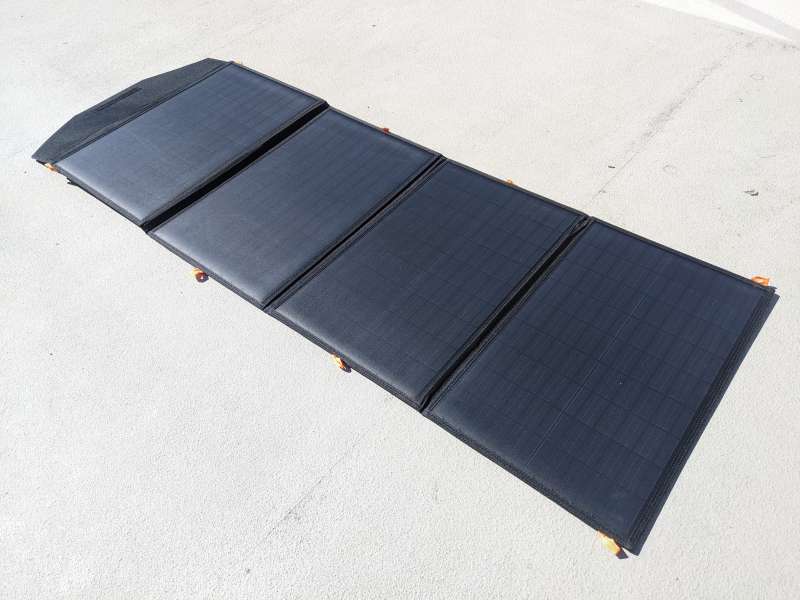
REVIEW – As my collection of portable batteries and power packs grows, the need for cheap (or free) electricity to keep them topped off increases as well. To avoid forking over my paycheck to Seattle City Light each month I’ve been looking for an effective solar panel kit to address this need. I may have found the perfect solution in the FlexSolar 120W Foldable Solar Panel Kit. This affordable, versatile kit includes not only high-efficiency solar panels that are easy to tote around but a Solar Charge Controller as well, which allows me to charge just about every device I have, up to and including my car battery. There are a few caveats that come with the low $199 price tag but overall, this kit delivers a ton of functionality along with lots of free power.
What is it?
The FlexSolar 120W Foldable Solar Panel Kit is a portable, four-panel monocrystalline solar panel set with an integrated junction box as well as a separate Solar Charge Controller designed for temporary off-grid charging needs such as camping, hunting, or RVing.
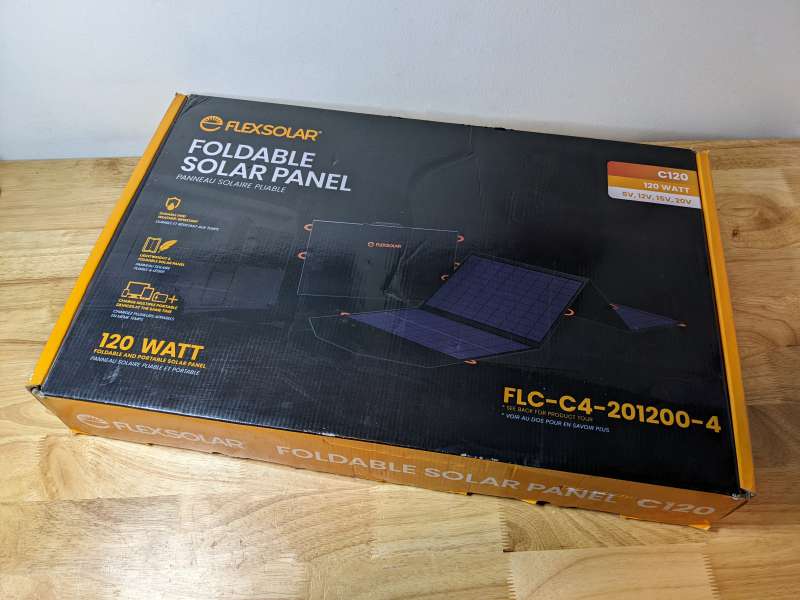
The FlexSolar Kit shipped in its display box which had me concerned at first because solar panels can be fragile if not handled correctly. Luckily, the kit was packed well in foam and there was no damage on arrival. The box details all the features of the solar panel kit as well as its technical specifications.
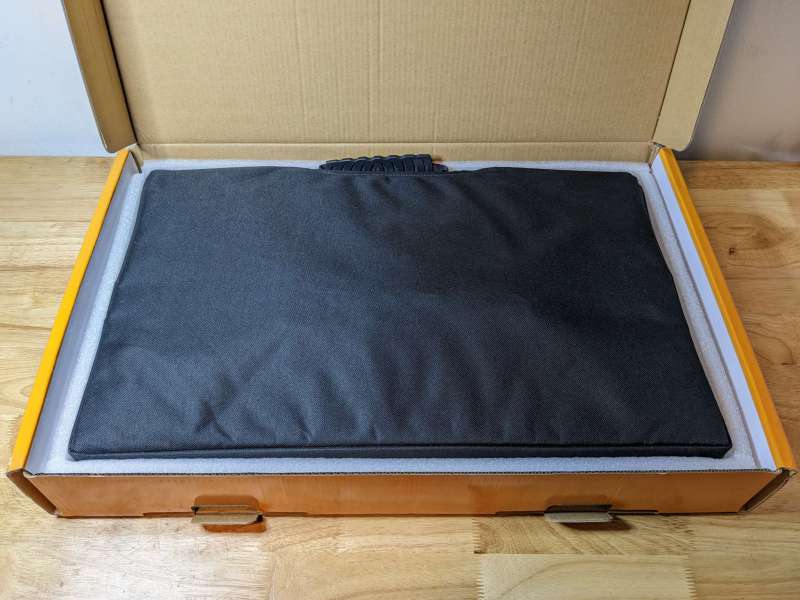
What’s in the box?
- 120 W Foldable Solar Panel
- 20 A (12 V/24 V) PWM Solar Charge Controller
- Carrying Case
- User Manual
- 2 x 1 ft. (0.3 m) cables with Anderson to Wire
- 1 ft. (0.3 m) cable with Anderson to Alligator Clip
- 1 ft. (0.3 m) cable with Anderson to DC5521 Male Connector
- 7.9 x 5.6 mm
- 6.0 x 4.3 mm
- 6.3 x 3.0 mm
- 5.5 x 2.5 mm
- 5.5 x 1.7 mm
- 4.8 x 1.7 mm
- 4.0 x 1.7 mm
- 3.5 x 1.35 mm
- 3.0 x 1.1 mm
- 2.5 x 0.7 mm
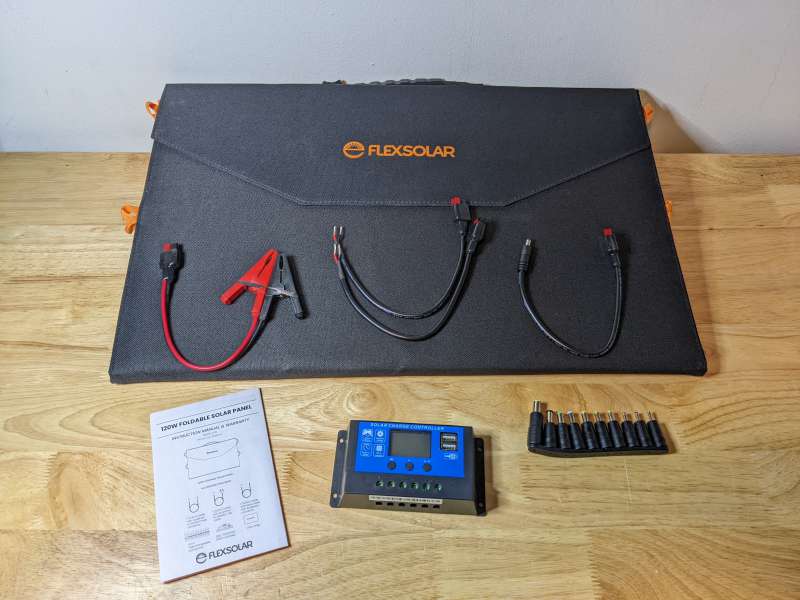
Hardware specs
- Solar Cell Type: Monocrystalline
- Unfolded: 65.1 x 22.2 x 0.2 in (1653 x 564 x 564 x 5 mm)
- Folded: 22.2 x 14.1 x 1.6 in (564 x 359 x 41 mm)
- Product Weight: 10.8 lbs (4.9 kg) with junction box and accessories
- IP Rating: IP65 – protection against accidental contact and ingress of dust along with water jets from any direction
- Output ports: USB 2.0, USB 3.0, USB-C (PD 60 W), Anderson (10 ft. hardwired cable)
- Charge Controller: 12V/20A PWM
- Open Circuit Voltage (Voc): 23.7 V
- Short Circuit Current (Isc): 6.36 A
- Maximum Power (Pmax) 120W
- Maximum Power Voltage (Vmp): 19.8 V
- Maximum Power Current (Imp): 6.06 A
- Cell Efficiency: 22%
- Power Tolerance: ± 10%
- Operating Temperature (F/C): -4°F to 149°F (-20°C to 65°C)
- Temperature Coefficient (Pmax): -0.45 %/K
- Temperature Coefficient (Voc): -0.32 %/K
- Temperature Coefficient (Isc): +0.02 %/K
- NOCT (Air 20°C, Sun 0.8kW/m², Wind 1m/s): 45±2°C
- Standard Test Conditions: 1000 W/m2, 25°C, AM1.5
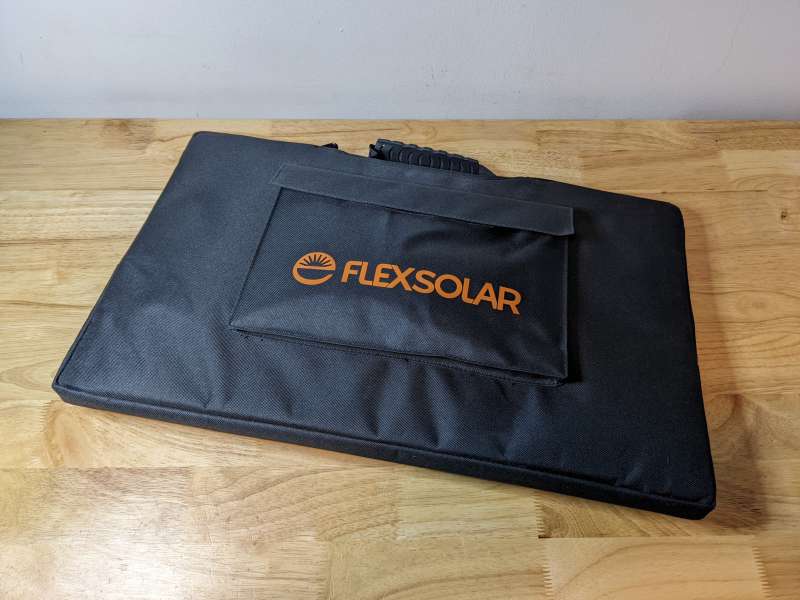
Design and features
The design of the FlexSolar 120W Kit is similar to most portable solar panels with a few exceptions. One unique aspect of the FlexSolar is its included carrying case. The case is a simple fabric bag with two zippers that follow along the edges of the panels. The heavy rubber carrying handle is attached directly to the folded panels.
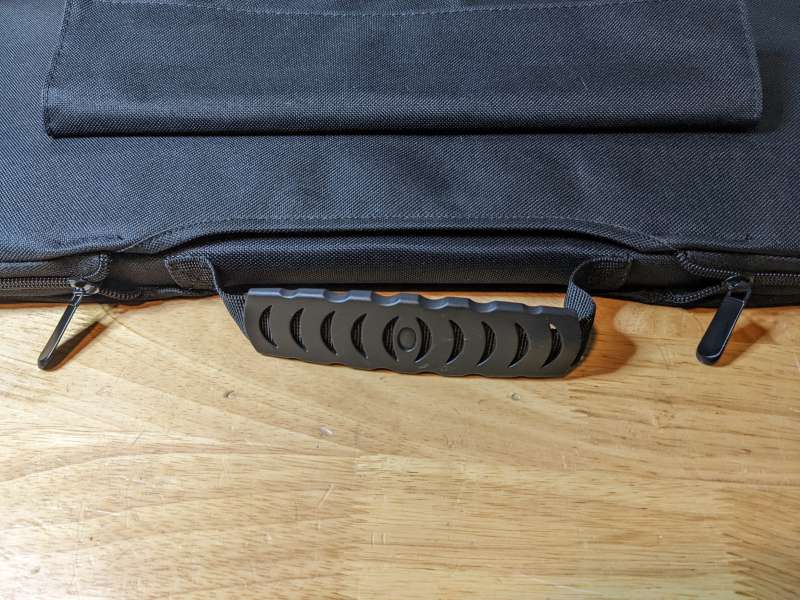
What makes the case a bonus, besides the fact that it adds an extra layer of protection for the panels, is the Velcro pouch on the front, great for keeping the FlexSolar accessories handy and secure.
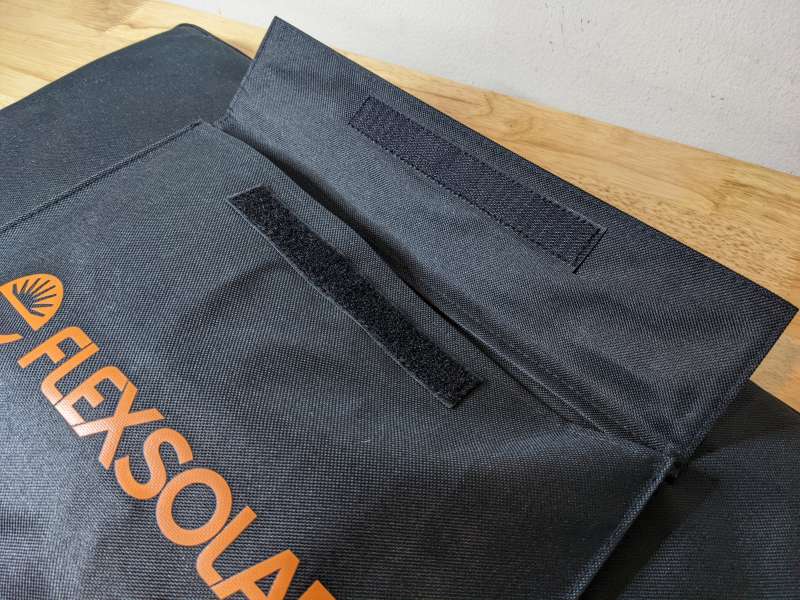
Inside of the pouch is a small elastic band that fits perfectly around the Solar Charge Controller, a nice design touch.
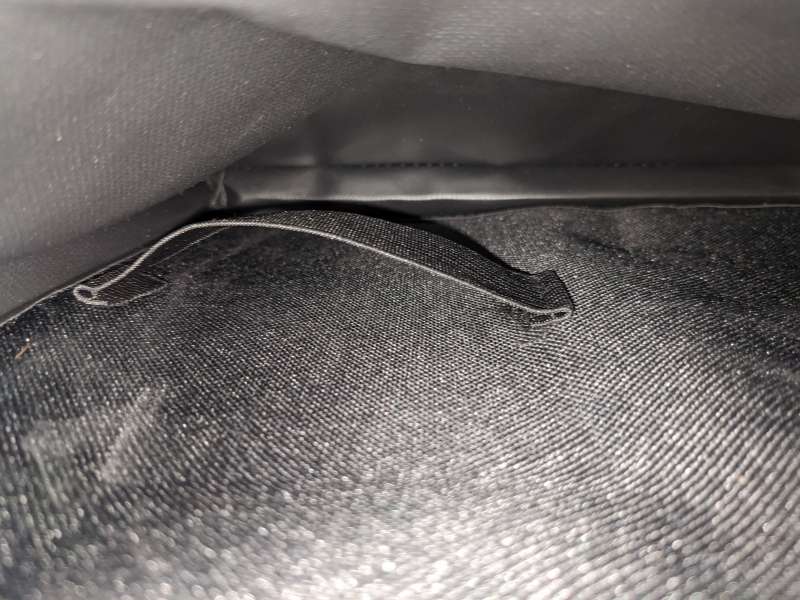
The Solar Charge Controller that ships with the FlexSolar Kit is pretty basic but definitely increases the usability of the kit. The controller works by protecting attached devices from over-charging, over-voltage, and short circuits as well as adding the ability to charge different types of batteries such as lead-acid batteries used in cars or RVs. The controller has three buttons for navigating its menus and an LCD screen. There are also two USB ports on the unit for direct charging devices like tablets or phones.
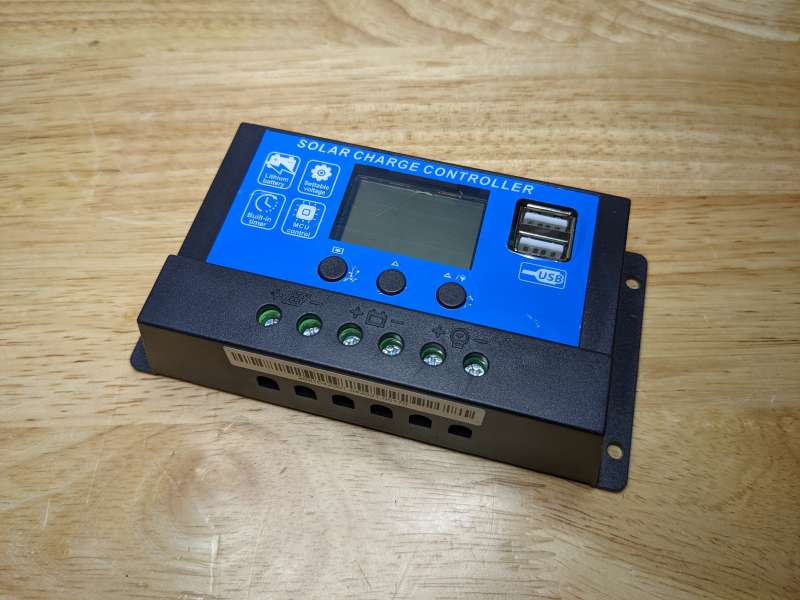
Along with the Solar Charge Controller the FlexSolar ships with four cables with Anderson connectors. The interchangeable Anderson power connectors are typically used for conveying high-power electric current.
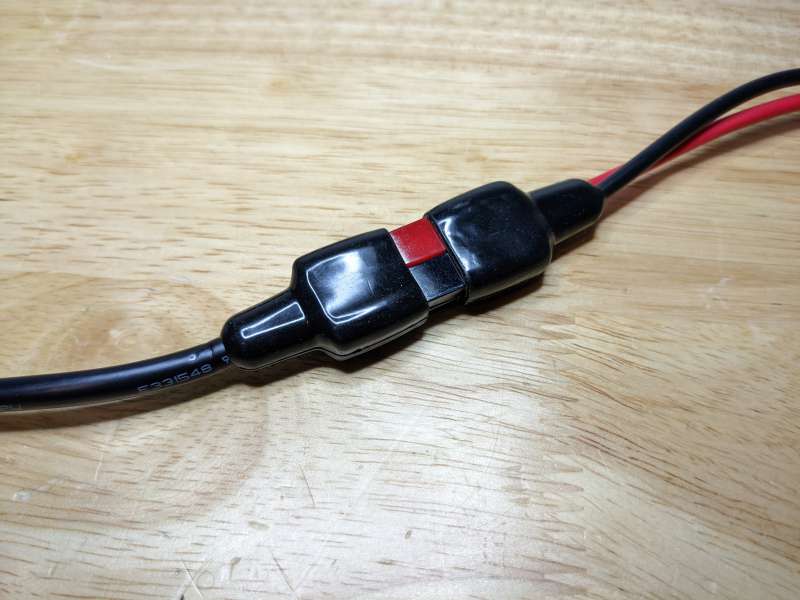
Two of the included cables are Anderson to bare wire, the bare wire ends are inserted into the terminals of the Solar Charge Controller and the Anderson ends can be linked to any other Anderson connectors.
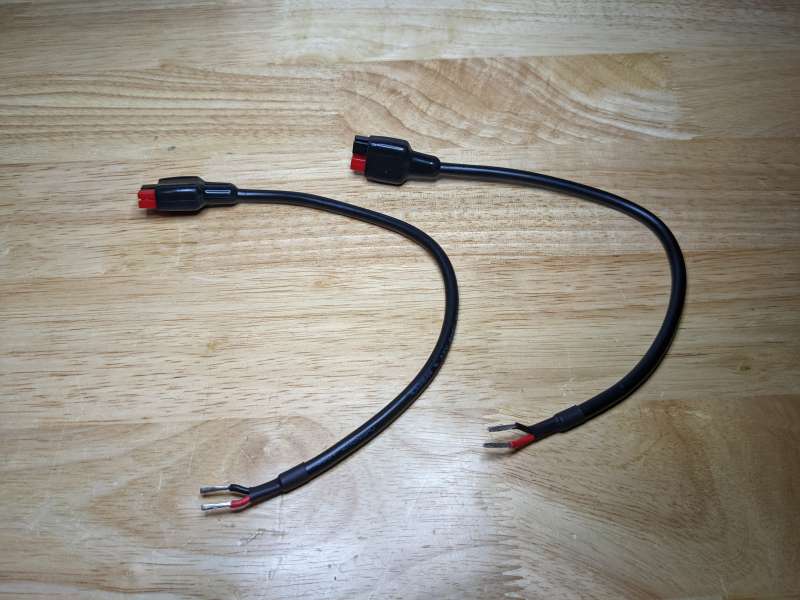
The Anderson to Alligator Clip cable is used for attaching the charge controller to batteries.
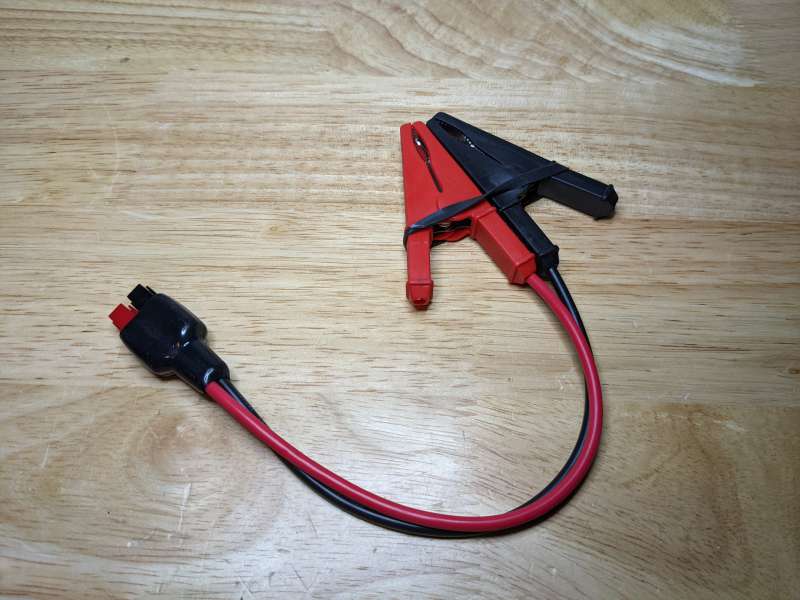
The Anderson to DC5521 cable is for utilizing any of the 10 adaptor plugs and connecting the Anderson cable from the solar panel junction box to most any power station .
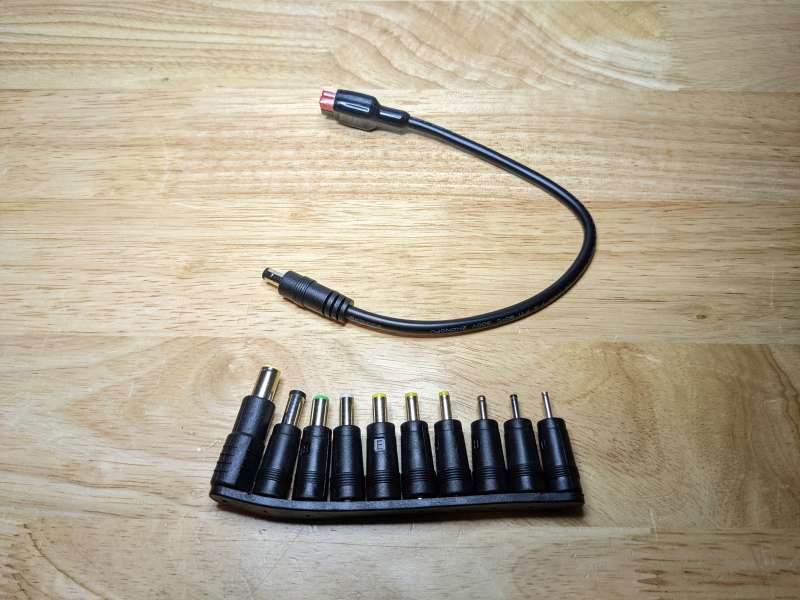
Once removed from the carrying case in the folded configuration the FlexSolar panels are protected on one side by heavy fabric.
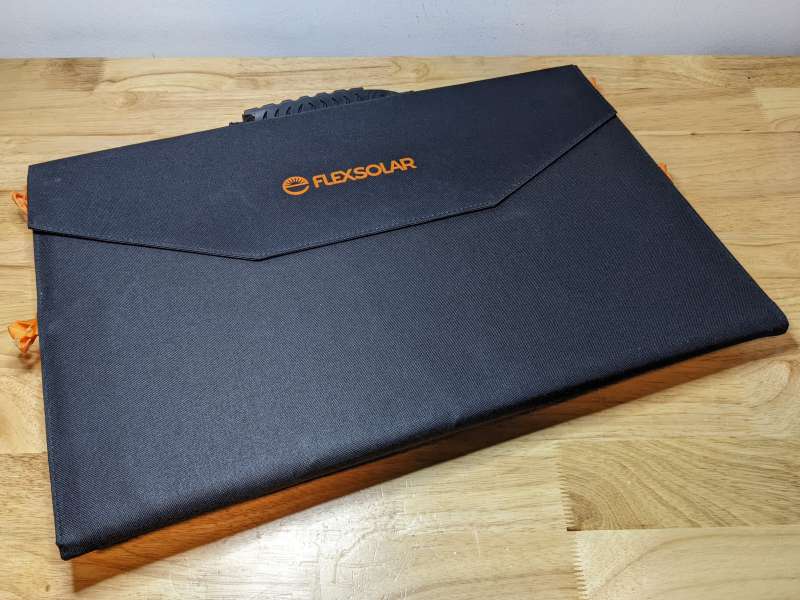
The front flap secures the panels closed with Velcro.
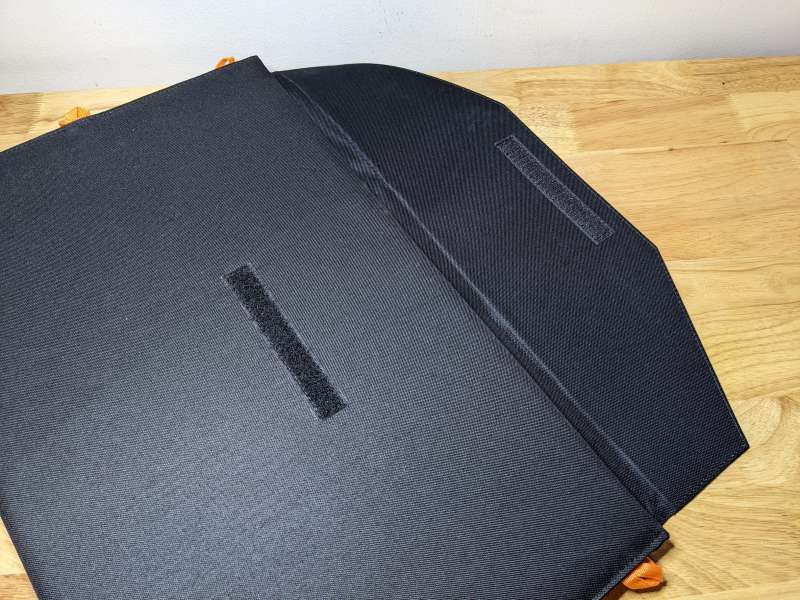
On the back of the panels inside of an integrated zippered mesh bag is the attached junction box.
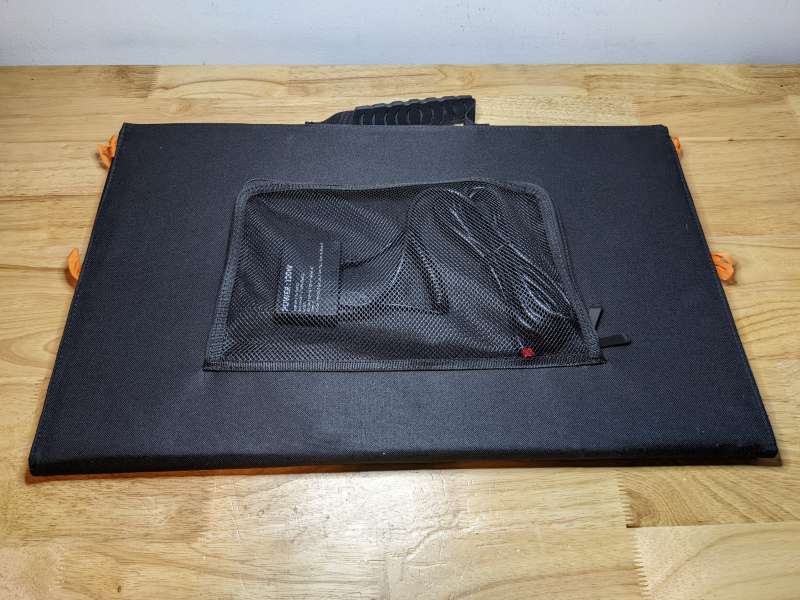
The junction box has a hardwired 10-foot cable with an Anderson plug on the end for connecting to power stations using the 10-in-1 adaptors. It also has three charging ports; a USB 2.0 port connected to the end of a coiled cable, a USB 3.0 port, and a USB-C port which allows the FlexSolar to charge some devices at 60 watts. The 60W PD USB-C port also enables you to charge a power station from both it and the hardwired Anderson cable simultaneously as long as your unit has the option to accept charges from both. With an optional cable, you can also use the junction box to chain two 120W panels in parallel.
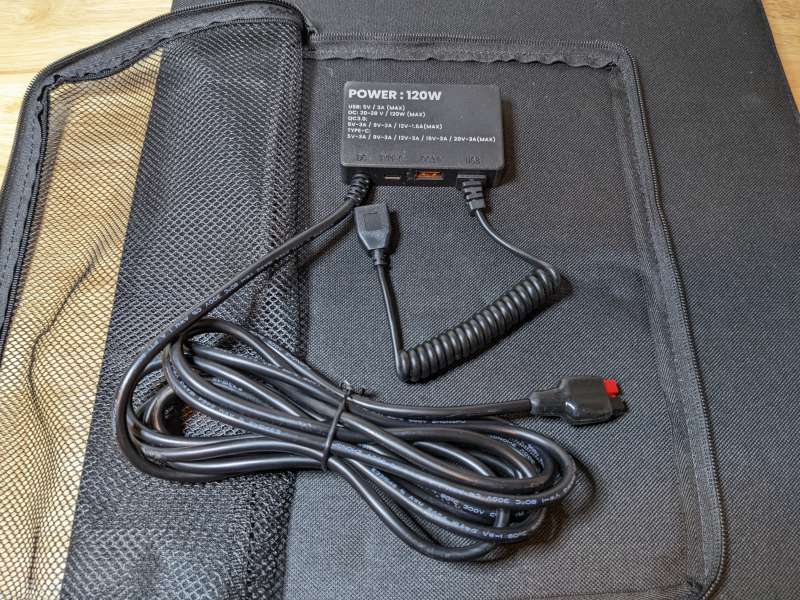
Unfolded, the panels reach about five and a half feet in length. The FlexSolar panels have a monocrystalline inlay, which is more efficient than older types of solar cell inlays and supposedly returns a stated 24% efficiency.
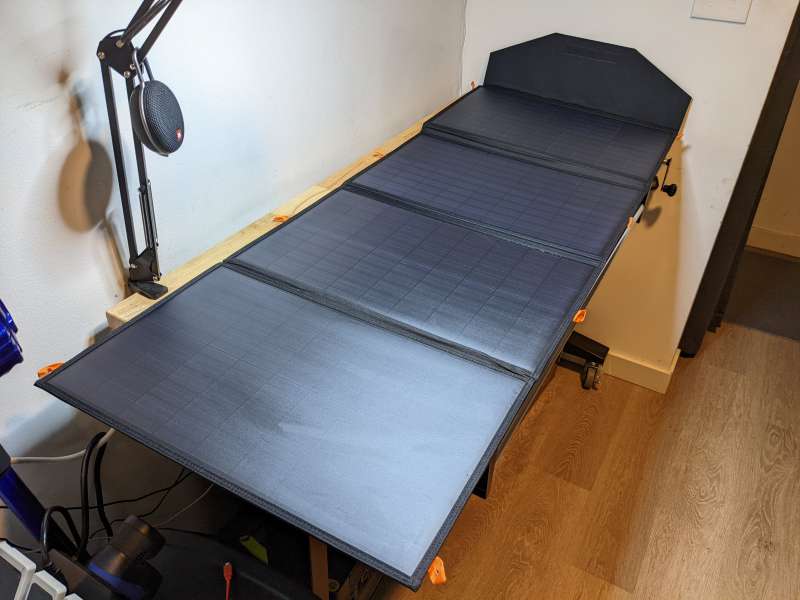
The panels have tiny fabric loops along the edges which allow you to hang them on the side of a tent or car. These are portable panels which may be why they don’t have grommets which are typically found in panels of this size. Grommets would allow you to screw down the panels to prevent theft or shifting around. For a portable kit, security isn’t as much of a concern since you’d be setting up and removing it frequently. I plan on using the FlexSolar kit for car camping and most likely will have it laid out across the windshield or roof of my car so not having grommets isn’t a deal-breaker for me, especially at the great price.
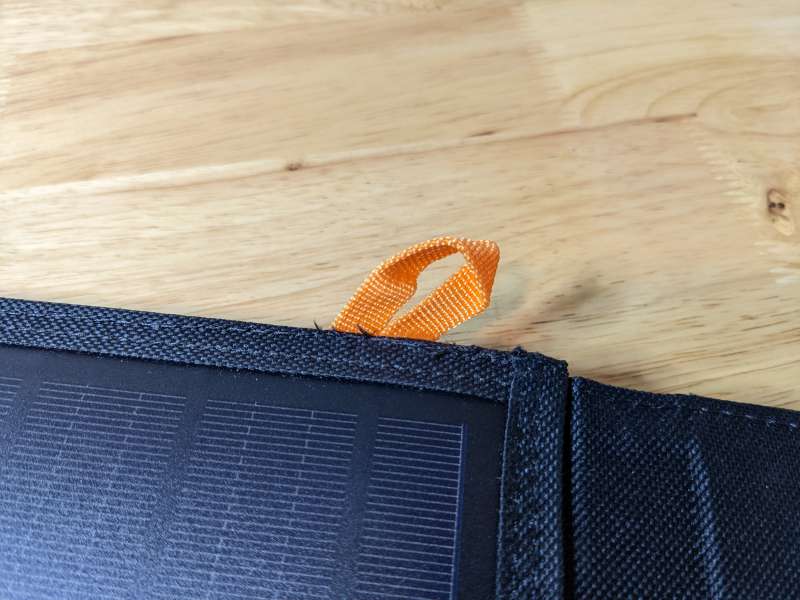
The panels are well protected inside of the sealed hard plastic sleeves and dirt is easily wiped off with soapy water. One concern I do have is that the panels and junction box are only rated IP65 which means they are not fully waterproof, just resistant to direct water jets and dust. I would be afraid of the junction box getting wet and being damaged during use.
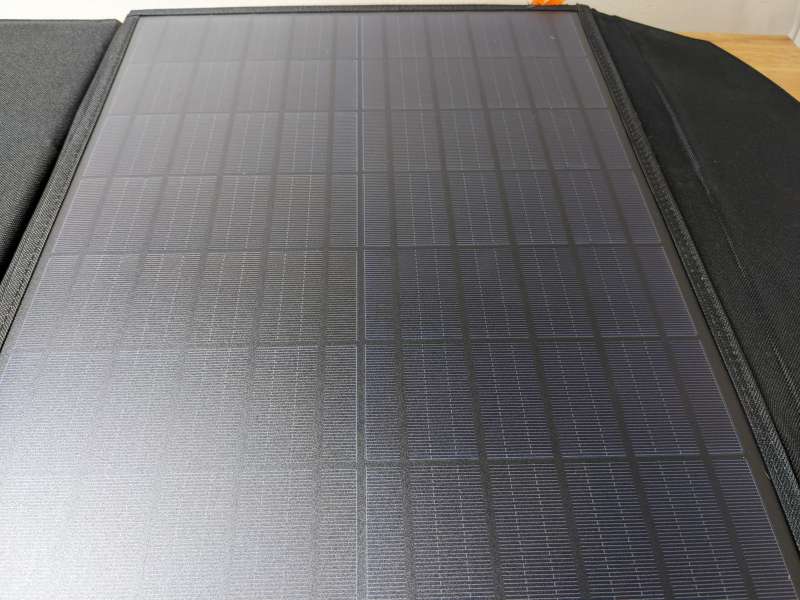
Setting up the FlexSolar kit depends on how you’re planning to use it. For charging batteries like for RVs or cars, the Solar Charge Controller needs to be wired correctly before use. Simply loosen the screws on the unit with a Phillips screwdriver and insert the ends of the bare wire cables into the corresponding positive or negative terminals. Tightening the screws will secure the cables in place. There are small icons over the terminals indicating power input from the solar panels, power output to a battery, and power output load terminals.
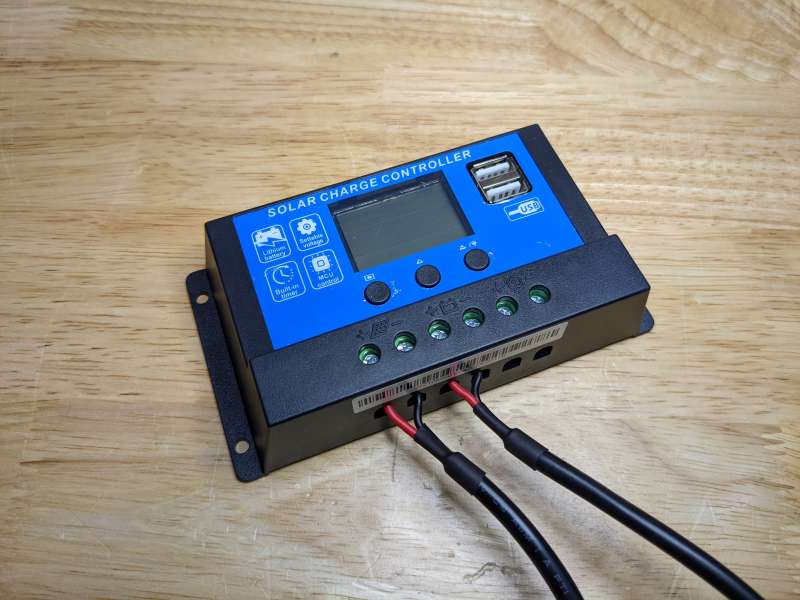
The hardwired Anderson cable from the solar panels connects to the cable from the solar panel input. For use with a car battery, the Anderson to Alligator Clip cable connects to the battery port and the Alligator Clips connect to the battery terminals. The Solar Charge Controller must be connected to the battery BEFORE being connected to the solar panels, doing so otherwise will damage the controller. Power from the battery will activate the controller and allow you to run through the menus and configure it for the type of battery being used.
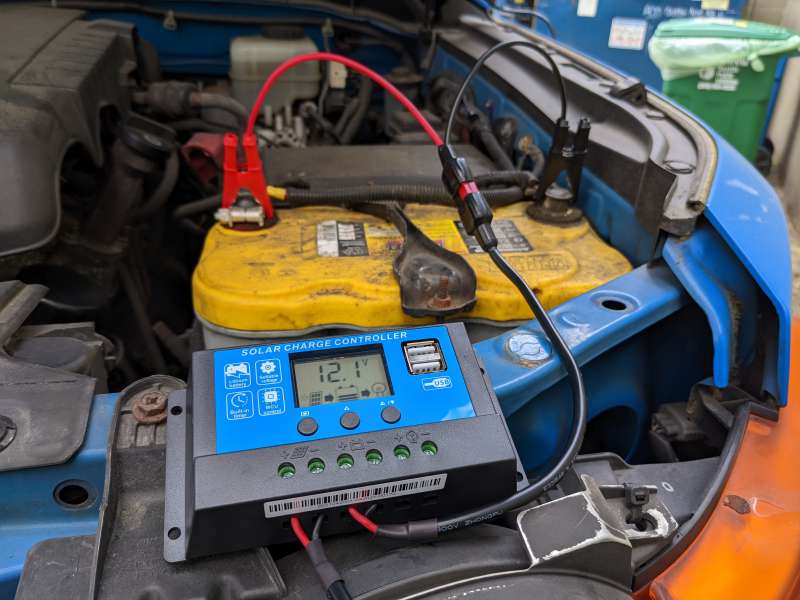
When not using the Solar Charge Controller you simply connect whatever devices you want to charge, including a power station, to the junction box and lay the panels out in the sun. The LED on the junction box will light red when generating power from the sun and green when any device is plugged into the USB-C port.
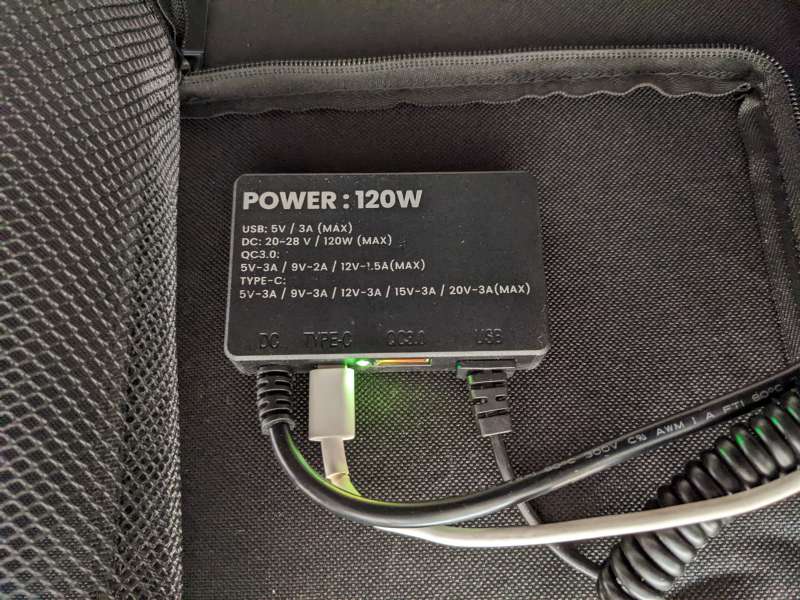
The FlexSolar panels are designed to be laid flat 90 degrees to the sun so they do not come with any foldable stands or mounts. This may just be a marketing ploy to justify not including mounts though, which normally would come in handy when the sun is at different angles.
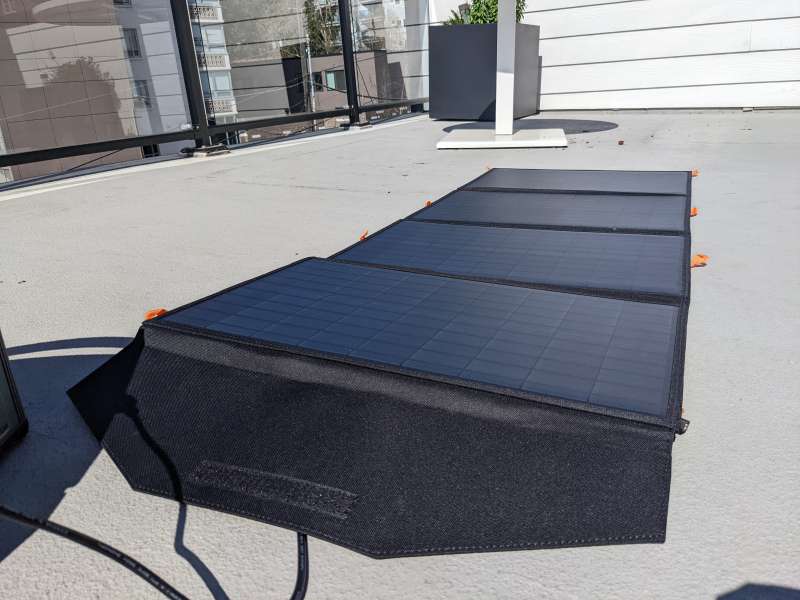
Performance
While I had the bright idea of testing a solar panel kit in a city known mainly for its cloudy skies and rain, I was lucky enough to get a few partly sunny days on the roof of my building to test out the FlexSolar kit.
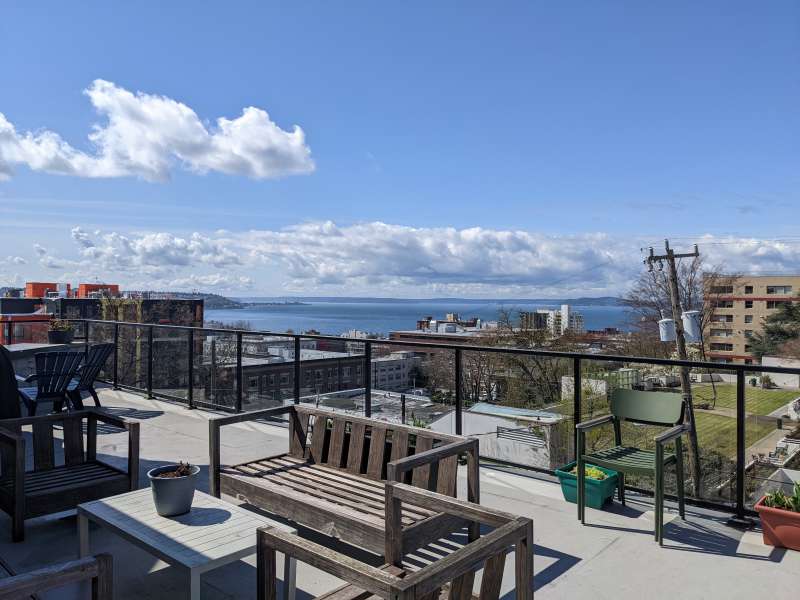
Once I laid out the panels, which was very easy to do, I immediately started charging my phone from the junction box first using the USB 2.0 port. I was able to measure power output from the panels at about 5V and the panels were able to charge my Pixel 5 rapidly even though it was only partly sunny out.
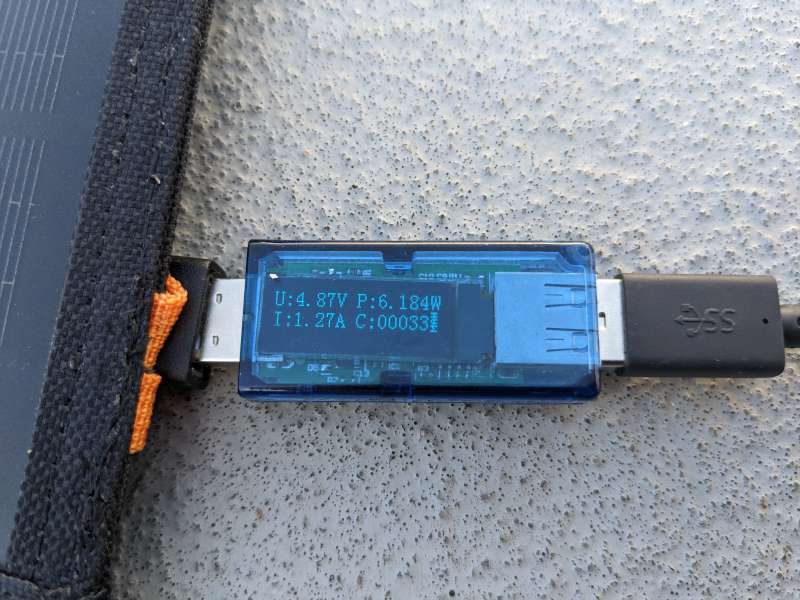
I also tried charging my phone from the USB 3.0 port and the USB-C port. All three ports on the junction box consistently provided about 5 V of power. This really impressed me since each of these ports can be used simultaneously to charge different devices without losing any voltage.
Using the Ampere app, I was also able to confirm the voltage to my phone at between 4 and 5V and an average of about 1045mA.
I then connected the junction box directly to my Goal Zero Yeti 1000 Core Portable Power Station , which I reviewed in September 2021, using the hardwired Anderson cable and the 8-millimeter connector.
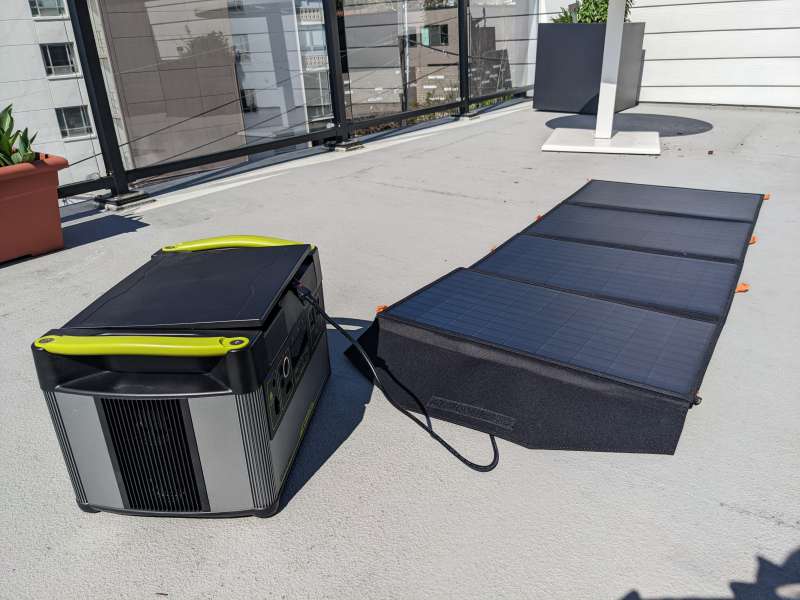
The FlexSolar panels were able to steadily pump out about 70 to 74 watts of power to the Yeti, much lower than the 120 watts it’s capable of in ideal conditions, but still impressive for the day.
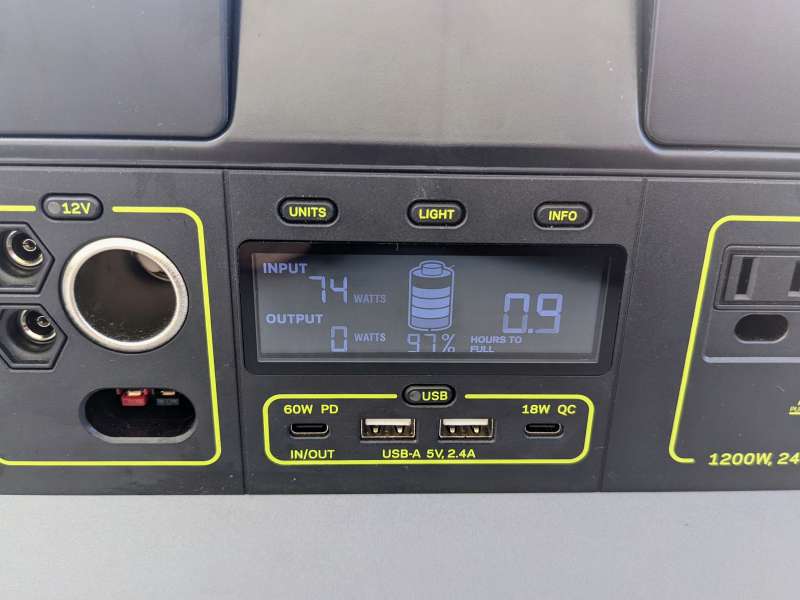
If I wanted to, I could have also connected a 60W USB-C to USB-C cable from the junction box to the 60W PD port on the Yeti to pick up some additional charging power.
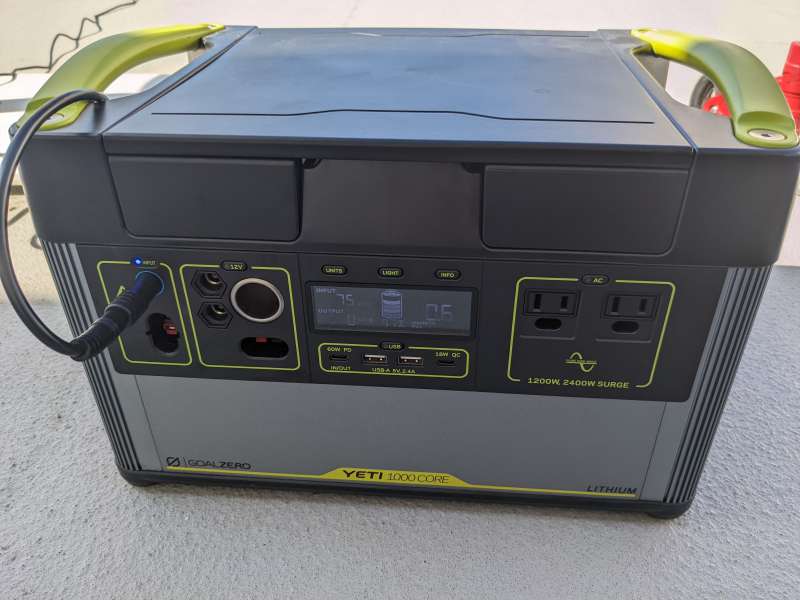
One issue I did have was with the 8mm adaptor plug. While I did find the inclusion of the various connector tips useful, the length of the plug caused it to be a little unstable and it fell out a few times with barely a nudge. Again, not a huge problem but I made sure to secure the input with some tape to keep it from falling out.
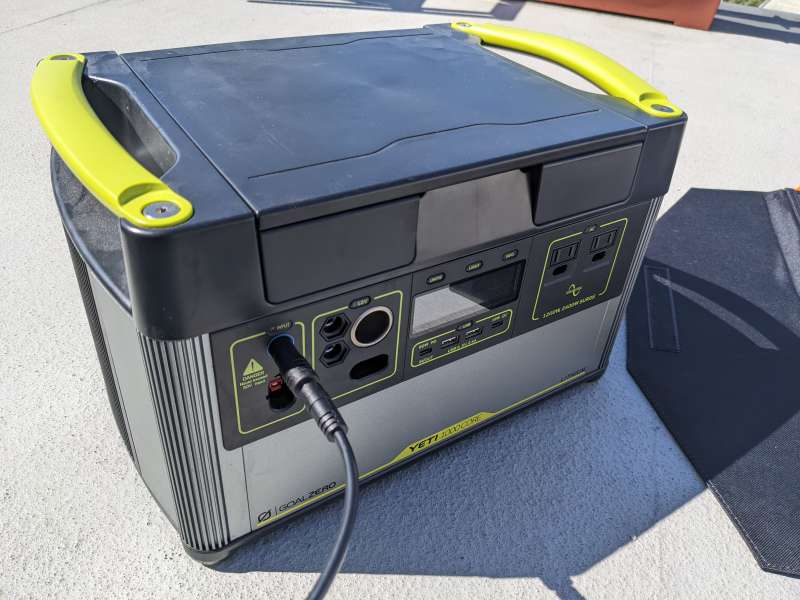
I also tested out the FlexSolar and its Solar Charge Controller using my FJ Cruiser’s car battery with some great results.
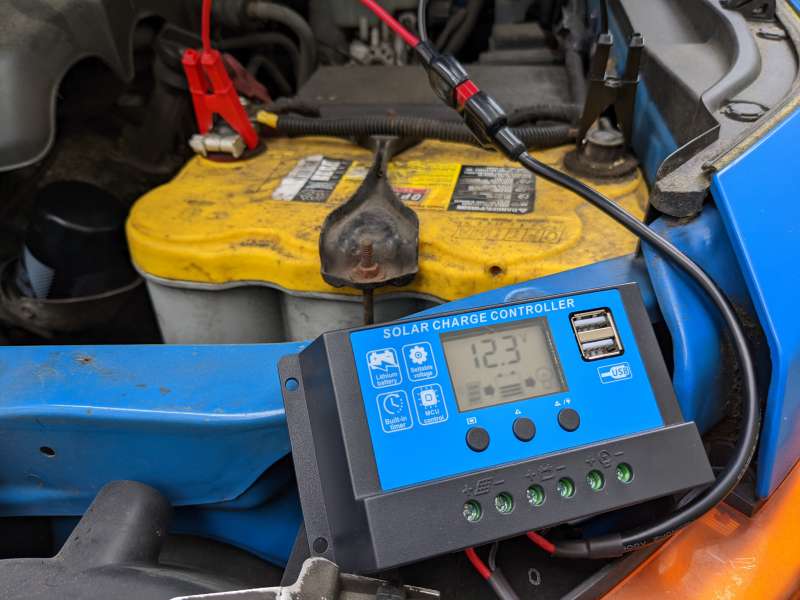
I put the solar panels on the top of my FJ for convenience which is typically the type of setup you might use in an emergency if you’re out in the woods and your car battery dies.
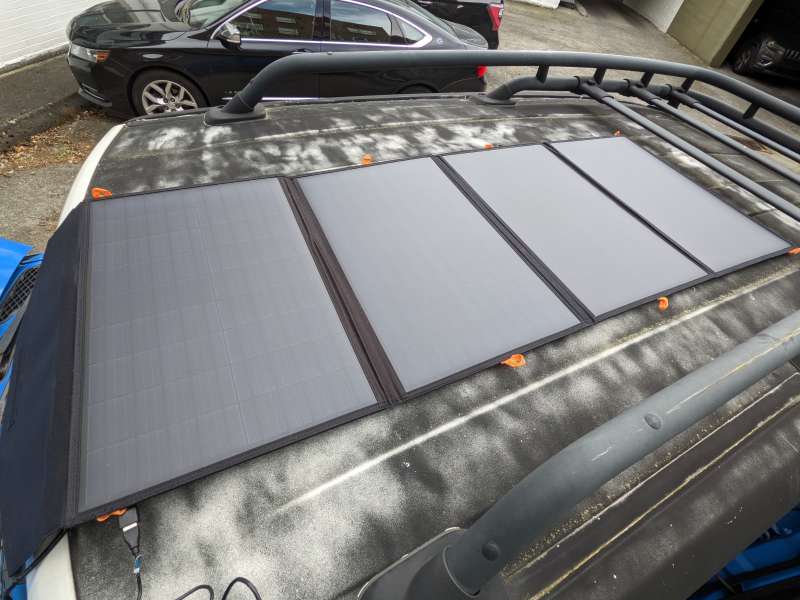
Once again making sure to connect the controller to the battery before connecting it to the panels, I was able to get about 12V of power delivered to my car battery. Over time the panels would be able to completely recharge the battery even if I was using it at the same time to power other devices. A typical RV setup would have an inverter coming off of the battery powering my devices and then the controller and the panels refilling the battery as it depletes. The controller USB ports can be used as well in this configuration.
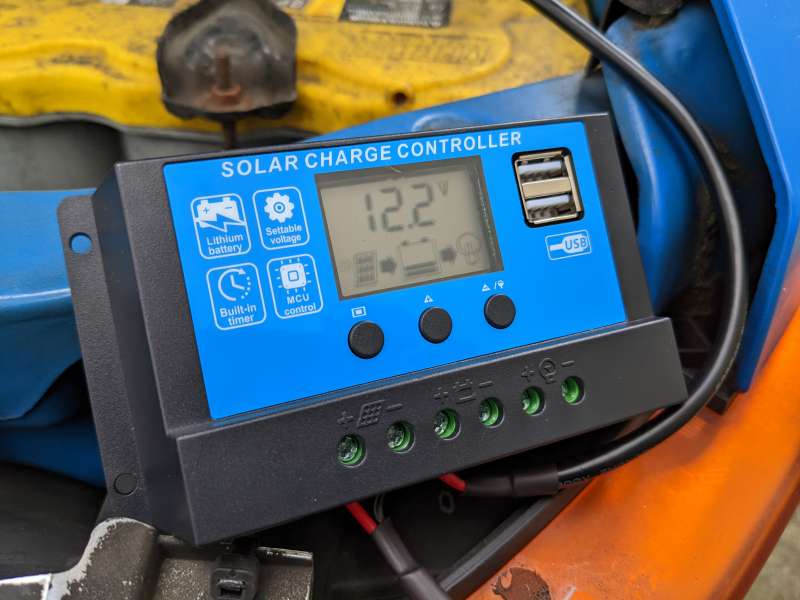
If I was even more power-hungry, I could utilize the USB ports on the solar panel junction box to power even more devices at the same time.
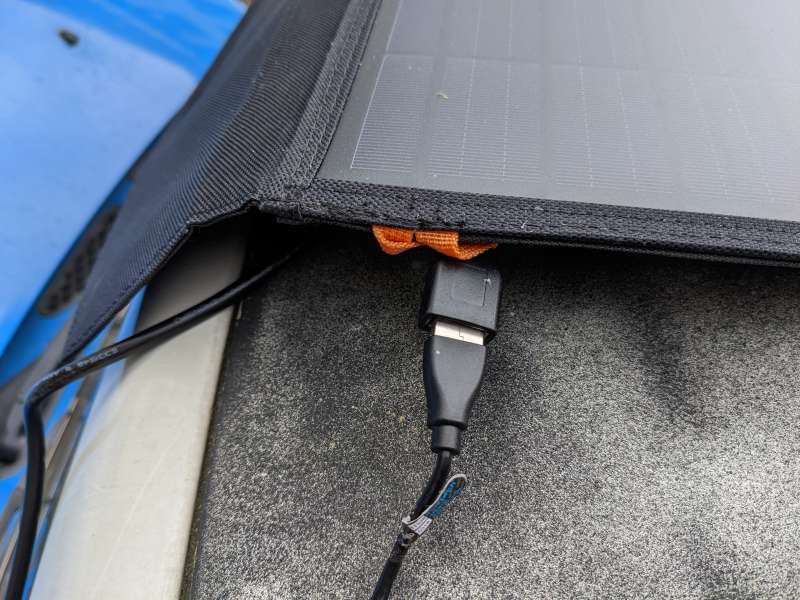
Being able to charge my car battery with solar power is a game-changer for me and secured the FlexSolar a spot in my FJ’s emergency kit.
Overall, I was really impressed with the price, portability, and performance of the FlexSolar 120W Kit. Not only does it add to the usefulness of my Goal Zero Yeti 1000 it can power all of my power banks at once for as long as the sun continues to shine.
What I like
- Easy to set up and break down
- Included charge controller adds expanded functionality out of the box
- Multiple ports allow charging simultaneously from panels and charge controller
What needs to be improved
- Panels and junction box are only IP65 rated, not fully waterproof
- No included or integrated stands for panels
Final thoughts
The FlexSolar 120W Foldable Solar Panel Kit is an affordable, versatile alternative to most similarly powered solar panels. The panels themselves are sturdy, portable, and easy to set up although it would be nice if they were more water-resistant. The included charge controller adds a lot of value to the kit by allowing you to set it up in multiple configurations depending on the situation. Additionally, the 10-in-1 connector set, charging cables, and multiple ports will work with just about any power station, electronic device, or power bank. The best feature of the FlexSolar is that all of this versatility comes at the bargain price of $199. Whether kept in your vehicle as an emergency battery charger or as part of a basic RV setup, the FlexSolar 120W Foldable Solar Panel Kit is a great buy.
Price : $199.99 Where to buy : FlexSolar or Amazon Source : The sample of this product was provided by FlexSolar
About The Author
Joe Porletto
2 thoughts on “flexsolar 120w foldable solar panel kit review – the power of the sun in the palm of your hand”.
- Gadgeteer Comment Policy - Please read before commenting
Hola Joe Resido en Puerto Rico. En 2017 el huracán María nos ocasionó mucho daño y estuve sin luz por mas de un mes. Por si volvía a ocurrir otro desastre, este año compré un SunBeatGo(portable power station) con los FlexSolar fordable panels. El huracan Fiona, nos azotó el domingo 18 y estoy sin luz desde entonces. Necesito instalar mis paneles y no sabía como hacerlo. Tu explicación me ha sido de gran utilidad para llevar a cabo el proyecto. Muchas gracias.
Me alegro mucho de que te haya ayudado el artículo. ¡Por favor, mantente a salvo!
Leave a Comment Cancel Reply
Your email address will not be published. Required fields are marked *
Don't subscribe All new comments Replies to my comments Notify me of followup comments via e-mail. You can also subscribe without commenting.
The 7 Best Portable Solar Panels
The Renogy 100-watt monocrystalline panel tops our list.
:max_bytes(150000):strip_icc():format(webp)/amber-nolan-treehugger-1176312d929641738b90616acb97fdf1.jpg)
- College at Brockport, State University of New York
- Renewable Energy
- Fossil Fuels
We independently evaluate all recommended products and services. If you click on links we provide, we may receive compensation. Learn more .
Treehugger / Chloe Jeong
Whether you’re planning a road trip , sailing adventure, beach getaway, or camping trip , keeping electronics charged up in remote areas can be challenging. Solar energy is an excellent, eco-friendly option for staying powered up on the go, but traditional panels are bulky and designed to stay fixed in one place. However, a large number of portable solar panels are now available that are lightweight, powerful, and built to withstand the elements. They’re also compact enough that you can keep them stored away for use in the event of an emergency power outage.
We’ve sorted through a variety of products to find the best portable solar panels.
Best Overall
Renogy 12 volt monocrystalline portable foldable solar panel.
For a portable panel that’s ideal for van life and recharging RV or boat batteries, the Renogy folding 100-watt panel is built to withstand the elements. It tops our list because it's a versatile, sturdy, and efficient panel at a moderate price. Measuring 40 inches long x 27 inches wide (when open), the panel is extremely efficient—even in low-light areas or cloudy days. The unit includes a corrosion-resistant aluminum stand and a rugged protective case with heavy-duty handles and latches.
The Renogy panel can be purchased with or without the solar controller and can be combined with a power station for the full off-grid package. The panel weighs about 20 pounds, and a 200 watt option is also available at a higher cost.
Weight: 20.5 pounds | Dimensions Open: 40 x 27 x 1.5 inches | Dimensions Closed: 20 x 27 x 3 inches | Output: 100 watt
Best for RVs
Go power portable folding solar kit with 10 amp solar controller.
Weighing 28.66 pounds, the Go Power! GP-PSK- 130 is one of the heavier options out there, but it’s a great match for RVers who require a little extra off-grid power to top off batteries (or if an RV park bills for electricity separately). The 130-watt panel delivers an impressive 6.9 amps per hour, has a built-in solar controller with a digital screen to monitor input and transmit power, plus adapter cables to connect to a battery.
The self-standing panels can easily fold in half and fit into the included case for easy storage—making them a great alternative to mounting to the roof.
Weight: 28.66 pounds | Dimensions Open: 32.5 x 39.8 x 1.4 inches | Dimensions Closed: 32.5 x 19.9 x 2.8 inches | Output: 130 watts
Best Solar Kit with Battery
Jackery solar generator and panel.
If you’re interested in a solar panel for traveling but also require a battery charge station, Jackery Power Outdoors is a leader in off-grid power supplies. The Solar Generator SG550 comes with a whopping 100-watt panel that folds shut and can easily be toted away using the carry handle.
The power station's 500-watt continuous output can charge a laptop at least seven times before it requires a recharge. The panel also has a built-in MPPT module that monitors the voltage and output of the solar panel, adding up to 23% more efficiency, and can charge up to seven devices at one time.
Weight: 9.1 pounds (panel only) | Dimensions Open: 21 x 48 x 0.2 inches | Dimensions Closed: 21 x 24 x 1.38 inches | Output: 100 watts
Best Budget
Dokio portable foldable solar panel.
Despite providing an impressive 160 watts of power, the Dokio Portable Monocrystalline Controller is a surprisingly affordable option for those shopping for panels on a budget. At 9 pounds, this folding panel is lightweight and easy to carry but must be positioned in the sun by leaning it against a tent, car, or another sturdy surface (no kickstand is included).
The panels can be connected directly to most power stations, but if you’re powering up a battery, alligator clips and a solar controller are included. Although water-resistant, the exterior is made of nylon and should not be left outside when not in use.
Weight: 9 pounds | Dimensions Open: 22 x 85 x 0.5 inches | Dimensions Closed: 22 x 21 x 1.1 inches | Output: 160 watts
Best for Camping
Ecoflow 110w solar panel.
When bringing a solar panel on camping trips, you’ll want to look for something lightweight, durable, and powerful enough to charge your cameras, portable speakers, lights, and other camping gadgets. The Eco Flow Portable Solar Panel has two different sizes: 110 watt or 160 watts with a high conversion efficiency of up to 22%. It also includes an MC4 cable connector and carry case.
If your camping trip takes you across rivers or kayaking across lakes, the panel has an IP67 waterproof rating, so it can hold up to Mother Nature better than many of its competitors. The unit consists of four folding panels and weighs under 9 pounds.
Weight: 8.8 pounds | Dimensions Open: 20.2 x 62.5 x 0.8 inches | Dimensions Closed: 20.2 x 16.5 x 0.8 inches | Output: 110 watts
Best for Phones
Sunjack 15 watt foldable solar panel charger.
If you primarily need to recharge phones or small gadgets, the SunJack 15 Watt Foldable ETFE Solar Panel is a cost-efficient option that’s both compact and powerful. When not in use, the Sunjack is the size of a computer tablet and weighs just 1.3 pounds. The three interconnected, foldable panels are weather-resistant, shockproof, and stain-proof.
Its protective coating helps maximum energy conversion of the sun, while built-in smart technology identifies the type of device to avoid overheating. Although you can charge directly from the sun (using dual USB ports), the panels work best (and have the most consistent charge) when used in combination with a portable power bank.
Weight: 1.3 pounds | Dimensions Open: 20 x 10.5 x 0.5 inches | Dimensions Closed: 6.5 x 10.5 x 1.2 inches | Output: 15 watts
Best Briefcase
Goal zero boulder 100 solar panel briefcase.
Goal Zero got its start in 2007 by designing solar products for rural communities in Africa that never had access to power. Since then, the company has become one of the most recognized names in durable solar equipment, and the Goal Zero Boulder Briefcase is a popular, rugged option for keeping things running smoothly at basecamp.
The two folding 50-watt panels can be angled using the kickstand and are built with a sturdy aluminum frame with reinforced corners and strong tempered glass. The attached power cable is 6 feet long. The simple design makes it easy to connect additional panels for even more charging, or combine it with other stations like Goal Zero’s Yeti series of solar generators. It's backed by a two year warranty.
We also like that Goal Zero supports disaster relief efforts, with both direct product donations and though employee volunteering.
Weight: 25.9 | Dimensions Open: 26.75 x 43.5 x 1.75 inches | Dimensions Closed: 26.75 x 21.75 x 3.75 inches | Output: 100 watts
Our top pick is the Renogy 100-Watt Monocrystalline Panel that’s an easy choice for RVs, boats, van travel, or a day at the beach. For something a little more affordable, the Dokio Portable Monocrystalline Controller is an attractive lightweight alternative.
What to Look for When Buying a Portable Solar Panel
Power output.
When buying a panel, consider what you’ll be charging to calculate what size panel you’ll need. Smaller devices like phones will do just fine on the 15-watt panel, while larger devices like coolers will need a larger panel (and usually a battery to store that energy). The wattage refers to the DC maximum output during optimal conditions, but keep in mind cloud cover can prevent it from achieving maximum output.
Since you probably plan on taking the panel with you while traveling (or at least moving it around the yard), you’ll want something that’s sturdy, weather-resistant, and compact enough that it can be easily stored and transported. Keep in mind the type of travel you’ll be doing: if you’re hiking and carrying your gear on your back, the lighter the panel the better. Heavy-duty latches, rust-resistant materials, protected glass, and reinforced parts are important to the panel’s longevity.
Size and Weight
Depending on how you’re traveling and the storage space you have available when not in use, the size and weight of your solar panel are important factors. Many of the panels can fold into easy-to-carry cases, but you may require something even smaller if space is limited. Although panels with nylon exteriors may be lighter, they may not be as durable as ones with a metal frame. If you're just looking to power lights and don't need to charge devices, you may be better off picking up a lightweight solar lantern instead.
Device Compatibility
Finally, think about what you want to charge with your panels, and check that your solar panels are compatible with these devices. If not, you may need to buy additional cables or adapters. Many of these panels are designed to be compatible with batteries and power banks made by the same manufacturer.
Portable solar panels can be used to recharge devices directly or to charge batteries or solar generators . Some panels can be connected directly to phones or small devices for charging when the sun is out (panels must be angled toward the sun). However, direct sun charging can be inconsistent. It’s best to use a solar panel to capture energy and store it in some kind of battery (like a solar controller, battery pack, or charge station), and then connect devices to that—particularly with stronger panels.
A quality, permanent, fixed solar panel should continue producing a solid energy output for 25 to 30 years, but it’s a good idea to check if the panel includes a warranty. We've seen firsthand our fair share of cheaper panels that quit working after a couple of years that did not include a warranty.
Many portable solar panels are made of more lightweight materials and aren’t likely to last that long. They run the risk of becoming damaged during transport or after prolonged use outside, so it’s best to purchase a durable panel that can withstand the hazards of travel.
Most portable solar panels are water or weather-resistant—meaning they should not be submerged underwater but can be left outside in light rain. However, that doesn’t mean that every portable panel should be left outside permanently. Check with the manufacturer to ensure the panel will meet your needs.
If you set up portable solar panels turned towards a sunny window or skylight, they will charge. However, it won’t be as effective as charging the panels directly in bright sun outside.
Why Trust Treehugger?
Amber Nolan has been using solar power in her houseboat for several years. When traveling, she personally owns the Jackery solar panel.
- The 7 Best Solar-Powered Generators of 2024
- The 7 Best Solar Power Banks
- Your Guide to RV Solar Panels: Components, Installation, and More
- Review: SunJack 14W Solar Charger & Waterproof LightStick
- This Super-Bright LED Strap Light Is Ridiculously Useful (Review)
- The 6 Best Home Battery Storage Systems
- Are Portable Solar Panels Worth It? Everything You Need to Know
- What Are Flexible Solar Panels?
- Best of Green Awards 2021: Eco Tech
- Eco-Friendly Laundry: 11 Low-Tech and Simple Methods for Washing Clothes More Sustainably
- Happier Camper Unveils Its Latest and Most Affordable Travel Trailer
- The 7 Best Solar Ovens
- 7 Ways to Charge a Phone When the Power's Out
- What Is the Best Electric Bike for Older or Novice Riders?
- Indoor Light Series
- Classic Application Series
- WeatherLite Series
- WeatherPro Series
- LightSavers
- Accessories
- Man-Portable
- IoT Ecosystem Partners
- Agriculture
- Industrial Automation
- Case Studies
- Custom Design Tool
- Design Process
- Connections & Mounting
- Encapsulation
- Panel Shape
- Electronics & Storage Elements
- Semi-Flexible
- Ultra High-Efficiency
- Energy Harvesting PMIC
- Integrated Solutions
- Solar Education
- Solar In Action
- Product Reviews
- Product Literature
- Compliance Information
- Webinars & Slide Decks
- Distributors
- Mailing List
- Terms & Procedures
120W Foldable Solar Panel (F16-7200)
/120W%20Foldable%20Solar%20Panel%20folded%20500%20x%20479).jpg?width=500&height=479&name=120W%20Foldable%20Solar%20Panel%20folded%20500%20x%20479).jpg)
Specifications
Wattage: 120W
Operating Voltage: 15.4V
Current: 7.2A
Folded: 14.5 x 14.0 x 3.0 (in) / 368.3 x 355.6 x 76.2 (mm)
Unfolded: 86.5 x 55.0 (in) / 2,197.1 x 1,397.0 (mm)
- 6.3lb / 2.9kg
- Description
- Important Notes
- How To Charge
- Where To Buy
Click the Where To Buy tab to see which distributors stock this product.
Are you interested in purchasing a large quantity? Contact us directly.
The 120W Foldable Solar Panel is designed to charge small to medium electronic devices using DC power or one of many available accessories.
What's included:
12V Female Car Charger Adapter (RA-2)
12V battery charging
Small DC electric coolers
Camp lighting
HAM Radio and similar communications gear
Easy to Use - Unfold the panel and start charging in seconds.
Durable - marine grade connectors, weather-resistant fabric, military tested.
Low Light Operation - provides some power even in hazy or shaded environments.
Lightweight - No frames, no special stands or mounting brackets needed.
Portable - Folds into a small package that fits in most backpacks.
Foldable Solar Panels are designed for regular outdoor use but not permanent outdoor installations. While light rain will not damage the panels if they are brought inside and dried before storing, the panels are not weatherproof and should not be deployed in poor conditions. The fabric may discolor and fray with permanent outdoor exposure, and the individual solar modules may also be compromised.
Always store the Foldable Solar Panel in a cool, dry environment. If the panel is wet, allow it to thoroughly dry before folding and storing it to avoid damage (temperature range -30 to 60° C).
All connections must be solar positive (red) to battery positive and solar negative (black or blue) to battery negative. Reversing can damage the solar panel. Consult your battery manufacturer if you have questions about the specifications of your battery.
A charge controller is not required if the battery capacity is 100x greater (or more) than the panel output. For example, a 100Ah battery would not need a charge controller if the panel output is 1A or less. If a charge controller is required, please size it appropriately to the panel output.
Operating Voltage and Current are typical values when tested under load at AM 1.5 lighting conditions. Power performance may vary due to temperature, light spectrum, angle to the sun, and other effects (minimum 95% rated when new).
Part Numbers
Product part numbers on paperwork and invoices will include additional information not seen on the Foldable Solar Panel's physical label. Below are the codes added that designate color.
Black - (BLK)
Khaki - (KHA)
Woodland - (WL)
Digicam - (ACU)
3 Color Desert Camo - (3CD)
LiteLok Coyote Brown - (CB)
LiteLok Multicam (LTMC)
- Unfold the panel with the solar side facing up and pointing towards the sun.
- Use the grommets on each corner and a tie cord to hold the panel in place and reduce loss or damage from high winds.
- Connect the appropriate accessory and cable for the type of device you will be charging.
Electronics:
Connect the 12V Female Car Charger Adapter (RA-2) (included) to the panel.
Use your own USB car charger adapter to connect your device to the RA-2, or use a 2.4A Dual USB 12V Adapter (RA-14B) (not included) to charge USB electronics.
12V Batteries:
Connect panel output to the input of the appropriate charge controller, if required (4.5A, 6A, and 10A charge controllers available) (not included) (see Important Notes section for more information).
Connect the desired cable to the output of the charge controller or panel. Use the 15 ft. Extension Cord with O-ring Connectors (RA-11) or 15 ft. Extension Cord with Alligator Clips (RA-8) (not included) when connecting directly to the battery. Use the 12V Male Car Charger Adapter (RA-1) (not included) when connecting through a vehicle’s cigarette lighter or accessory outlet.
If using an RA-8 or RA-11, connect the red connector to the + battery connection and the blue or black connector to the - battery connection. If using the RA-1, plug it into your vehicle’s cigarette lighter or accessory outlet. Note: in some vehicles, these outlets are not connected to the battery when the ignition is off, so the solar panel will not charge the battery. Consult your vehicle’s owner’s manual for more information.
10A Charge Controller (CC12V-10)
2.4A Dual USB 12V Adapter (RA-14B) use with the included 12V Female Car Charger Adapter (RA-2) to charge USB devices
Anderson Power Pole Connector (RA-13)
15 ft. Extension Cord with Alligator Clips (RA-8) for quick temporary connections to batteries.
15 ft. Extension Cord (RA-7)
Daisy Chain Cable (RA-6-HD) - connect a second panel (must be the same voltage) in parallel generating up to 20A (if necessary, use a charge controller appropriate for the combined panel output).
Adventure Accessory Kit (AK-2) includes:
Daisy Chain Cable (RA-6-HD)
15 ft. Extension Cord with Alligator Clips (RA-8)
12V Male Car Charger Adapter (RA-1)

United States
Ships internationally.
Ships Domestically
International
United Kingdom
Switzerland
Instructions

- Electronics
- Home Energy
- Customer Care
- Agent Program
User Manual
- Operation Video
We will send you an email to reset your password.
Search our store

Baldr Solar Panel BF120W
Professional Outdoor Power Supply: These portable solar panels are made of ECTFE laminate and weighs 10.25lbs. It's foldable ( 20.47*14.57*2.17 inches), waterproof and adjustable feet. It can be carried and provide you with sufficient power for camping, mountaineering, and more.
Wide Compatibility: This portable solar panel charger is designed for portable power stations. You can charge items like mobile phones, tablets, laptops, GPS, digital cameras, etc. This solar panel is compatible with our Baldr series power stations.
High Conversion Efficiency: The 120w solar panels are monocrystalline panels which feature a conversion efficiency rate up to 23%. Under low light conditions, its performance is better than similar rated polysilicon solar panels.
Smart Charging: The solar panel has a built-in smart IC chip. The chip will identify your device and adjust the charging speed accordingly. It will also protect your device from overcharging. Dual USB ports QC3.0 and USB-C (maximum 15V 3A). The 18V DC output is also available to charge your equipment.
Ask a Question
* Required fields
- FAQ & REVIEWS
Baldr is committed to providing outdoor green power solutions for explorers
The Baldr 120W solar panel comes with a foldable design. Its folded size is 20.47*14.57*2.17 inches, its unfolded size is 65.35*20.47*0.98 inches, and its only weighs 10.25 lbs / 4.65 kg. It also comes equiped with adjustable brackets so you can properly angle your solar panel towards the sun.
You can use the Baldr 120W Solar Panel kit where ever you go! You can use on vacation, while camping, RVing, and traveling anywhere on the open road. Using solar power has never been so easy!
Portable and Foldable
When used outdoors, it can be carried with one hand and is convenient take it to anywhere.
USB Smart Charging Technology
Equipped with 1* USB-C (PD 45W max) output port and 1* USB-A (QC3.0) output port, charging multiple small devices at the same time, including smartphones, tablets, digital cameras and more.
Multi-Intelligent Protection
Voltage Control, Overcharging Protection, Overcurrent Protection, Short Circuit Protection, Overload Protection
Download Baldr 120W Solar Panel User Manual
What should I do if the foldable solar charger cannot charge my device?
1. Cloudy weather and unstable sunlight may cause current fluctuations and hinder charging. Please place Baldr 120W in direct sunlight or wait for the weather to clear.
2. Check the device to make sure whether the device supports solar panel charging.
3. Whether the output voltage of the solar panel meets the input voltage range of the device to be charged.
What is the best charging angle?
The solar panel has the best charging efficiency at a 90-degree angle to the sunlight.
How to clean the surface of solar panels?
Please use a dampened soft cloth to wipe the surface of the solar module, and remove all dust or other adhesives as soon as possible to avoid performance degradation.
Don't see the answer you're looking for? Send us your questions
Recently viewed products.
Ihr Kontakt zu uns
campingshop.ch AG Sagenfeldstrasse 2 6252 Dagmersellen Tel. 062 756 13 13 [email protected] Anrufen Showroom
So finden Sie uns
Google Maps Anfahrtsplan Route
E-Mail Support
Montag bis Freitag 07:00 - 12:00, 13:15 - 18:00
- Wohnwagenvorzelte
- Reisemobil- & Busvorzelte
- Aufblasbare Vorzelte
- Markisen & Sonnensegel
- Markisenzubehör
- Universal-/ Dusch- & Gerätezelte
- 2-Personen Zelte
- 3-Personen Zelte
- 4-Personen Zelte
- 5-8 Personen Zelte
- Tunnelzelte
- Iglu- & Kuppelzelte
- Familienzelte
- Leicht- & Trekkingzelte
- Aufblasbare Zelte
- Zelt-Gestänge & Zubehör
- Zeltheringe & Abspannmaterial
- Vorzeltteppich & Zeltboden
- Imprägnieren, Reinigen, Pflegen
- Zeltreparatur
- sonstiges Zubehör
- Ersatzteile Zelte
- Pavillons & Tarps
- Sichtschutz & Sonnenschirme
- Strandmuscheln
- Insektenabwehr & Mückenschutz
- Outdoorzubehör
- Outdoor Mobilität
- Campingführer
- Campen & Kochen
- Sachbücher & Lustiges
- Taschen & Packsäcke
- Schlauchboote & Kajaks
- Bootszubehör
- Schlafsäcke
- Iso- & Campingmatten
- Reisekissen & Sitzunterlagen
- Spielsachen
- LED Campingleuchten
- Gasleuchten
- Leuchten Zubehör
- Ersatzteile Outdoor / Freizeit
- Gartengeräte
- Heimwerker-Maschinen
- Hundezubehör
- Campingstühle
- Campingtische
- Campingliegen
- Campingschränke
- Hängematten
- Möbelzubehör
- Polster & Sitzauflagen
- Camping-Kühlschränke
- Kunststoff & Melamin-Geschirr
- Camping Kochgeschirr
- Campingbesteck
- Gläser, Becher und Tassen
- Thermoflaschen & Thermokannen
- Trekkinggeschirr
- Trinkflaschen
- Campinggrills
- Campingkocher
- Einbaukocher & -spülen
- Grillzubehör & Brennstoffe
- Kaffeemaschinen & Wasserkocher
- Saugen & Reinigen
- Kochgeräte & sonstiges
- Geschirrhalter & Spülhilfen
- Kochutensilien
- Wäsche & Reinigung
- Sortieren & Hakensysteme
- Camping-Sat-Anlagen
- Sat-Stative & Sat-Masten
- Sat-Zubehör
- Internet & WLAN
- TV Halterungen
- Navigationssysteme
- Rückfahrkameras & Rückfahrsysteme
- Kombinierte Systeme
- Camping-Solaranlagen
- Brennstoffzellen & Stromgeneratoren
- Wechselrichter & Spannungswandler
- Batterien & Ladegeräte
- Stecker, Kabel, Adapter
- CEE Stromversorgung
- Campingheizung & Heizstrahler
- Warmluftsysteme & Heizungsausbau
- Klimaanlagen
- Truma Heizungen
- Heizteppiche & Frostwächter
- Wasserboiler & Thermen
- Wasserentkeimung & -reinigung
- Wasserbehälter
- Luftentfeuchter
- Armaturen und Becken
- Camping Wasserversorgung
- Schläuche, Rohre, Ventile
- Wasserpumpen
- Gasflasche & Zubehör
- Gasregler & Gasschläuche
- Wohnwagenreiniger & Wohnmobil Pflege
- Transportboxen & Leitern
- Fahrradträger
- Fahrradträger Zubehör
- Schutzhüllen & Planen
- Trittstufen
- Rangierhilfen & Mover
- Dachhauben & Dachlüfter
- Caravanspiegel
- Anhängerzubehör
- Stufen- & Ausgleichskeile
- Fahrzeugbeleuchtung
- Wagenheber & Stützen
- Klebestoffe & Dichtmittel
- Rollos & Fenster
- Scharniere, Beschläge & Möbelzubehör
- Schlafkomfort
- Einbauleuchten & Leuchtmittel
- Tischgestelle
- Schloss- & Türsicherung
- Sicherheitszubehör
- Türvorhänge & Fliegengitter
- Campingtoiletten
- Sanitärzubehör
- Abwasserbehälter & Fäkalientanks
- Campingduschen
- Halter, Fächer & Praktisches
- Sitze & Drehkonsolen
- Nummernschildhalter / Wechselschild
- Ersatzteile Fahrzeug
- Chemie & Sanitär
- Campingmöbel
- Grills, Kocher und Zubehör
- Strom & Elektro
- Fahrzeugzubehör
- Vorzelte & Zubehör
Berger Smart-Travel-Solarmodul 120 W
inkl. MwSt. zzgl. Versandkosten
Bei Lieferanten an Lager, Lieferzeit 20 Werktage
- Kostenloser Versand ab CHF 150.-
- Über 50'000 Produkte
- 2'500m2 Showroom in Dagmersellen
- Schweizer Onlineshop
Produktvorteile:
- Batterietyp einstellbar (Gel, AGM, Flüssig-Säure)
- CO2-freie Stromerzeugung
Beschreibung:
Berger Smart Travel Solar Dieses leichte und kompakte Faltmodul hat auch eine beachtliche Ausgangsleistung von 120 Watt (Wp). Die Zellen sind in stabilem Segeltuch-Gewebe (100 % Polyester mit Polychloridbeschichtung) fest vernäht. Am 5 m langen Verbindungskabel wird der Solarregler eingesteckt. Batterietyp einstellbar (Gel, AGM, Flüssig-Säure). Der mobile Solarregler hat ein Verbindungskabel mit angebrachten Krokodilklemmen, damit direkt ins Bordnetz eingespeist werden kann.
Maße offen (BxHxT): 1510 x 560 x 10mm Maße gefaltet (BxHxT): 430 x 560 x 35 mm
CO2-freie Stromerzeugung. Lieferumfang: Faltmodul mit monokristalliner Zelltechnologie, 5 Meter Anschlusskabel mit Krokodilklemmen und eingearbeiteten Ösen sowie einem Solarregler (PWM) und Aufsteller.
Eigenschaften:
- Fragen zum Artikel?
Die mit einem * markierten Felder sind Pflichtfelder.
Ich habe die Datenschutzbestimmungen zur Kenntnis genommen.
Lieferzeit auf Anfrage 0
Lieferzeit 20 Werktage 0
Lieferzeit 7 - 14 Werktage 0
Plus -2 mehr

120W faltbares Solarpanel-Kit
€260,95 sparen €-260,95.
* inkl. MwSt. * zzgl. Versandkosten
Worry-Free Shopping

Das faltbare 120-W-Solarpanel-Kit wurde für Camping- und Off-Grid-Abenteuer entwickelt und ist ideal für Langzeitreisen, wenn Sie verschiedene Arten von Batterien mit optimierter Solarladung benötigen.
Integrierter QC 3.0-USB-Anschluss, Typ-C-PD-60-W-Anschluss und 120-W-DC-Anschluss sowie austauschbare 10-in-1-DC-Anschlüsse, Alligator-Batterieklemmen, DC-Kabel und 20-A-PWM-Solarladeregler machen das 120-W-Solarmodul vielseitig einsetzbar Laden Sie Smartphones, Tablets, Laptops, Gleichstromelektronik und die meisten tragbaren Kraftwerke auf.
Kompatibel mit allen Arten von solarbetriebenen Batterien, den meisten tragbaren Kraftwerken oder Solargeneratoren. Machen Sie sich bereit, um die Natur mit umweltfreundlicher Solarenergie zu erkunden.
Kostenloser Versand auf dem Landweg in den USA (normalerweise 4 bis 7 Werktage) für alle Bestellungen in den kontinentalen USA
Weitere Details finden Sie in den Versandrichtlinien von FLEXSOALR.
Wir bieten eine 2-jährige Produktgarantie und eine 30-tägige Geld-zurück-Garantie.
Erfahren Sie mehr über unsere Rückerstattungsrichtlinie .

California residents: ⚠️ WARNING: Cancer and Reproductive Harm - www.P65Warnings.ca.gov

Portable and Durable.
- Portable design and lightweight 11.2Ibs (5.1kg) makes the 100W solar panel easy to transport. -IP65 waterproof, inbuilt kickstnds and rugged materials make the solar panel work under unexpected weather and last longer than other solar panels.
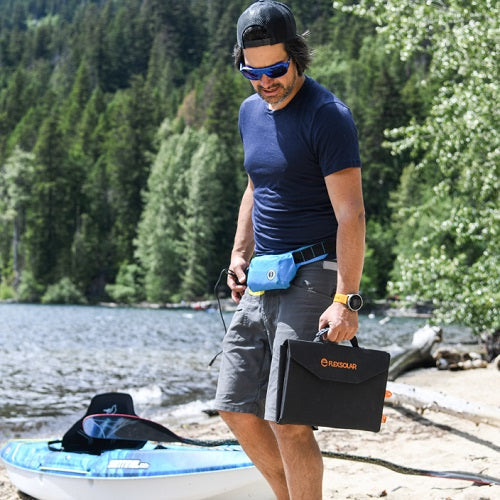
- Portable design and lightweight 10.8 Ibs (4.9 kg) makes the 120W solar panel easy to carry and transport. -IP65 waterproof, PET fabric protection, and rugged solar cell make the solar panel work under unexpected weather and last longer than other solar panels.
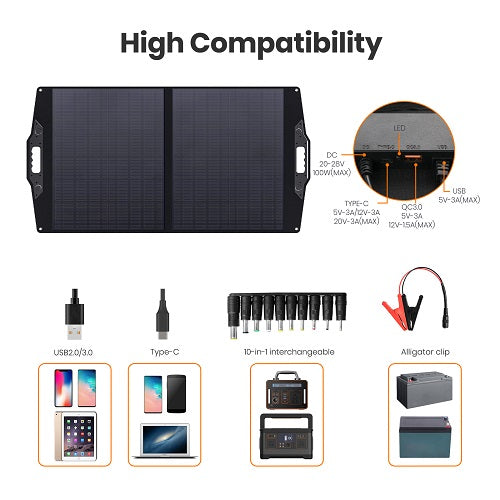
High-Efficient and Versatile.
- Premium monocrystalline solar cells with an energy conversion efficiency of up to 24%. -Charge DC powered device, USB Type-C input batteries, as well as smartphones, tablets, most laptops and portable power stations. - Includes a 20A (12V/24 V) PWM solar charge controller with LCD display. Compatible with 12V devices, protect your devices from over-charging, over-voltage and short circuits. -Compatible with most portable power stations, like Jackery Explorer 160/240/300/500/1000 and other batteries charging. -Chainable design enables you to chain solar panels together with an optional cable to use two 120W panels in parallel.
- Premium monocrystalline solar cells with an energy conversion efficiency of up to 24%. -Charge DC powered device, USB Type-C input batteries, as well as smartphones, tablets, most laptops and portable power stations. -Compatible with most portable power stations, like Jackery Explorer 160/240/300/500/1000 and other batteries charging. -Chainable design enables you to chain solar panels together with an optional cable to use two 120W panels in parallel.
With a 20A PWM Solar Controller.
- Includes a 20A (12V/24 V) PWM solar charge controller with LCD display. Compatible with 12V devices, protect your devices from over-charging, over-voltage and short circuits. - The solar charge controller is preset with connection cable, easy to set up.

What can the 120W solar panel charge.
- All smartphones, including all iPhones, Samsung Galaxy series. - All tablets, iPad series. - All portable USB charging electronic devices, like wireless speakers, headset, etc. - Most Type-C charging laptops, includes MacBook Pro. - Most portable power stations, like Jackery Explorer series. -Most kinds of batteries, like Lithium, Gel, Flooded via the 20A 12/24V PWM solar controller.
- All smartphones, including all iPhones, Samsung Galaxy series. - All tablets, iPad series. - All portable USB charging electronic devices, like wireless speakers, headset, etc. - Most Type-C charging laptops, includes MacBook Pro. - Most portable power stations, like Jackery Explorer series. -Most kinds of batteries, like Lithium, Gel, LiFePO4, Flooded via the 20A 12/24V PWM solar controller.

Q: Is a battery included with the solar panel? A: No. Please purchase any compatible FLEXSOLAR storage battery. Q: Why does your 120W panel only provide 105W of output? Shouldn't it be marketed as a 105W Panel? A: C120 panel specifications are obtained in a lab setting (a near perfect environment for solar panel energy generation). There are certain factors that may diminish the panel’s performance. Examples include humidity, air pollution, cloud coverage and obstruction from the sun. Q: What can I charge with the 120W panel? A: The 120W panel charges everyday items rated 12V or below. Connect and charge a smartphone, tablet, laptops, cooler, car battery, etc. You may need to purchase an additional adapter if the ones included do not work with your device. Q: Can the 120W panel be used in all-weather/environment conditions? A: No. Please cover the solar panel during rain and avoid exposure to prolonged moisture.
Why does your 60W panel only provide 45W of output? Shouldn’t it be marketed as a 45W panel?
C60 panel specifications are obtained in a lab setting (a near perfect environment for solar panel energy generation). There are certain factors that may diminish the panel’s performance. Examples include humidity, air pollution, cloud coverage and obstruction from the sun.
Is a battery included with the solar panel?
No. Please purchase any compatible FLEXSOLAR storage battery. A recommended compatible battery is XXX.
Is it possible to combine a 60W solar panel with a panel of a different wattage to charge a device?
We recommend that both panels used are of the same wattage for optimal function.
Can the 60W panel be used in all-weather/environment conditions?
No. Please cover the solar panel during rain and avoid exposure to prolonged moisture.
What can I charge with the 60W solar panel?
The 60W panel charges everyday items rated 12V or below. Connect and charge a smartphone, tablet, laptops, cooler, car battery, etc. You may need to purchase an additional adapter if the ones included do not work with your device.
Warranty Info
User Manual (PDF)
Product Brochure (PDF)
RELATED PRODUCTS
You may also like these solar panels.

100-W-Ladesystem für Wohnmobile mit PWM-Solarregler
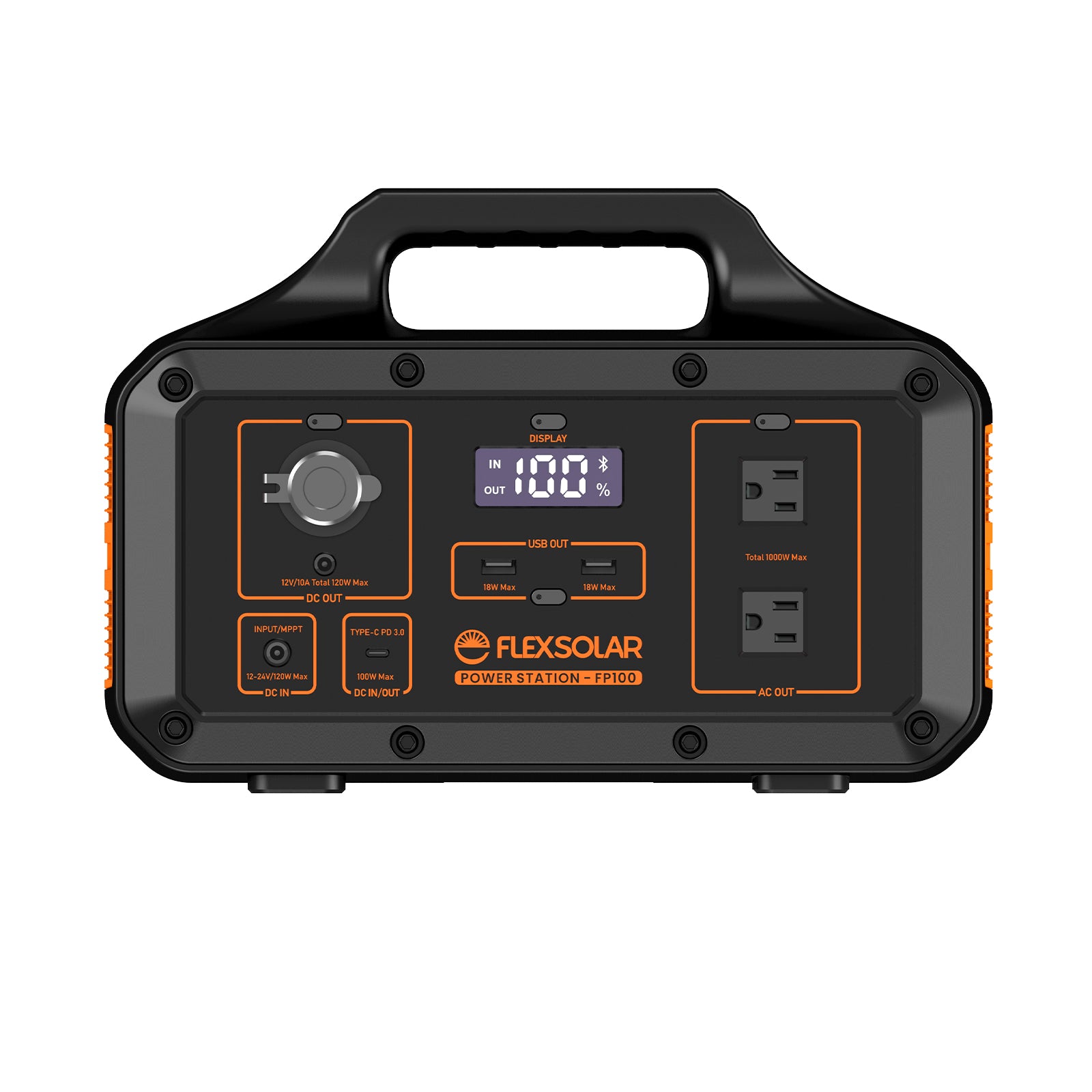
1021 Wh 1000 W tragbares Kraftwerk

105W Cover-Lock Photovoltaic Tile
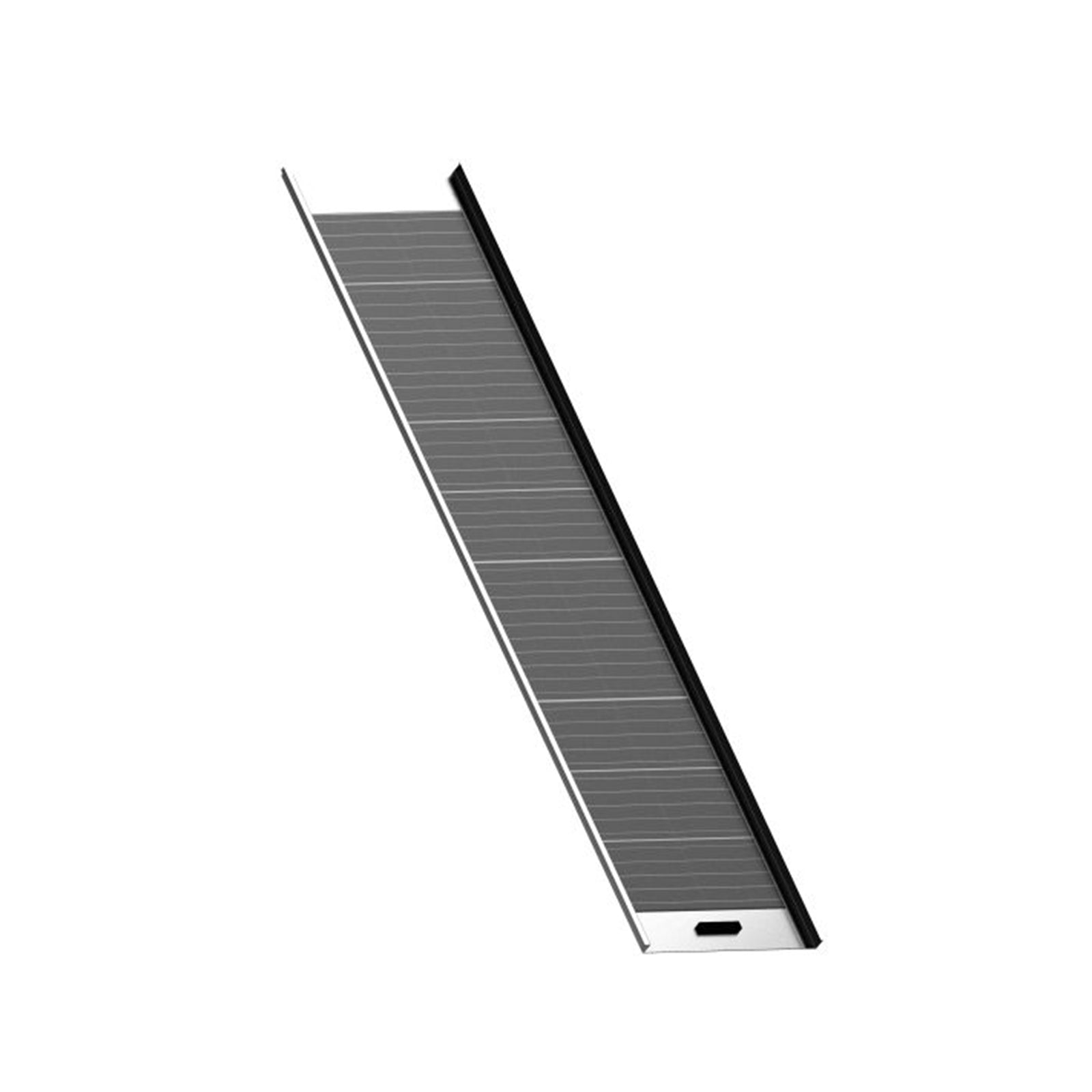
105W Low Profile Edge Photovoltaic Tile
60w foldable solar panel, 100w foldable solar panel, 100w briefcase solar panel.
200W Briefcase Solar Panel

- Startpagina
- Camping zonne-energie
Berger zonnepaneel smart-travel 120 W
Beschikbaarheid bij jou in de buurt
Informatie & downloads, onze service.

Hotline bestellen
Ma. - za.: 8:00 - 20:00 uur
Gespecialiseerd advies
Ma. - Vr.: 9:00 a.m. - 16:00 p.m
Veilige betaling met SSL-codering
Gratis retourzendingen
Tot 5% bonus met de Berger voordeelkaart
Productdetails
Productbeschrijving, eigenschappen, beoordelingen (52).
"Ik ben dus tevreden, snelle levering topgoederen. MfG Kelemen." "Also, ich bin zufrieden, schnelle Lieferung top Ware. MfG Kelemen. "
"eenvoudige bediening gunstig geprijsd overal te gebruiken" "einfache Handhabung preißgünstig überall einsetzbar"
"Zeer snelle levering! Het 120 watt zonnepaneel maakt een stabiele indruk! Helaas heb ik hem nog niet kunnen gebruiken en uitproberen!" "Sehr schnelle Lieferung! Das 120 Watt Solarmodul macht einen stabilen Eindruck! Konnte es leider noch nicht einsetzen und ausprobieren!"
"Ik kan er nog niets over zeggen omdat ik het nog niet geprobeerd heb. Ik zal het met Pasen uitproberen." "Ich kann noch Nix sagen, weil ich es noch nicht ausprobiert habe. Ich werde sie an Ostern ausprobieren."
"snelle levering en eenvoudige bediening, maar kon het slechts kort uitproberen" "schnelle lieferung und einfache handhabung, konnte es allerdings nur kurz auspropieren"
Om de echtheid te verifiëren
Vergelijkbare artikelen.

Meer van dit merk

Berger Nieuwsbrief
Schrijf u in en ontvang een € 10,- kortingscode
Zonnepaneel mobiel / Berger Smart.Travel 120 W (zonnetas)
449,00 €
Uit voorraad leverbaar
Onze toegevoegde waarde
- vinkje tevredenheidsgarantie
- vinkje Probleemloze terugbetalingen
- vinkje Veilige betalingen
- vinkje Topservice ter plaatse
- vinkje Bestel en betaal eenvoudig met uw nieuwe voertuig
- Beschrijving
aanvullende informatie
Berger Smart Travel Solar Deze lichtgewicht en compacte opvouwbare module heeft bovendien een opmerkelijk uitgangsvermogen van 120 watt (Wp). De cellen zijn gemaakt van stevig canvasdoek (100% polyester met polychloride coating) strak genaaid. De zonneregelaar wordt op de 5 m lange aansluitkabel aangesloten. Batterijtype instelbaar (gel, AGM, vloeibaar zuur). De mobiele zonnecontroller beschikt over een aansluitkabel met aangehechte krokodillenklemmen, zodat deze rechtstreeks op het boordnetwerk kan worden aangesloten.
Afmetingen geopend (BxHxD): 1510 x 560 x 10 mm Afmetingen opgevouwen (BxHxD): 430 x 560 x 35 mm
CO2-vrije elektriciteitsopwekking.
Levering: Opvouwbare module met monokristallijne celtechnologie, 5 meter aansluitkabel met krokodillenklemmen en geïntegreerde ogen, evenals een zonnecontroller (PWM) en standaard.
Eigenschaften
Klanten die dit bestelden, bestelden ook..
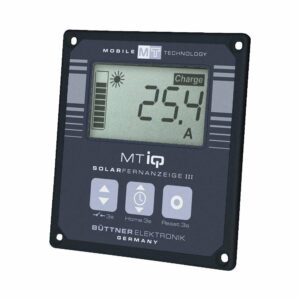
Solar afstandsdisplay MT-Solar afstandsdisplay III zwart
119,00 €
Büttner sinusomvormer PowerLine 1500 W (geen losse verkoop alleen iV met montage)
699,00 €

Büttner opbouwbehuizing zwart voor solar afstandsdisplay
31,90 €
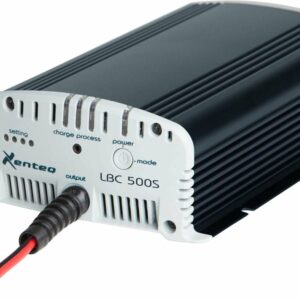
Xenteq oplader 10A voor LiFePo4
139,00 €

(05423) 94 33-0
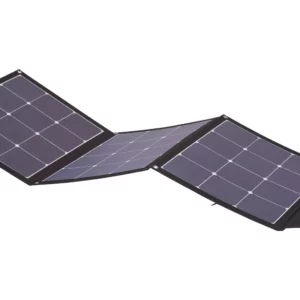
Discover the innovative features and cutting-edge technologies that make Moscow a Smart City leader. From efficient transportation systems to advanced energy management, Smart City Moscow is transforming urban living for its citizens. Explore the benefits and possibilities of a smarter city with Moscow smart city strategy.
Smart City Moscow, Russia
2.127 smart points.

Environment
Connectivity, life quality.
Moscow, on the Moskva River in western Russia, is the nation’s cosmopolitan capital. In its historic core is the Kremlin, a complex that’s home to the president and tsarist treasures in the Armoury. Outside its walls is Red Square, Russia’s symbolic center. It’s home to Lenin’s Mausoleum, the State Historical Museum’s comprehensive collection, and St. Basil’s Cathedral, known for its colorful, onion-shaped domes.
Once Moscow started to revive its legend and cultural gem, the number of visitors to VDNKh has been rapidly increasing to reach around 25 million people annually. In 2018, it saw the record-breaking 30 million guests! During its 80-year history, the exhibition was called in different ways: VSKhV, VDNKh, and VVTs. Its original purpose was to demonstrate the achievements of the national economy to Muscovites and numerous Moscow guests. However, today it has become a Grand Centre of leisure, education, and culture.
Examples of Smart City Development in Moscow:
- Implementation of a unified Intelligent Transportation System (ITS) that integrates various modes of transportation, including public transport, private vehicles, and bicycles, to provide a seamless and efficient travel experience for citizens.
- Deployment of a network of smart sensors and devices that collect and analyze data on traffic flow, air quality, noise pollution, and other environmental factors to help city officials make informed decisions and improve the quality of life for residents.
- Creation of digital platforms and services, such as e-government portals, online payment systems, and mobile apps, that enable citizens to access information and services quickly and easily, anytime and anywhere.
Companies and their Results Moscow smart city strategy:
- Yandex, the leading Russian search engine and technology company, has developed a number of smart transportation solutions in Moscow, including a ride-sharing service called Yandex.Taxi, a car-sharing service called Yandex.Drive, and a public transport planning tool called Yandex.Transport.
- Huawei, the Chinese tech giant, has partnered with Moscow authorities to deploy 5G networks and other advanced technologies to support the city’s smart city initiatives. The company has also established a research and development center in Moscow to focus on AI and other emerging technologies.

Statistics in Numbers:
- According to the Moscow Department of Information Technology, the city has installed more than 200,000 smart devices and sensors to monitor traffic, air quality, and other environmental factors.
- The Moscow Metro, which carries more than 7 million passengers per day, has implemented a smart ticketing system that allows commuters to pay for rides with their smartphones.
- Moscow’s e-government portal, which provides access to more than 500 online services, has registered more than 18 million users since its launch in 2011.
Interesting Facts:
- Moscow was ranked as the 9th smartest city in the world in 2020, according to the IESE Cities in Motion Index.
- The city has launched a number of smart city pilot projects, including a program to use blockchain technology to store and share data on real estate transactions and a project to deploy autonomous vehicles in certain parts of the city.
- Moscow authorities have set a goal of reducing the city’s carbon footprint by 30% by 2030 through a range of initiatives, including the promotion of electric vehicles and the implementation of energy-efficient buildings and infrastructure.
Plans for Moscow smart city 2030 strategy roadmap:
- The Moscow smart city strategy Roadmap, which was adopted in 2016, outlines a number of key priorities and initiatives for the city’s smart city development through 2030. These include:
- Expanding the use of digital technologies and services to improve the quality of life for residents, such as smart healthcare and education.
- Enhancing the city’s transportation infrastructure and mobility services to reduce congestion and improve accessibility.
- Promoting sustainable development and energy efficiency through the use of renewable energy sources and green building practices.
- Fostering innovation and entrepreneurship through the development of a strong ecosystem of startups, research institutions, and venture capital firms.

The Moscow Smart City strategy represents a comprehensive and ambitious plan to transform the city into a more livable, sustainable, and innovative urban environment. Through the use of advanced technologies and data-driven solutions, the strategy seeks to improve the quality of life for citizens and create a more prosperous and resilient city for future generations.
Moscow smart city strategy Technograd
Technograd is the chief front office of Moscow’s professional training system. The complex was opened in the Knowledge Park at VDNKh on 3 September 2018, with Moscow Mayor Sergey Sobyanin invited.
Training program
Technograd offers the world’s and the country’s best training programs in more than 40 most in-demand professions and professions of the future. The programs have been based on actual employers’ requirements. The complex gives an opportunity to train, retrain, and upgrade skills in any of the chosen careers. Its platforms provide excellent conditions for training specialists for small and medium-sized businesses. The training programs have been developed taking into account the specifics of each line of business and include case studies of leading entrepreneurs and experts.
Assembly point of the future
In the country’s sole supermarket of professions, everyone of any age can acquire an in-demand profession or choose his or her future job, taking training based on cutting-edge teaching methods. The innovative education complex of a new type is VDNKh’s attraction point.
Muscovites use the advantages of a smart city every day: they connect to the internet on a train or in the streets, arrange doctor’s visits via the Unified Medical Information Analysis System (UMIAS), pay utility bills online, and attend an online school. Mos.ru presents this article on how Moscow has managed to become one of the world’s smartest cities.
A Smart City is a system of city service resources that are used as efficiently as possible to provide maximum convenience for its residents. It requires a close connection between smart city projects (street CCTV cameras, public services, smart transport systems, and others) in a megalopolis.
City Wi-Fi and mobile internet
There are many points with free Wi-Fi access in Moscow streets, parks, and pedestrian areas, including over 2,000 located inside the Garden Ring and in Moscow parks.
The Internet can also be accessed from public transport. The network covers the metro, the MCC, the Aeroexpress trains to the airports as well as buses, trams, and trolleys. This means there is no need to authorize again after changing from one form of transport to another.
Mobile internet still costs Muscovites eight times less than in New York. Moscow is second in fixed telephone accessibility.
Smart transport
Moscow’s intelligent traffic control system is an important element in a Smart City. In Moscow, this system includes more than 2,000 traffic lights, 3,500 traffic detectors, and 2,000 CCTV cameras. Data from these devices are transferred to the Traffic Management Center’s situation room, where they are analyzed online, which helps control traffic. In the future, this information will make it possible for the Traffic Management Center to forecast traffic patterns due to street closures, the introduction of one-way traffic, or a newly designated bus lane.
Moscow was the first Russian region to launch a website where the public can pay various fees, and attain city services, and that moved permits and documents to the cloud allowing users to receive several services in one package.
Muscovites can check on and pay traffic tickets and utility bills, arrange a doctor’s visit, top-up a Troika card, sign up children for a club or do many other things in only minutes. There are 222 services in total on mos.ru now.
Visit a doctor online
The Unified Medical Information Analysis System (UMIAS) was launched in Moscow in 2011. It can be used to find the closest medical center, arrange a doctor’s visit, or get sick leave papers. UMIAS has reduced lines in clinics 2.5 times since it was launched.
UMIAS works at 678 medical centers, unites 21,500 doctors, and 9.5 million patients as well as 359 million arrangements, and provides for over 500,000 transactions every day. About 700,000 people use UMIAS to arrange to see a doctor every week.

City and Active Citizen
Muscovites can directly interact with the Moscow government and influence the city’s life. Our City is a feedback channel where residents can comment on officials and utility services issues.
Muscovites can report on the lack of a rubbish basket in a park, a broken staircase or pavement tile as well as rubbish on the street, poor landscaping care, or a pothole. Over a million users are registered on the website. Almost 1.8 million problems have been resolved with this website so far.
The Active Citizen online referendum system allows citizens to give an opinion on various issues, starting from additional bus routes and lawn mowing to the name of the new metro ring. “Active Citizens” save up bonus points to get brand souvenirs or tickets to theatres or museums. Today over 1.9 million participants are registered in the system, with 2,600 voting sessions held and over 81 million opinions taken into account.
Electronic school
The Moscow Electronic School project started in September 2016. The main elements include digital school records and online registering as well as an electronic library with textbooks and lesson scenarios. The scenarios have replaced lesson plans and look more like a presentation with materials and tasks. Teachers all around the city can find the necessary scenario at the library, add something new to the existing one, or create a new one and share it with others.
This system allows teachers to exchange opinions and creates healthy competition between teachers because scenarios can be rated and the number of downloads is recorded. As of today, teachers have created almost 50,000 lesson electronic scenarios. Interactive blackboards – 84-inch touch screens – can be used to make lessons more interesting. School students can draw on it, move elements from one place to another, paint various areas, and so on with a stylus or their fingers. Today’s children are used to electronic devices, so they like working that way. For example, in history lessons, students use the blackboard to enjoy drawing trade routes or circle areas where certain tribes lived. Some subjects, such as geometry, actually look better with 3D images. Thanks to internet access, teachers can quickly pull up information such as laws, articles, videos, and many other things on the interactive blackboard.
Moscow schools also use online school performance and attendance records as well as the “Attendance and Food” system, in which parents can see children’s marks and their education in general: what topics were covered and what homework is due. The system allows parents to monitor their child’s arrival and departure from school and what they had for lunch.
Video analytics
Moscow is one of the world’s top ten cities in the number of CCTV cameras. There are over 146,000 cameras installed in entrance halls, courtyards, public places, and educational institutions. Recordings are used to solve 70 percent of violations and crimes. The cameras also help monitor utility services.
Recordings are kept at the united data storage and process center. In case of an emergency, it is possible to book the archived information from the necessary camera for 30 days by calling 8 (495) 587-0002. The application number received from the operator must be given to law enforcement or legal counsel. If not booked, the archived information is kept for five days.
World recognition
It is fair to call Moscow a smart city, and this title is recognized by the global community. Last July, PricewaterhouseCoopers included Moscow in the top five megalopolises that are ready for innovation. Last June, the Russian capital won the WeGO award. Moscow received special mention in the category of e-government services, and last February, Intelligent Community Forum ranked Moscow among the top seven finalists in the most intelligent city contest.
Industrial design
A special style has been developed for the design of structures used in the new signage system. Materials were selected to minimize vandalism and that do not require painting to maintain their appearance. The exterior design was inspired by Moscow architecture.
How was the Moscow smart city strategy development?
The development of a single transport navigation signage system began in 2013 and was ready within a year. The pilot project was launched in the metro: information signs with pedestrian maps and exit numbers appeared at five stations. At the same time, maps for system accessibility appeared at the bike-share stations.
The first bus stop with the new signage was completed in Moscow in 2015. Signage with city maps for pedestrians also began appearing at that time.
The new navigation system began to be used on a wide scale in 2016. Information for the passengers is placed in the metro and at the stops as well as on pedestrian streets.
Over the past 7 years, the number of tourists has increased by 65 percent, from 12.8 million to 21 million people. City revenues from tourism, festivals, and cultural events have soared by 70 percent. A new navigation system has been introduced for the convenience of city residents and tourists: signs and markers are currently available in eight administrative areas as well as at every bus stop
Social care and assistance
Social-sector funding has almost doubled in 2011. In 2018, 430 billion roubles were allocated for social care and assistance projects. Apart from cash payments, the city implements other projects that make life easier. For example, 85 percent of buses, trolleybuses, and trams are adapted for people with disabilities, and to add to this the Exciting Activities for Senior Citizens project has been launched.
Since 2013, the city has planted over 90,000 trees and 1.9 million shrubs under the One Million Trees project. The air is becoming cleaner: Nitrogen oxide and carbon oxide emissions are down 20 and 30 percent, respectively, and those of tiny particles have decreased by an average of ten percent. And tap water no longer reeks of chlorine.
Parks and green zones
550 parks, since 2011, the city has improved 550 parks and green territories, including the creation of 259 new parks. In 2017, 113 green zones were improved. There are plans to still improve 84 parks before the year is out. Trees and shrubs cover 49 percent of the city’s area.
Construction
The city no longer implements high-density (infill) construction projects, and the construction of properties with an area of 21.2 million square meters has been canceled. New hospitals, schools and kindergartens, transport interchanges, and metro stations appear each year.
Science and innovations. Moscow smart city strategy
The city has established 33 technology parks accommodating thousands of small and medium-sized innovative companies. 39 industrial complexes prioritizing innovation development have been registered. 12 technology parks for children are being developed at local universities, offering classes for school children.
The number of weekend markets has increased ten-fold. Since early 2018, there are 102 marketplaces. Over 4,000 illegal trading facilities have been dismantled during the past five years, a standard system for siting kiosks has been drafted, and a 96.6-percent outlet-accessibility coefficient is now posted.
Since 2011, the city has improved 550 parks and green territories, including the creation of 259 new parks. In 2017, 113 green zones were improved. There are plans to still improve 84 parks before the year is out. Trees and shrubs cover 49 percent of the city’s area.
Since 2011, the city has opened over 90 new sports facilities, and the number of city residents preferring a healthy lifestyle has doubled. During the summer of 2018, Moscow hosted the 2018 FIFA World Cup. Luzhniki Stadium was renovated in the run-up to the event, and home stadiums for Spartak and CSKA were also built.
In the past few years, Moscow built 42 new cultural facilities and restored over 1,000 architectural landmarks, including the Arch of Triumph on Kutuzovsky Prospekt, the Pashkov House, the Gnessin School of Music, the Izvestia building, Helikon Opera, and many others as well.
Moscow city governed Moscow city is governed by a system of local government that consists of a Mayor, a City Duma (legislative body), and various executive bodies. The current Mayor of Moscow is Sergey Sobyanin, who has been in office since 2010. The City Duma is made up of 45 deputies who are elected for a term of five years. The executive bodies of Moscow city government are responsible for implementing policies and programs as directed by the Mayor and the City Duma. These bodies include the Moscow City Government, which is headed by the Mayor, and various departments responsible for areas such as transportation, education, and healthcare.
Building and courtyard Moscow smart city strategy
By 2015, the city renovated 105,900 residential building entrances and sections and replaced 29,500 lifts in apartment houses. In all, 21,875 courtyards were improved in 2011-2016. Parking space volumes tripled, and 17,353 new playgrounds and 4,487 sports facilities were installed
City projects
Moscow pioneered the development of key city-life aspects . Other Russian cities utilize the capital’s experience in implementing city-level projects to create a people-friendly urban environment, to modernize the transport sector, and implement IT projects at local schools
Route connectivity
The system is intended for the metro, surface transport, pedestrian spaces, the city’s bike-share network, and transit hubs, and it facilitates orientation along the way on the ground and underground. Each component is designed for a specific place, where it helps plan a route.
City maps for pedestrians have appeared in Moscow for the first time. All of them are designed with due account of the person’s location. It is marked “You are here.” The maps are oriented so that everything on the right is also to the right of the person looking at the map. Those accustomed to cardinal directions for orientation will see an arrow pointing to the north. The maps have circles indicating a five-minute walk from their location.
Metro Exits
Metro exits are now numbered clockwise. This helps people find the right direction. Major interchange hubs comprising several stations (Okhotny Ryad — Teatralnaya — Ploshchad Revolyutsii) have consecutive numbering. In addition, exits adapted for passengers with impaired mobility are marked with ramp and lift icons.
City landmarks that help orient visitors are marked with images and icons. This helps people identify them quicker and find the desired direction. Landmarks are indicated in the navigation system and serve as additional reference points.
LATEST POSTS #post-grid-4062 .element_0{display: block ;font-family: Quicksand; font-weight: 300; font-size: 36px;color: white; text-decoration: none; line-height: normal;padding: 0px 0px 5px 10px; text-align: left;} #post-grid-4062 .element_0:hover{}#post-grid-4062 .item{ background:#fff; } /*Write your CSS code here*/ #post-grid-4062 .pagination .page-numbers, #post-grid-4062 .pagination .pager{ font-size:17px; color:#fff; background:#646464; }#post-grid-4062 .pagination .page-numbers:hover, #post-grid-4062 .pagination .page-numbers.current, #post-grid-4062 .pagination .pager.active{ background:#4b4b4b; }#post-grid-4062 .nav-filter .filter{ font-size:17px; color:#fff; background:#646464; }#post-grid-4062 .nav-filter .filter:hover, #post-grid-4062 .nav-filter .filter.active{ background:#4b4b4b; }#post-grid-4062 .owl-dots .owl-dot { background: #e6e6e6 none repeat scroll 0 0; }#post-grid-4062 { padding:0px; background: url() repeat scroll 0 0; }#post-grid-4062 .item .layer-media{height:auto;overflow: hidden; }#post-grid-4062 .item{ margin:6px;}@media only screen and (min-width: 1024px ) {#post-grid-4062 .item{height:auto;}}@media only screen and ( min-width: 768px ) and ( max-width: 1023px ) {#post-grid-4062 .item{max-height:auto;}}@media only screen and ( min-width: 0px ) and ( max-width: 767px ){#post-grid-4062 .item{height:auto;}} @media only screen and (min-width: 1024px ) { #post-grid-4062 .item{width:618px} } @media only screen and ( min-width: 768px ) and ( max-width: 1023px ) { #post-grid-4062 .item{width:600px} } @media only screen and ( min-width: 320px ) and ( max-width: 767px ) { #post-grid-4062 .item{width:100%} } post_grid_masonry_enable = "no"; jQuery(document).ready(function($){ }); Defining Personal Values: What kind of man am I? The Paradox of Connectivity: More People, Less Humanity jQuery(document).ready(function($) { $("#post-grid-4062 .layer-media .gallery").owlCarousel({ items : 1, navText : ["",""], autoplay: true, loop: true, autoHeight : true, nav : false, dots : false, }) }); /*Write your js code here*/
Government #post-grid-117117 .element_0{display: block ;font-family: quicksand; font-weight: 400; font-size: 20px;color: white; text-decoration: none; line-height: normal;padding: 0px 0px 5px 10px; text-align: left;} #post-grid-117117 .element_0:hover{}#post-grid-117117 .item{ background:#fff; } /*write your css code here*/ #post-grid-117117 .pagination .page-numbers, #post-grid-117117 .pagination .pager{ font-size:17px; color:#fff; background:#646464; }#post-grid-117117 .pagination .page-numbers:hover, #post-grid-117117 .pagination .page-numbers.current, #post-grid-117117 .pagination .pager.active{ background:#4b4b4b; }#post-grid-117117 .nav-filter .filter{ font-size:17px; color:#fff; background:#646464; }#post-grid-117117 .nav-filter .filter:hover, #post-grid-117117 .nav-filter .filter.active{ background:#4b4b4b; }#post-grid-117117 .owl-dots .owl-dot { background: #e6e6e6 none repeat scroll 0 0; }#post-grid-117117 { padding:0px; background: url() repeat scroll 0 0; }#post-grid-117117 .item .layer-media{height:auto;overflow: hidden; }#post-grid-117117 .item{ margin:6px;}@media only screen and (min-width: 1024px ) {#post-grid-117117 .item{height:auto;}}@media only screen and ( min-width: 768px ) and ( max-width: 1023px ) {#post-grid-117117 .item{max-height:auto;}}@media only screen and ( min-width: 0px ) and ( max-width: 767px ){#post-grid-117117 .item{height:auto;}} @media only screen and (min-width: 1024px ) { #post-grid-117117 .item{width:302px} } @media only screen and ( min-width: 768px ) and ( max-width: 1023px ) { #post-grid-117117 .item{width:600px} } @media only screen and ( min-width: 320px ) and ( max-width: 767px ) { #post-grid-117117 .item{width:100%} } post_grid_masonry_enable = "no"; jquery(document).ready(function($){ }); revolutionizing municipal services: exploring the future of cities why won’t government abolish water and utility bills 21st century production: an in-depth look at the updated production factors global government types and their examples from history jquery(document).ready(function($) { $("#post-grid-117117 .layer-media .gallery").owlcarousel({ items : 1, navtext : ["",""], autoplay: true, loop: true, autoheight : true, nav : false, dots : false, }) }); /*write your js code here*/, people #post-grid-117122 .element_0{display: block ;font-family: quicksand; font-weight: 600; font-size: 20px;color: black; text-decoration: none; line-height: normal;padding: 0px 0px 5px 10px; text-align: left;} #post-grid-117122 .element_1{display: block;font-family: pt sans; font-size: 16px;color: black; line-height: normal;padding: 0px 0px 5px 10px; text-align: left;} #post-grid-117122 .element_0:hover{}#post-grid-117122 .element_1:hover{}#post-grid-117122 .item{ background:#fff; } /*write your css code here*/ #post-grid-117122 .pagination .page-numbers, #post-grid-117122 .pagination .pager{ font-size:17px; color:#fff; background:#646464; }#post-grid-117122 .pagination .page-numbers:hover, #post-grid-117122 .pagination .page-numbers.current, #post-grid-117122 .pagination .pager.active{ background:#4b4b4b; }#post-grid-117122 .nav-filter .filter{ font-size:17px; color:#fff; background:#646464; }#post-grid-117122 .nav-filter .filter:hover, #post-grid-117122 .nav-filter .filter.active{ background:#4b4b4b; }#post-grid-117122 .owl-dots .owl-dot { background: #e6e6e6 none repeat scroll 0 0; }#post-grid-117122 { padding:0px; background: url() repeat scroll 0 0; }#post-grid-117122 .item .layer-media{height:auto;overflow: hidden; }#post-grid-117122 .item{ margin:1px;}@media only screen and (min-width: 1024px ) {#post-grid-117122 .item{height:auto;}}@media only screen and ( min-width: 768px ) and ( max-width: 1023px ) {#post-grid-117122 .item{max-height:auto;}}@media only screen and ( min-width: 0px ) and ( max-width: 767px ){#post-grid-117122 .item{height:auto;}} @media only screen and (min-width: 1024px ) { #post-grid-117122 .item{width:1280px} } @media only screen and ( min-width: 768px ) and ( max-width: 1023px ) { #post-grid-117122 .item{width:600px} } @media only screen and ( min-width: 320px ) and ( max-width: 767px ) { #post-grid-117122 .item{width:90%} } post_grid_masonry_enable = "no"; jquery(document).ready(function($){ }); to be rich you have to think fractally we will explain the fractal effect on the easiest topic to understand. on money and saving, or better say “how can we get rich” unity of soul and mind making good decisions the mind has a will but is incapable of controlling external intention. the soul is able to feel its identity with external intention but has no will. complexity of holistic vs. analytical thinking process two main types of thinking that differ in the nature of cognitive processes: analytical (reductionist) and holistic (intuitive). jquery(document).ready(function($) { $("#post-grid-117122 .layer-media .gallery").owlcarousel({ items : 1, navtext : ["",""], autoplay: true, loop: true, autoheight : true, nav : false, dots : false, }) }); /*write your js code here*/, cities #post-grid-106715 .element_0{display: block ;font-family: quicksand; font-weight: 300; font-size: 36px;color: white; text-decoration: none; line-height: normal;padding: 0px 0px 5px 10px; text-align: left;} #post-grid-106715 .element_0:hover{}#post-grid-106715 .item{ background:#fff; } /*write your css code here*/ #post-grid-106715 .pagination .page-numbers, #post-grid-106715 .pagination .pager{ font-size:17px; color:#fff; background:#646464; }#post-grid-106715 .pagination .page-numbers:hover, #post-grid-106715 .pagination .page-numbers.current, #post-grid-106715 .pagination .pager.active{ background:#4b4b4b; }#post-grid-106715 .nav-filter .filter{ font-size:17px; color:#fff; background:#646464; }#post-grid-106715 .nav-filter .filter:hover, #post-grid-106715 .nav-filter .filter.active{ background:#4b4b4b; }#post-grid-106715 .owl-dots .owl-dot { background: #e6e6e6 none repeat scroll 0 0; }#post-grid-106715 { padding:0px; background: url() repeat scroll 0 0; }#post-grid-106715 .item .layer-media{height:auto;overflow: hidden; }#post-grid-106715 .item{ margin:6px;}@media only screen and (min-width: 1024px ) {#post-grid-106715 .item{height:auto;}}@media only screen and ( min-width: 768px ) and ( max-width: 1023px ) {#post-grid-106715 .item{max-height:auto;}}@media only screen and ( min-width: 0px ) and ( max-width: 767px ){#post-grid-106715 .item{height:auto;}} @media only screen and (min-width: 1024px ) { #post-grid-106715 .item{width:618px} } @media only screen and ( min-width: 768px ) and ( max-width: 1023px ) { #post-grid-106715 .item{width:600px} } @media only screen and ( min-width: 320px ) and ( max-width: 767px ) { #post-grid-106715 .item{width:99%} } post_grid_masonry_enable = "no"; jquery(document).ready(function($){ }); what is a biophilic city state of green jquery(document).ready(function($) { $("#post-grid-106715 .layer-media .gallery").owlcarousel({ items : 1, navtext : ["",""], autoplay: true, loop: true, autoheight : true, nav : false, dots : false, }) }); /*write your js code here*/, sustainability #post-grid-117118 .element_0{display: block ;font-family: quicksand; font-weight: 400; font-size: 20px;color: white; text-decoration: none; line-height: normal;padding: 0px 0px 5px 10px; text-align: left;} #post-grid-117118 .element_0:hover{}#post-grid-117118 .item{ background:#fff; } /*write your css code here*/ #post-grid-117118 .pagination .page-numbers, #post-grid-117118 .pagination .pager{ font-size:17px; color:#fff; background:#646464; }#post-grid-117118 .pagination .page-numbers:hover, #post-grid-117118 .pagination .page-numbers.current, #post-grid-117118 .pagination .pager.active{ background:#4b4b4b; }#post-grid-117118 .nav-filter .filter{ font-size:17px; color:#fff; background:#646464; }#post-grid-117118 .nav-filter .filter:hover, #post-grid-117118 .nav-filter .filter.active{ background:#4b4b4b; }#post-grid-117118 .owl-dots .owl-dot { background: #e6e6e6 none repeat scroll 0 0; }#post-grid-117118 { padding:0px; background: url() repeat scroll 0 0; }#post-grid-117118 .item .layer-media{height:auto;overflow: hidden; }#post-grid-117118 .item{ margin:6px;}@media only screen and (min-width: 1024px ) {#post-grid-117118 .item{height:auto;}}@media only screen and ( min-width: 768px ) and ( max-width: 1023px ) {#post-grid-117118 .item{max-height:auto;}}@media only screen and ( min-width: 0px ) and ( max-width: 767px ){#post-grid-117118 .item{height:auto;}} @media only screen and (min-width: 1024px ) { #post-grid-117118 .item{width:302px} } @media only screen and ( min-width: 768px ) and ( max-width: 1023px ) { #post-grid-117118 .item{width:600px} } @media only screen and ( min-width: 320px ) and ( max-width: 767px ) { #post-grid-117118 .item{width:100%} } post_grid_masonry_enable = "no"; jquery(document).ready(function($){ }); unmanned transportation building roads that will charge cars ai – a new era in transport and logistics transformation top innovative renewable energy companies and startups jquery(document).ready(function($) { $("#post-grid-117118 .layer-media .gallery").owlcarousel({ items : 1, navtext : ["",""], autoplay: true, loop: true, autoheight : true, nav : false, dots : false, }) }); /*write your js code here*/, technology #post-grid-117119 .element_0{display: block ;font-family: quicksand; font-weight: 300; font-size: 36px;color: white; text-decoration: none; line-height: normal;padding: 0px 0px 5px 10px; text-align: left;} #post-grid-117119 .element_0:hover{}#post-grid-117119 .item{ background:#fff; } /*write your css code here*/ #post-grid-117119 .pagination .page-numbers, #post-grid-117119 .pagination .pager{ font-size:17px; color:#fff; background:#646464; }#post-grid-117119 .pagination .page-numbers:hover, #post-grid-117119 .pagination .page-numbers.current, #post-grid-117119 .pagination .pager.active{ background:#4b4b4b; }#post-grid-117119 .nav-filter .filter{ font-size:17px; color:#fff; background:#646464; }#post-grid-117119 .nav-filter .filter:hover, #post-grid-117119 .nav-filter .filter.active{ background:#4b4b4b; }#post-grid-117119 .owl-dots .owl-dot { background: #e6e6e6 none repeat scroll 0 0; }#post-grid-117119 { padding:0px; background: url() repeat scroll 0 0; }#post-grid-117119 .item .layer-media{height:auto;overflow: hidden; }#post-grid-117119 .item{ margin:6px;}@media only screen and (min-width: 1024px ) {#post-grid-117119 .item{height:auto;}}@media only screen and ( min-width: 768px ) and ( max-width: 1023px ) {#post-grid-117119 .item{max-height:auto;}}@media only screen and ( min-width: 0px ) and ( max-width: 767px ){#post-grid-117119 .item{height:auto;}} @media only screen and (min-width: 1024px ) { #post-grid-117119 .item{width:618px} } @media only screen and ( min-width: 768px ) and ( max-width: 1023px ) { #post-grid-117119 .item{width:600px} } @media only screen and ( min-width: 320px ) and ( max-width: 767px ) { #post-grid-117119 .item{width:100%} } post_grid_masonry_enable = "no"; jquery(document).ready(function($){ }); living in the smartphone era top 10 technology trends of 2023 jquery(document).ready(function($) { $("#post-grid-117119 .layer-media .gallery").owlcarousel({ items : 1, navtext : ["",""], autoplay: true, loop: true, autoheight : true, nav : false, dots : false, }) }); /*write your js code here*/.
smart cities , space , science , technology , quantum , government , economics , SDG , municipal services , startups , influencers , brands , pioneers , innovator's dictionary , history , design
- – Premium Content
- – Membership
SMART CITIES
- – Global Cities
- – Cities Ranking
- – Smart Cities
- – Smart Solutions
- Lanast Co., ltd., Prague 3, Czech republic
- [email protected]
- Hispanoamérica
- Work at ArchDaily
- Terms of Use
- Privacy Policy
- Cookie Policy
- Architecture News
Moscow Launches New Smart City District as a Living Lab

- Written by Eric Baldwin
- Published on December 13, 2018
The government of Moscow has begun developing an existing district in the city to test nearly 30 new ‘smart’ technologies for urban development. Home to over 8,000 people, the district is testing ideas on smart lighting, smart waste management, and smart heating. The city intends to evaluate what impact technologies bring to residents and adjust its urban renewal plan once the pilot is complete.
When creating a smart district, cities tend to choose new, empty or even abandoned areas to build a district from a scratch, which is faster, easier and more cost-efficient. However, Moscow authorities made the decision to create one in an already existing neighborhood to bring top tech solutions. In April 2018, authorities began implementing technologies in selected buildings situated in Maryino district on the southeast of Moscow . The district includes seven apartment buildings with different years of construction from 1996 to 1998. Each residential building has a different construction type that gives an advantage to pilot the technologies under various conditions.

Andrey Belozerov, Strategy and Innovations Adviser to CIO of Moscow explained: “We didn’t want to build a district from a scratch as a test bed far from real-world settings. Our aim was to test technologies in inhabited neighborhood so it allows us to see whether citizens get advantage of new technologies in their everyday tasks. When the pilot is completed we aim to adjust the city urban renewal plan, so Muscovites enjoy living in similar technology-savvy buildings around the city in the future”.
The smart district residents can access smart systems responsible for heating, lighting, and waste collection. In total selected residential buildings are equipped with twenty nine different smart technologies. As part of the project the first charging station for electric vehicles situated in residential district has been installed in Moscow – it has already become the most popular charging station for electric vehicles in the city. In addition, free Wi-Fi network is available on site. Each resident can install free mobile application to answer the house intercom when no one is around or open the door without a key. The project aims to improve quality of life and provide comfort and safety for residents.

- Sustainability
想阅读文章的中文版本吗?

莫斯科启动“智能小区”计划,将为8000人口提供智能家居生活
You've started following your first account, did you know.
You'll now receive updates based on what you follow! Personalize your stream and start following your favorite authors, offices and users.
- Smart projects
- Insights & analytics
This section contains the most relevant information about innovative projects in Moscow, analytics, data insights for global ratings and other useful content about smart city Moscow
Latest news
Technology Bank Got 125 Solutions since Beginning of 2022
Moscow DIT Listed Focus Areas for 2023
Moscow Citywide Wi-Fi Network Working for Nine Years
Smart Maintenance System to Be Introduced in Moscow Medical Institutions
Moscow Increases the Number of Open Datasets for AI Developers in Healthcare to 40
Smart projects ( 74 )
innovative projects in the region
- sectoral solutions
- digital ecosystem
- infrastructure
- technologies
Data about Moscow for Global Ratings
open datasets about objects of urban infrastructure of Moscow
Insights & Analytics
researches, monitorings, reports and other analytics
By clicking the button you agree to the Privacy Policy
#smartcitymoscow
the most important news on urban digital technologies
AI Platform for Radiology Study Analysis Developed in Moscow to Be Introduced in Regions
Moscow Doctors Conducted 600,000 Remote Consultations
Moscow Residents Give Excellent Mark for Quality of Electronic Services in 80% of Cases
Smart Bus Stops Have Been Developed in Moscow
Online Voting System Deflects 10,000 DDoS Attacks in Moscow
More Than 7 Million Radiology Images Processed Using Neural Networks in Moscow
Moscow Tests Digital Passports for General Hospitals
Moscow Gets Award at National Competition of Digital Transformation Projects
By clicking the button you agree to Privacy Policy
Tech Solutions
Market in brief
+ my product
Unless otherwise stated, the content is available under Creative Commons BY 4.0 license
Supported by the Moscow Government
Content and Editorial : [email protected]
Privacy policy
User agreement
Moscow wants to be a model smart city; this is how they plan to achieve it
The Russian capital is investing heavily in technology

The concept of smart cities is a well trodden one and has been at the core of the expansion of some of the world’s big megalopolises.
Moscow, however, rarely comes to mind when thinking about technology, primarily because Russia is often considered to have a significant tech presence - unlike China or the US.
Companies like Rostec and Kaspersky are changing this and so are initiatives like Moscow’s City-as-a-service. Qualcomm for example, chose the city to launch Europe’s first 5G mmWave network in partnership with Moscow’s Department for Information Technologies of Moscow. We caught up with its head, Eduard Lysenko, to find out more about what they have been doing.
- What is a smart city and how does one plan for it?
- How businesses can unlock smart city success
- 5G and smart cities : everything you need to know
Can you tell us a little about the city-as-a-service concept and how it has benefited the citizens of Moscow?
The digitalization of Moscow started in 2011 and since then the city has become one of the leaders in providing e-services for citizens, with more than 11m citizens using city services today.
Initially, we had to digitize the city management systems. A few years later we started to introduce e-services for citizens that became very popular. The main feature of e-services in Moscow is that they are being developed by DIT and therefore they have a similar interface, the same login system and all of the services are connected and can interact with each other. It makes it easier for citizens to use.
At the same time we provided opportunities for the development of mobile networks. Due to cheap internet access and huge coverage (99 percent of Moscow is covered by 4G) the penetration of smartphones exceeded 83 percent. So the citizens of Moscow were ready to use these services.
As for the services themselves, they seek to cover all the needs of citizens. They include the EMIAS medical portal, the Active Citizen portal that runs polls for citizens, the Moscow E-school and the portal of the mayor of Moscow, mos.ru . However, there are also services for tourists, complaints, crowdsourcing etc. I’d like to briefly introduce some of these services.
First of all, the EMIAS service for making online appointments in Moscow public clinics, thanks to which the average waiting time to see a doctor has been reduced to five minutes and 95 percent of prescriptions are now issued in electronic form. With the Moscow E-school, we are creating a high-tech environment to improve the quality of education in Moscow schools. There is also a well-known e-polling service called Active Citizen, which allows Muscovites to make decisions on urban development. Almost 2.3m citizens participate on the platform and about 4,000 decisions have already been implemented via this service. We have recently been developing Crowd.Mos where, in contrast to Active Citizen, people can independently suggest their own initiatives for the city.
As for the possibility of interaction, we are now working on a full integration of all services. For example, in the future, when the winter flu epidemic begins in the city, EMIAS will be able to notify all schoolchildren and their parents of the need for protection and vaccination. All our services will form a single network aimed at helping citizens in a variety of situations. And finally, the mos.ru portal, which is a platform that aggregates all e-services for citizens in one place, as well as providing the latest news about the life of the capital. Mos.ru allows citizens to understand which e-services exist and how they can be received, which saves them time.
One of our aims is to save time for people and this is something that Moscow’s services can do. In our case, speed means comfort. Already, the introduction of EMIAS is saving doctors up to two million hours per year. Making life more comfortable for citizens implies that the city provides services to residents at all levels. Before the digitalization started, people had to spend a lot of time to use city services and go to different institutions but now they are all available online. Last year, we reached 170bn visits to e-government services and $ 1.5bn in payments were processed.
But for us, things don’t end with the provision of basic services. We are striving to add specific new services in accordance with the requests of citizens. For example, in summer, free sports activities with coaches and equipment are now available in Moscow parks for registered users. We are now working on responding to all relevant and adequate needs of people because this approach allows us to boost awareness and the desire to improve in people themselves. In this way, the city itself, in a sense, is becoming a service for citizens - and our aim is to make sure that this is a high-quality service.

How successful have the city’s network of CCTV cameras and facial recognition system been in preventing crime?
Moscow has one of the world's largest network of CCTV cameras, second only to London (according to 2016 PWC estimates). These cameras are now helping to solve about 70 percent of all crimes committed in the city.
As for facial recognition, at the moment there are 1,500 cameras in Moscow connected to this system in a pilot project. Video analytics takes place in automatic mode and notifies the city services if necessary. In automatic mode, the camera responds to gestures, movements and elements of behavior, thereby revealing suspicious activity. This year, we plan to launch the system on 105,000 cameras - that is, all cameras capable of observing human faces will be covered. The majority of the cameras are installed in courtyards, entrances and subways, where the footfall is greatest. We expect to reduce the overall number of crimes by 20 to 40 percent by next year.
In addition to the city cameras, we are developing other technologies with facial recognition capabilities. For example, we tested augmented reality glasses with facial recognition for police. These glasses make it possible to recognize a criminal in the midst of a crowd and significantly reduce the time required to capture criminals.
Again, many speak critically about video surveillance with a facial recognition system, believing that the government wants to establish surveillance of people. But I can tell you about a successful case - during the 2018 World Cup in Moscow, cameras with facial recognition were used to identify 98 fans banned from visiting fan zones. This helped to provide us with a decent level of security during the championship and not expose people who came to watch the game to unnecessary risk.
The global aim here is to provide a self-regulating and high-quality system, reducing any possible risks for our citizens.

What security measures have been put in place to protect the government-run storage facility that houses the data collected by the cameras?
Providing cyber security for the data was top-priority since the very beginning of the digitalization. Fault-tolerant data processing centers belonging to the Government of Moscow are used as a basis for countering attacks. So far, a data protection system has been built for the data center, which has made it possible to ensure the protection of the information systems located in the data center.
In 2018, we took measures to identify unauthorized access to the Moscow data storage and processing centers. During this year, more than 27,572 cyberattacks have been blocked. We are constantly improving our security system, conducting inspections and audits of security systems.
The correct functioning of the newly built information protection system has been confirmed by the positive results of certification tests for compliance with information security requirements and the issue of a certificate of conformity of the information facility with information security requirements.
As for our surveillance system, access to these cameras is also limited and controlled. In 2018, we developed an automated information system called Access Control System for Information Systems and Resources of the City of Moscow, which is designed to ensure safe, reliable identification and authentication of users when accessing the information systems of Moscow. The video retention period is about five to seven days. Within five days, any citizen can apply for data from video cameras. According to the statistics, 80 percent of users contact us within three days and a further 15 percent in the remaining two days.

Moscow is known for having the best e-government services. Can you tell us about the Active Citizen app and how Muscovites are using it to participate in city government affairs?
We created the Active Citizen service in 2014 at the initiative of the Government of Moscow. This is a service of electronic polls for citizens, enabling them to make decisions on important citywide issues. Active Citizen is unique case – the service allows ordinary citizens to influence what is going on in the city. Any Moscow resident who has a Russian mobile operator SIM card can register and get involved in changing Moscow.
To attract citizens, we use elements of gamification — for participation in polls and other activities, users are encouraged with points, which can later be exchanged for various kinds of benefits. As of July 2019, about 2.3m users have registered using the application and more than 4,000 polls have been conducted. Among the decisions made by users, it is worth noting the creation of 25 local parks, 10 new bus routes and bicycle lanes. In addition, citizens can choose names for various urban innovations. For example, this is how the name was chosen for the Moscow Metro’s Third Circle.
Active Citizen is one of our most important services and despite the fact that now it is already successfully operating, we are still devoting energy and resources to promoting and popularizing it.
This year, the service turned five years old and we organized a big celebration in one of the main parks of Moscow. We run these events not so much to attract more users but to increase loyalty among current users.
In addition to Active Citizen, I would like to talk about the launch of the My District service. In simple words, this is like a small version of Active Citizen, where residents of a particular district can make decisions on how to improve their area. We believe that decisions at all levels are important, and My District allows residents to exercise more autonomy in matters of city infrastructure.
Of course, we have been repeatedly criticized for the fact that Active Citizen offers a limited choice and range of issues for consideration. So, this year, we have launched the Crowd.Mos service, which allows people to independently propose their own urban planning initiatives. I can say that we are proudly a world leader in the implementation of ideas proposed by citizens.
I would also mention an experiment with blockchain elections to the Moscow City Parliament this year in the context of e-government. Connecting blockchain technology will not only enable online voting but also ensure the transparency of the elections and the impossibility of changing results, which will be securely encrypted.

How is AI being used in Moscow to improve healthcare?
For a start, it is important to point out that public healthcare in Moscow, as in all of Russia, is free. As you know, Moscow is a gigantic metropolis, accordingly, a huge amount of resources, including humans, are needed to serve all citizens. Currently, the city has about 244 public hospitals and 444 clinics, which employ more than 44,000 doctors.
As part of DIT’s Smart City program, city polyclinics have been connected to the artificial intelligence system. Online services are helping to reduce queues in clinics and make it easy to communicate with doctors. For example, today the majority of city clinics have implemented a patient flow control mechanism - the mechanism covers more than 60 percent of all doctors and allows you to correctly distribute the number of patients for each doctor. Thanks to this system, citizens can see a doctor as soon as possible, and the queues in most metropolitan clinics have almost been eliminated.
Accordingly, it is very difficult to manage this entire system and artificial intelligence helps us in this. In addition to facilitating the process of managing and allocating resources, citizens can now receive their analyses and test results by e-mail, which means they don’t need to go back to the clinic. This makes life easier for everyone - both patients and doctors.
The online service for registering with a clinic without a personal visit has also become very convenient for Moscow citizens. At the end of last year, more than 51,000 people registered with clinics in this way.
A key innovation in the health system is the beginning of the implementation of the Digital Vision pilot project. With the help of big data and artificial intelligence, doctors now have the opportunity to diagnose cancer in its early stages, as well as to assess stroke risks. The use of this technology has already increased diagnostic accuracy in Moscow by 15 percent.
In addition to improving the process of receiving and organizing treatment of patients in clinics, we are interested in the development of telemedicine. Of course, online consultation will never replace a full-fledged doctor's appointment, especially in difficult cases. However, it may be useful for primary symptoms and in cases where a visit to the doctor may not be necessary.

How is the Department of IT using big data to deliver insights about city residents?
DIT processes 14.3 terabytes of data daily. Big data processing technologies allow us to structure and transform the initial data file more quickly and with minimum labor costs, reducing the amount of information that people work with and thus the time spent on solving these problems. Big data helps us better understand our citizens. Thanks to big data, we can make a portrait of a Moscow citizen, understand their preferences and address whatever problems they have. For example, what changes in the infrastructure of the city they need and what is missing. Also, big data can help in predicting natural disasters or epidemics. Today, by analyzing this data, we know what problems are emerging. It is now possible to draw up a plan for the repair of roads or to build social facilities on the basis of this information. In one district, for example, you need to build a school, and in another, residents need additional parking zones.
Moreover, big data provides an opportunity for personalization. For example, there is automatic SMS notification of residents of specific areas of unplanned situations - water shutdown, snowfall, road works, and so on. Big data has long been used in the Moscow call center. First of all, our robot with artificial intelligence is connected to the call center and is trained to answers citizens' questions. At the end of the year, we are planning a pilot launch of a new robot, which can analyze the history of previous calls to predict the nature of a new call. This will significantly reduce the total call time. I notice that many companies, including public ones, consider robots with artificial intelligence to be unprofitable and expensive to develop. However, with the help of our robot, we were able to completely reassign human operators from simple questions to more complex ones, thereby saving them time and energy and reducing labor costs.
We also have separate benefits for businessmen. This year, we are planning to launch a robot that will help automate purchases and inform Moscow entrepreneurs about upcoming tenders. We plan to add more features to it in the future.
- This is everything you need to know about smart cities and 5G
Are you a pro? Subscribe to our newsletter
Sign up to the TechRadar Pro newsletter to get all the top news, opinion, features and guidance your business needs to succeed!
Generative AI set to transform a whole host of industries — but is that always a good thing?
OVHcloud is open sourcing its data center watercooler tech
Netflix subscribers can’t get enough of 2019 spy thriller Anna – watch these 3 skilful assassin movies next
Most Popular
- 2 New Google Pixel 9 photos leak – and so does the price of the Pixel 8a
- 3 Looking for a cheap OLED display? LG's highly-rated C2 OLED TV is on sale for $839
- 4 Amazon Prime Video's disappearing act could point to a future without the service
- 5 Discord's updated Terms of Service are exactly the wrong response to its recent data breaches
- 2 Meta rolls out new Meta AI website, and it might just bury Microsoft and Google's AI dreams
- 3 Sony dropped OLED for its flagship 2024 TV – here's why
- 4 Today's Wordle answer is the hardest this year, with an average score of 5.4, and 'Wordle 1037 X' is trending on Twitter – here's why it's so tough and what to do in future
- 5 This new iPhone app is helping me take nostalgic photos like it's the 1980s

IMAGES
VIDEO
COMMENTS
Berger Smart Travel Solar. Dieses leichte und kompakte Faltmodul hat auch eine beachtliche Ausgangsleistung von 120 Watt (Wp). Die Zellen sind in stabilem Segeltuch-Gewebe (100 % Polyester mit Polychloridbeschichtung) fest vernäht. Am 5 m langen Verbindungskabel wird der Solarregler eingesteckt. Batterietyp einstellbar (Gel, AGM, Flüssig-Säure).
BERGER leistungsstark Smart-Travel Solarpanel 120 W │ komplett faltbar, leicht│ Strom erzeugen unterwegs Camping, Wohnmobil, Garten │ Wohnmobil Solaranlage Komplettset inkl. Kabel + Laderegler : Amazon.de: Gewerbe, Industrie & Wissenschaft
Berger Smart Travel Solar This light and compact folding module also has a remarkable output power of 120 Watt (Wp). The cells are made of stable canvas (100% polyester with polyvinyl chloride coating) sewn up tight. The solar controller is plugged into the 8 m long connection cable. Battery type adjustable (gel, AGM, liquid acid).
Outdoors, expect to only receive 50-75% on a good, sunny day (ie. 40 W - 60 W)--- For example, if a solar panel is rated for 80W, it could take as fast as 1.67 hours [100 W / (80 W x 0.75)] to charge, depending on environmental conditions and the panel's ageOverall, the Paxcess 120W solar panel is expected to charge decently well, but I am ...
Made for camping and off-grid adventures, the 120W foldable solar panel kit is ideal for long-time trips when you need to different kinds of batteries with optimized solar charging. Integrated QC 3.0 USB port, Type-C PD 60W port, and 120W DC port, as well as 10-in-1 interchangeable DC connectors, alligator battery clamps, DC cable, and 20A PWM ...
Mein faltbares Solarpanel hat zwar auch 120 Watt, scheint aber anders aufgebaut zu sein als das Smart Travel Solar 120W von Berger. Diese Einstellungen gibt es bei mir gar nicht. Aber ich nutze die Solaranlage ja auch nur in Verbindung mit meiner Akkubox. Und das wiederum ist ein Lithium-Ionen-Akku. Und der lädt ohne Probleme.
Berger Smart Travel Solar This lightweight and compact folding module also has a remarkable output power of 120 watts (Wp). The cells are made of sturdy canvas fabric (100% polyester with polychloride coating) sewn tightly. The solar controller is plugged into the 5 m long connecting cable. Battery type adjustable (gel, AGM, liquid acid).
Design and Specifications. The Powerness SolarX S120 model (also available in 40W, 80W, and 200W models), is a folding, 120W portable panel, featuring a rigid handle and a built-in pocket to keep the cables and ports safe. It's IP65 waterproof, which means a splash of water is fine, but not complete submersion or continued rain.
Whether kept in your vehicle as an emergency battery charger or as part of a basic RV setup, the FlexSolar 120W Foldable Solar Panel Kit is a great buy. Price : $199.99 Where to buy : FlexSolar or ...
Renogy 12 Volt Monocrystalline Portable Foldable Solar Panel at Walmart ($155) Jump to Review. Best for RVs: Go Power! Portable Folding Solar Kit with 10 Amp Solar Controller at Amazon ($552) Jump ...
The 120W Foldable Solar Panel is designed to charge small to medium electronic devices using DC power or one of many available accessories. What's included: 120W Foldable Solar Panel (F16-7200) 12V Female Car Charger Adapter (RA-2) Best uses: 12V battery charging. Small DC electric coolers. Camp lighting. HAM Radio and similar communications ...
High Conversion Efficiency: The 120w solar panels are monocrystalline panels which feature a conversion efficiency rate up to 23%. Under low light conditions, its performance is better than similar rated polysilicon solar panels. Smart Charging: The solar panel has a built-in smart IC chip. The chip will identify your device and adjust the ...
The X-Dragon 20W quickly charges all your devices in a small, reliable package. This 20W portable solar panel isn't particularly expensive and works with reasonable speed, charging all your devices quickly. It has a high conversion rate, so this panel charges well under sunny skies and on overcast days.
Berger Smart Travel Solar Dieses leichte und kompakte Faltmodul hat auch eine beachtliche Ausgangsleistung von 120 Watt (Wp). Die Zellen sind in stabilem Segeltuch-Gewebe (100 % Polyester mit Polychloridbeschichtung) fest vernäht. Am 5 m langen Verbindungskabel wird der Solarregler eingesteckt. Batterietyp einstellbar (Gel, AGM, Flüssig-Säure).
120W faltbares Solarpanel-Kit. €262,95. * inkl. MwSt.* zzgl. Versandkosten. FLEXSOLAR. Worry-Free Shopping. Beschreibung Versand & Rückerstattung. Das faltbare 120-W-Solarpanel-Kit wurde für Camping- und Off-Grid-Abenteuer entwickelt und ist ideal für Langzeitreisen, wenn Sie verschiedene Arten von Batterien mit optimierter Solarladung ...
Berger Smart Travel Solar. Deze lichte en compacte vouwmodule heeft ook een opmerkelijk uitgangsvermogen van 120 Watt (Wp). De cellen zijn gemaakt van stabiel canvas (100% polyester met polyvinylchloride coating) vastgenaaid. De zonneregelaar wordt aangesloten op de 8 m lange aansluitkabel. Accutype instelbaar (gel, AGM, vloeibaar zuur).
Ich habe 6 faltbare Solar Panels von 120Wp bis 340Wp getestet und miteinander verglichen! 👇 WEITERE INFOS 👇🛒 _*HIER ANSEHEN*_ 🛒*WATTSTUNDE - 5%...
Berger Smart Travel Solar Deze lichtgewicht en compacte opvouwbare module heeft bovendien een opmerkelijk uitgangsvermogen van 120 watt (Wp). De cellen zijn gemaakt van stevig canvasdoek (100% polyester met polychloride coating) strak genaaid. De zonneregelaar wordt op de 5 m lange aansluitkabel aangesloten.
The Moscow smart city strategy Roadmap, which was adopted in 2016, outlines a number of key priorities and initiatives for the city's smart city development through 2030. These include: Expanding the use of digital technologies and services to improve the quality of life for residents, such as smart healthcare and education.
The government of Moscow has begun developing an existing district in the city to test nearly 30 new 'smart' technologies for urban development. Home to over 8,000 people, the district is ...
The Smart Centres Index 2 14 Jan 21. Z/Yen. Analysis of the global experience in piloting solutions on the basis of various laboratory-type 5G sites 28 Oct 20. ICT.Moscow. HSE Global Cities Innovation Index 2020 20 Oct 20. HSE (Higher School of Economics) subscribe for updates more analytics.
The concept of smart cities is a well trodden one and has been at the core of the expansion of some of the world's big megalopolises. Moscow, however, rarely comes to mind when thinking about ...